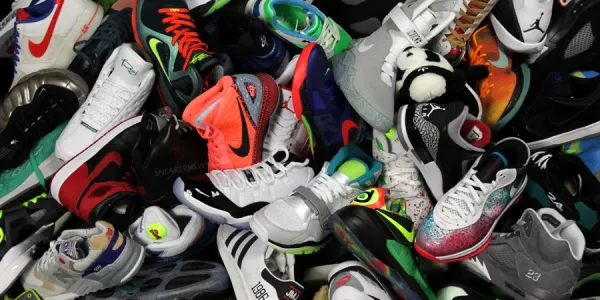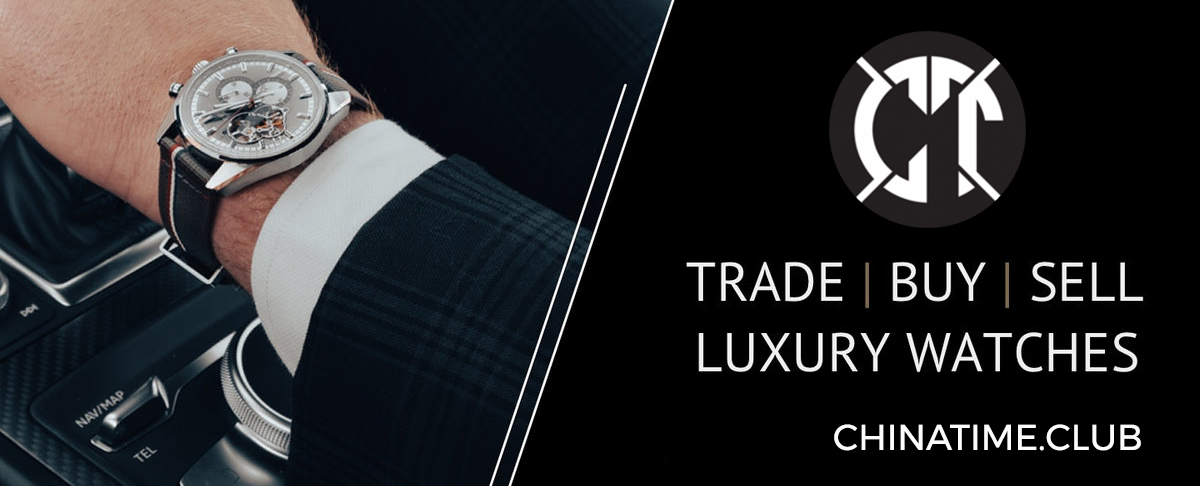Are these the top 100 Nike sneakers of all time?
Since their inception in 1972, Nike has been producing game-changing footwear in every category, even inventing some of their own along the way.
100. Air Fly By U Uptempo
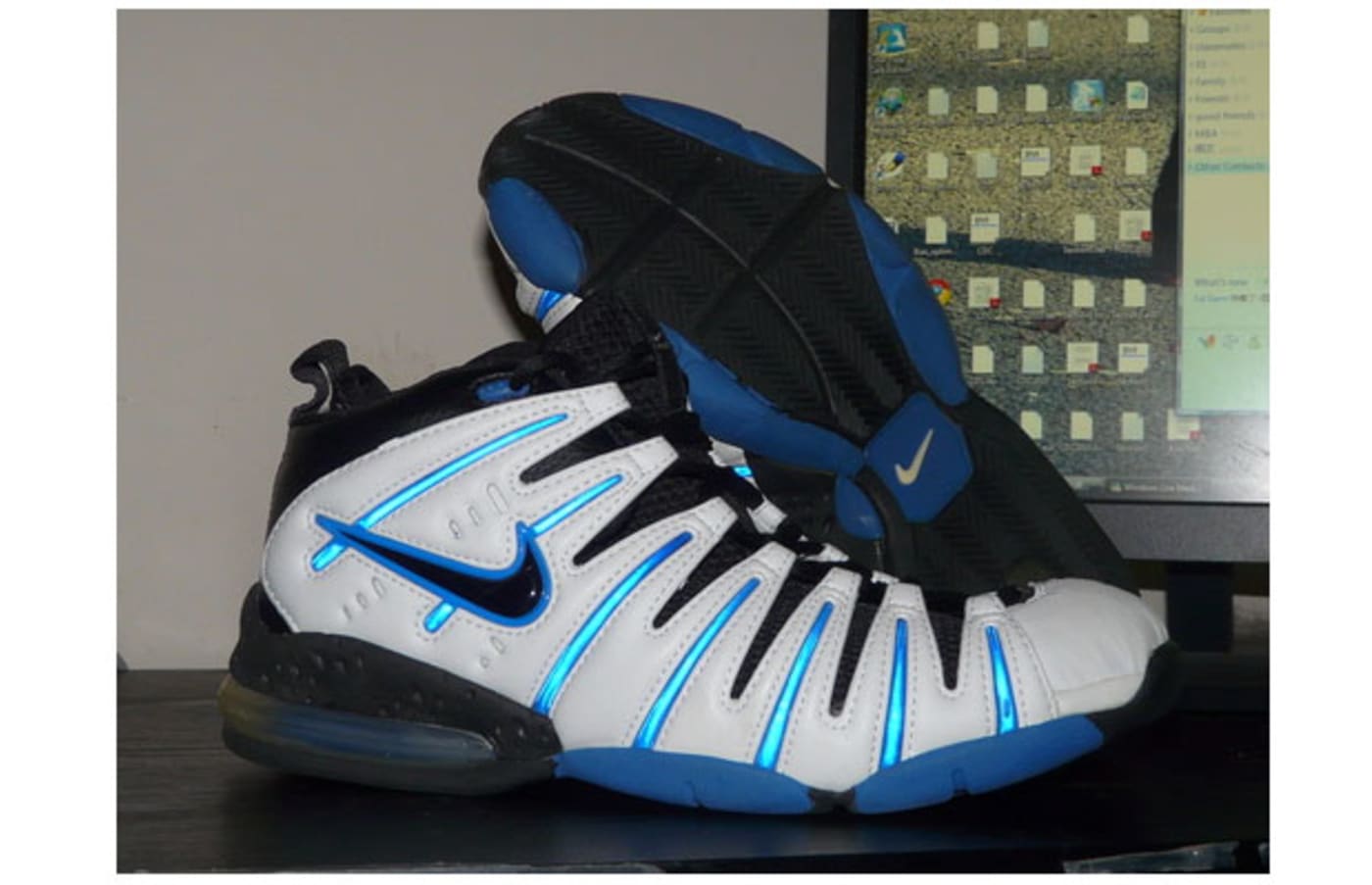
Year Introduced:
If you strip the shroud from the all-new Air Jordan XX8, you’d find something quite similar to the Air Fly By U Uptempo. Despite the unfortunate name, the Fly By U was an ahead-of-its time basketball shoe that probably would have been a much bigger deal if it was someone’s signature shoe. As it is, this might be the only place anyone sees it now.
99. Zoom Haven

Year Introduced: 1999
An under-appreciated gem from the Alpha Project. (Are all Alpha Project shoes under-appreciated?) The Zoom Haven was conceptualized by Richard Clarke, who believed in the potential of a cocoon like shoe for cross training. In some ways, the shoe draws inspiration from the Air Trainer 1. In other ways, it gave a glimpse into a future of lighter weight, composite uppers (think Hyperfuse). The low profile looked fast, the colors crazy, and to this day will inspire envy in those who understand the Zoom Haven’s clout.
98. Air Force III
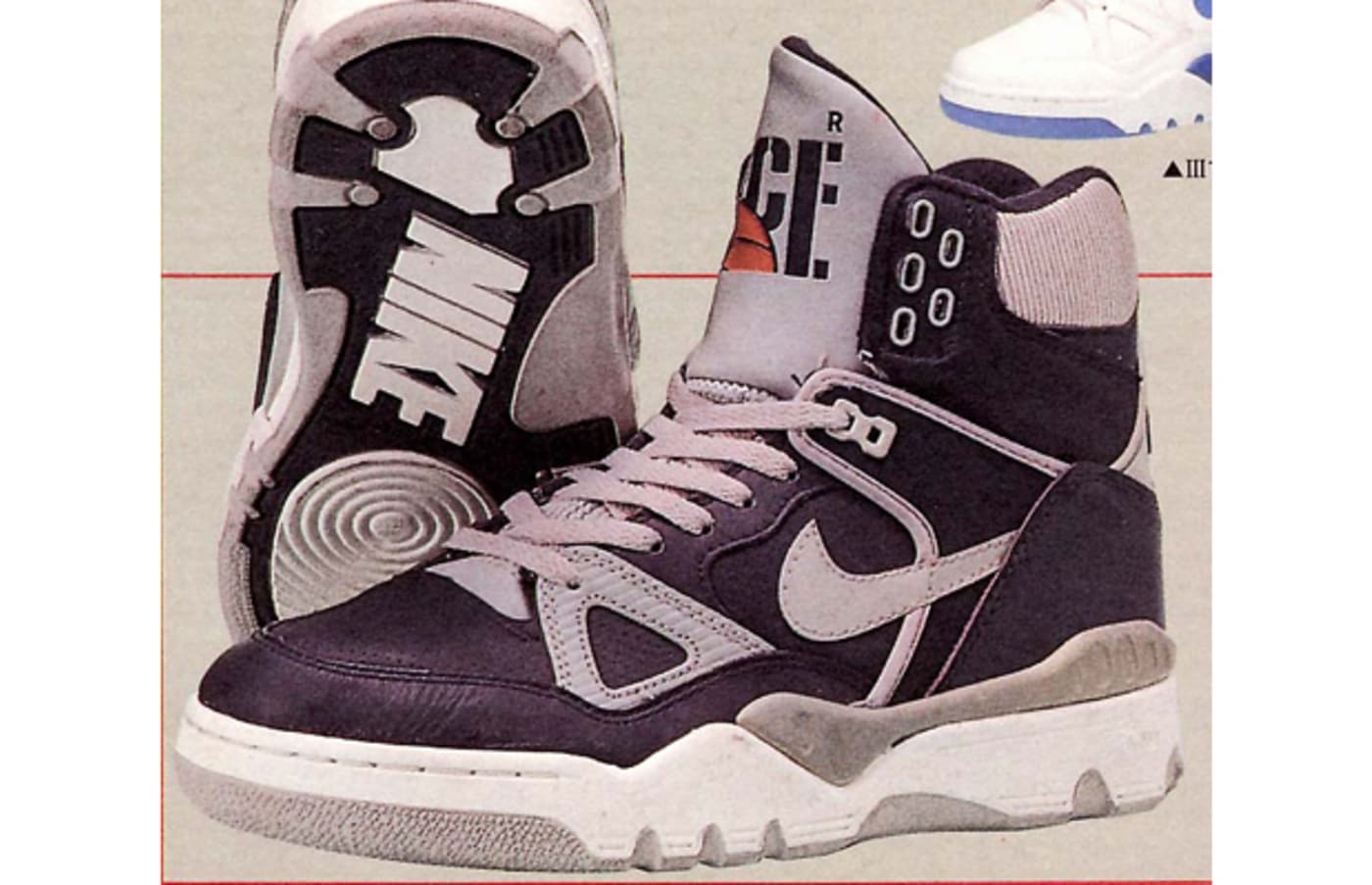
Year Introduced: 1988
The Nike Air Force III was the quintessential bulky ’80s basketball shoe. Worn by most of Nike’s big-man pros as well as several elite college programs, the Air Force III was rough and tough and well-deserving of the Force name. That plastic heeltab with the NIKE AIR on the back was significant on more than just Air Jordans.
97. Zoom JST
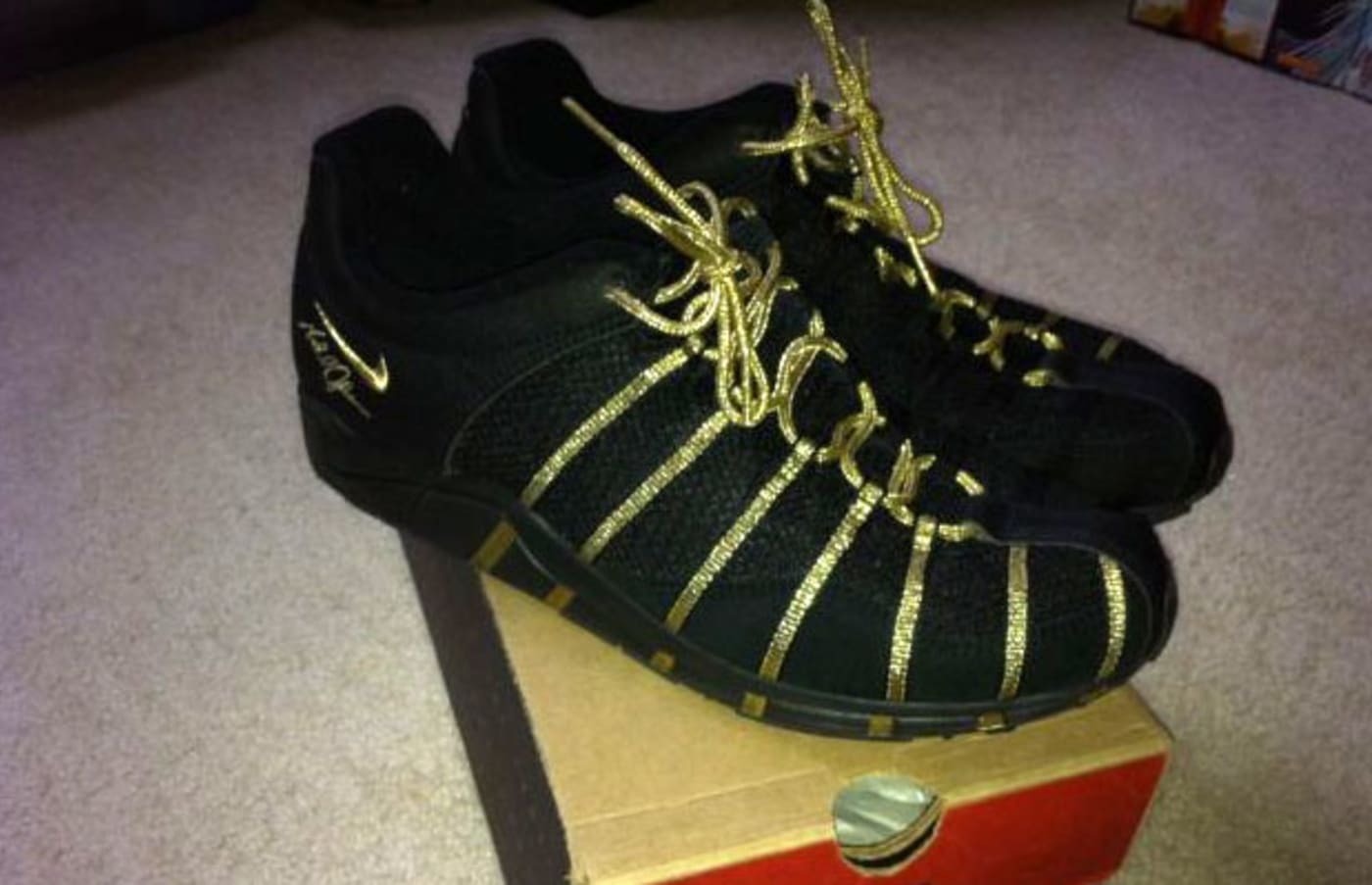
Year Introduced: 1996
Michael Johnson’s off-track answer to his famous gold spikes, the Zoom JST has been all but forgotten – it’s hard to find OG pairs these days, and forget about a retro. The minimalist mesh runner came in any color you wanted as long as it was black, and featured gold accents including Johnson’s embroidered signature. Had these been released in 2012 instead of 1996, they would have blown out of the stores and been on many year-end best-of lists. Worth remembering.
96. Air Force STS

Year Introduced: 1989
Cement print showed up randomly on some special edition shoes in the late ’80s, but the only Nike basketball shoe outside of the Air Jordan III that featured it as a regular design element was the Air Force STS. And seeing that the hightops were worn by the likes of Derrick Coleman and David Robinson, they got their share of shine.
95. Zoom Hyperfuse
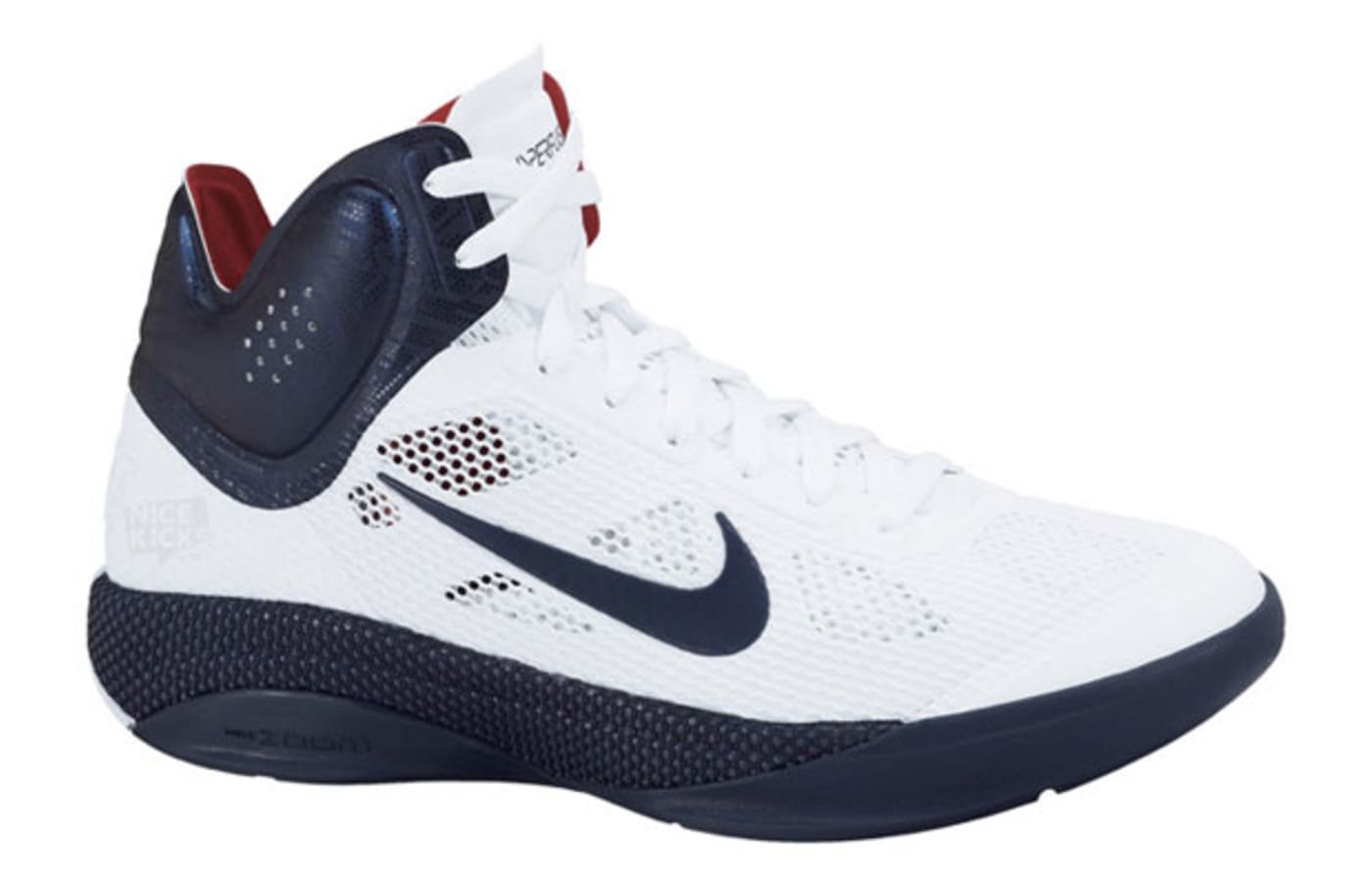
Year Introduced: 2010
One of Nike’s most important recent basketball designs, the Zoom Hyperfuse draws inspiration not from the NBA hardwood but the streets of China. Shane Kohatsu, an Innovation Kitchen designer, noticed players there were partial to mesh running shoes, and immediately understood the ramifications for breathability. Back in Beaverton, Kohatsu developed a shoe employing a composite material that blended breathability, durability, and stability. Hyperfuse was born. Lightweight hoops shoes changed forever.
94. Air Challenge LWP
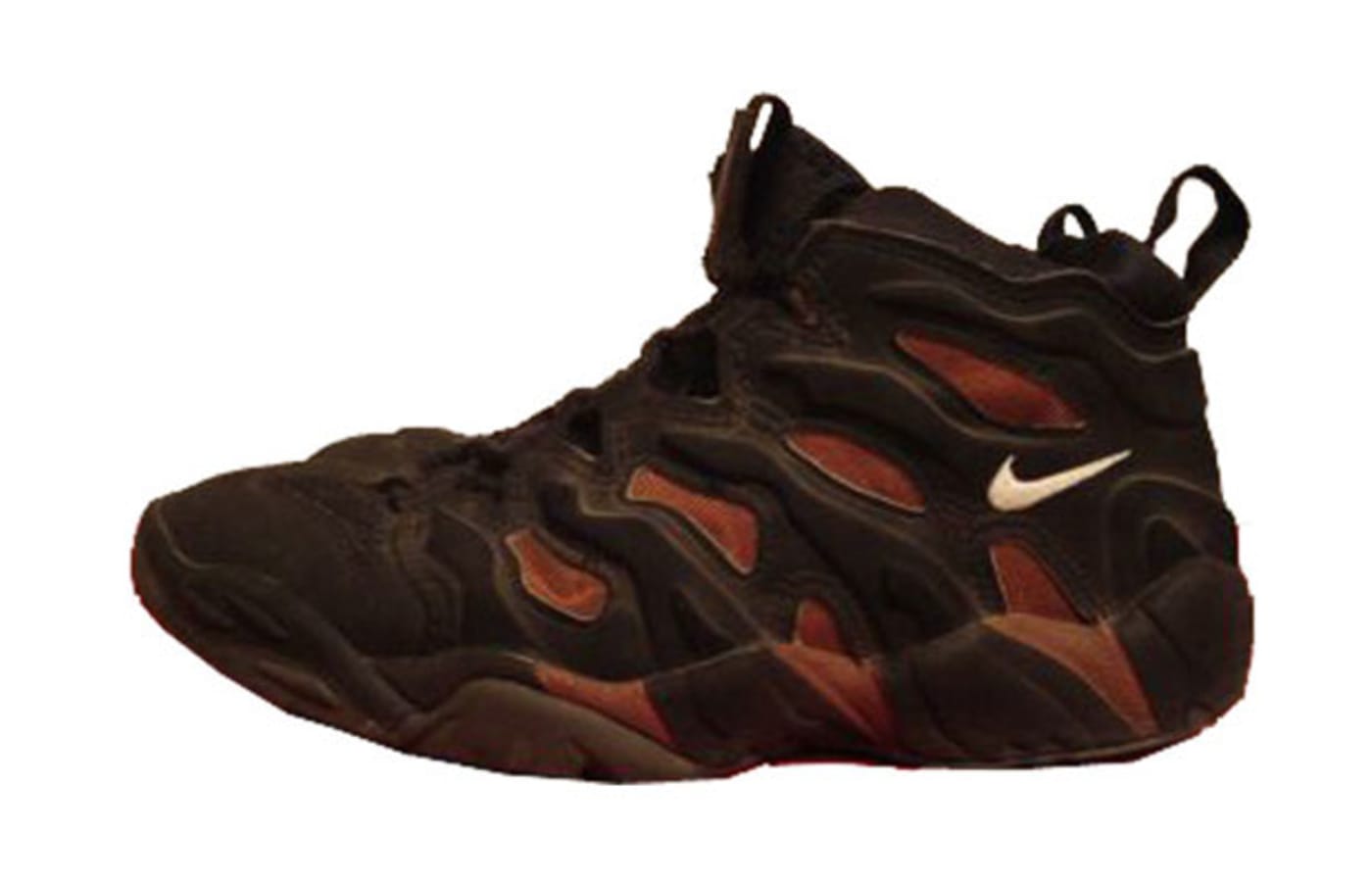
Year Introduced: 1995
The tennis variation of the LWP series, the Air Challenge LWP, was one of the sneakers made popular by Andre Agassi. Like others in the Light Weight Performance series, these were leaps and bounds ahead of their time. Heel and forefoot Air cushioning and a Phylon midsole, made them beasts on the court. We wouldn’t be hurt if these got some retro love from Nike Sportswear.
93. Air Jordan VIII
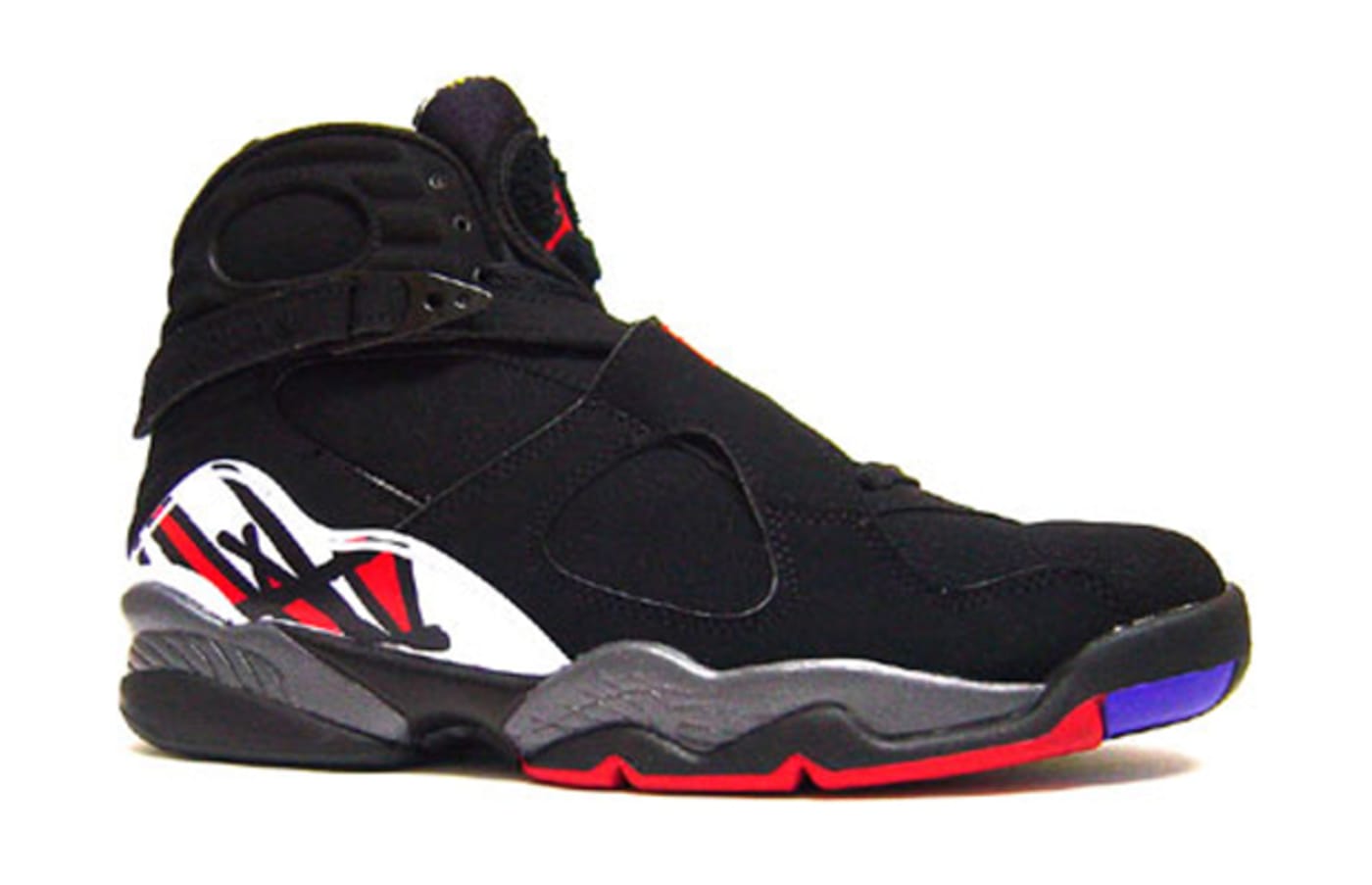
Year Introduced: 1993
If a good Air Jordan is meant to be polarizing, the Air Jordan VIII must have been one of the best. Tinker Hatfield followed up his minimalist Air Jordan VII with a plush monstrosity (to some, anyway) that featured cross-straps borrowed from the Air Raid and a carpeted patch on the tongue. Mike won his third title in these – then abruptly retired. Was it the shoes?
92. Zoom Talaria
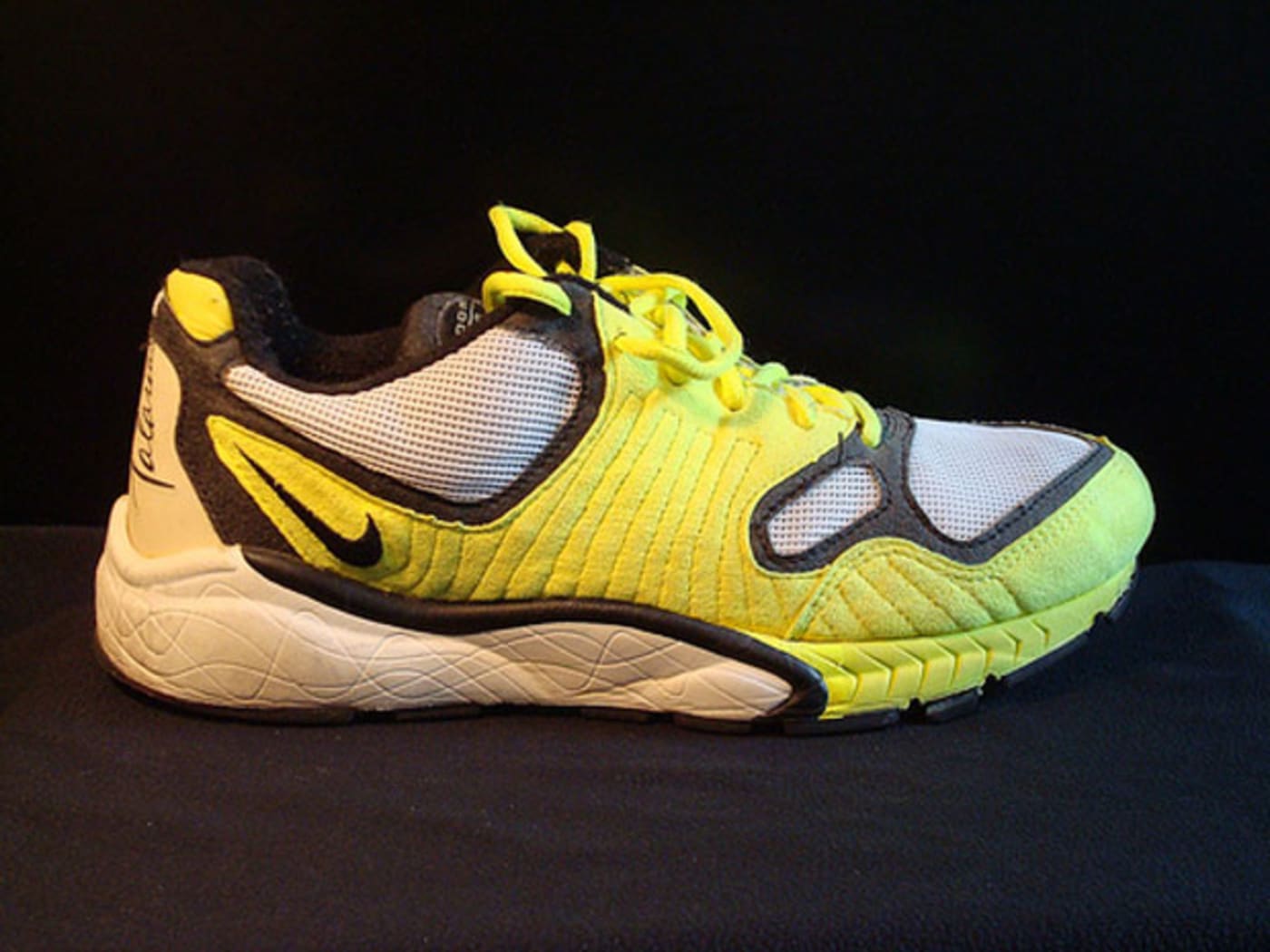
Year Introduced: 2004
A classic from the early days of Zoom Air, the Talaria was a pure performance runner that found its true calling on the streets. The tennis ball yellow upper was genius, as was the flame fade on the outsole. For some reason the Talaria has only been reincarnated as a boot, which does a disservice to all involved.
91. Air Max Plus
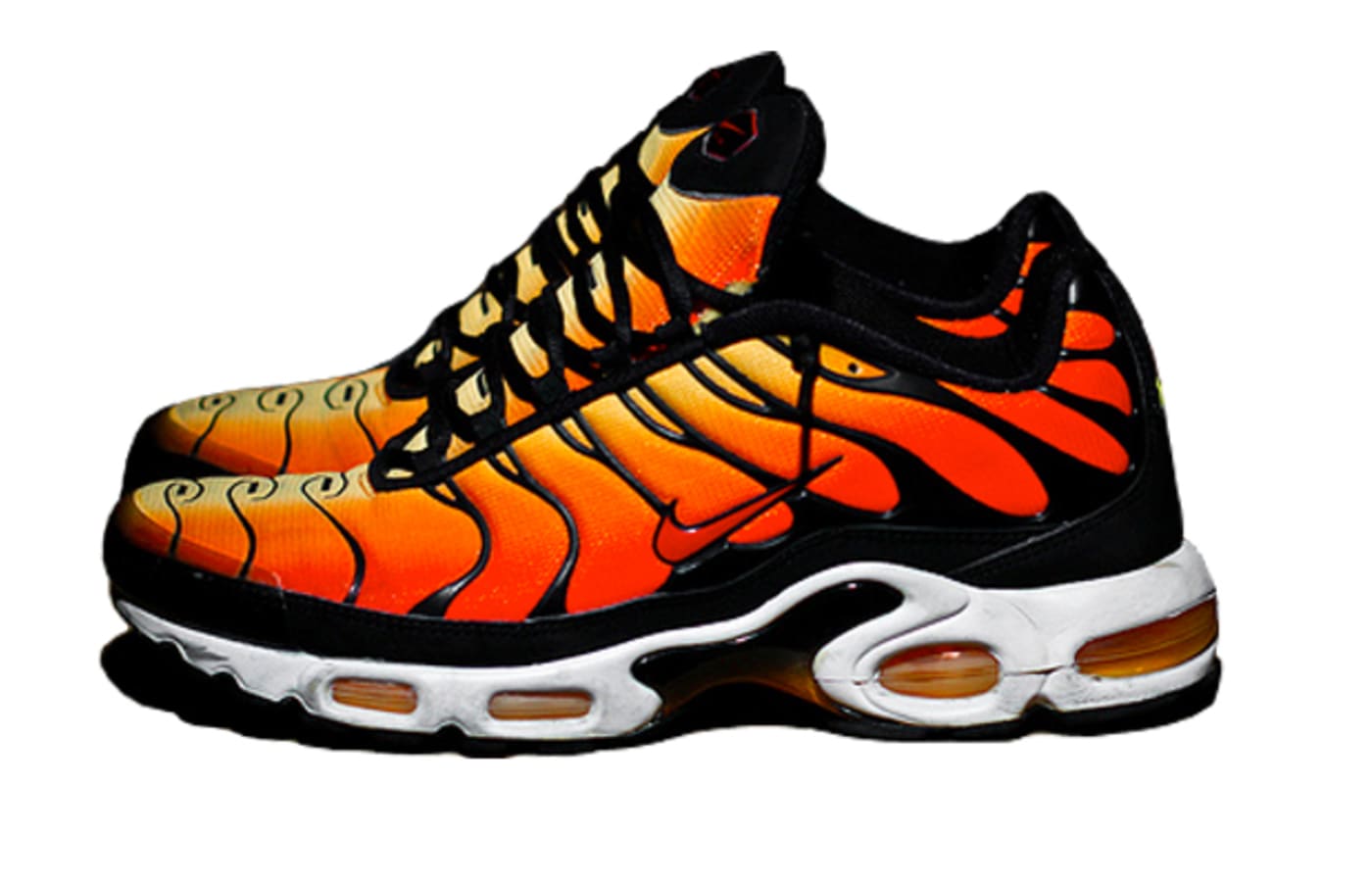
Year Introduced: 1998
The Air Max Plus TN, that’s Tuned Air for those interpreting at home, was so popular during its initial release year of 1998, it pretty much out-shined the signature Air Max runner that year. Dedicated Air Max ‘heads may disagree, but the Tuned Air technology found its way into other sneakers of the time, word to the KG III, and it all traced back to the Air Max Plus.
90. Air Max 2009

Year Introduced: 2009
Sneakers were certainly mainstream by the time Nike rolled out the Air Max 2009 but even if you were into sneakers all your life, you’d been waiting to see the Air Max 2009. The Air Max 2009 was the first Nike to feature a full-length visible Max Air cushioning system without any supportive bracing. The technology made its way into all sorts of Nike subsidiaries and is still a major part of the signature Air Max line today, which says a lot for how significant this sneaker is. Oh, and something called Flywire showed up on the Air Max 2009. You might have heard of it before.
89. Epic
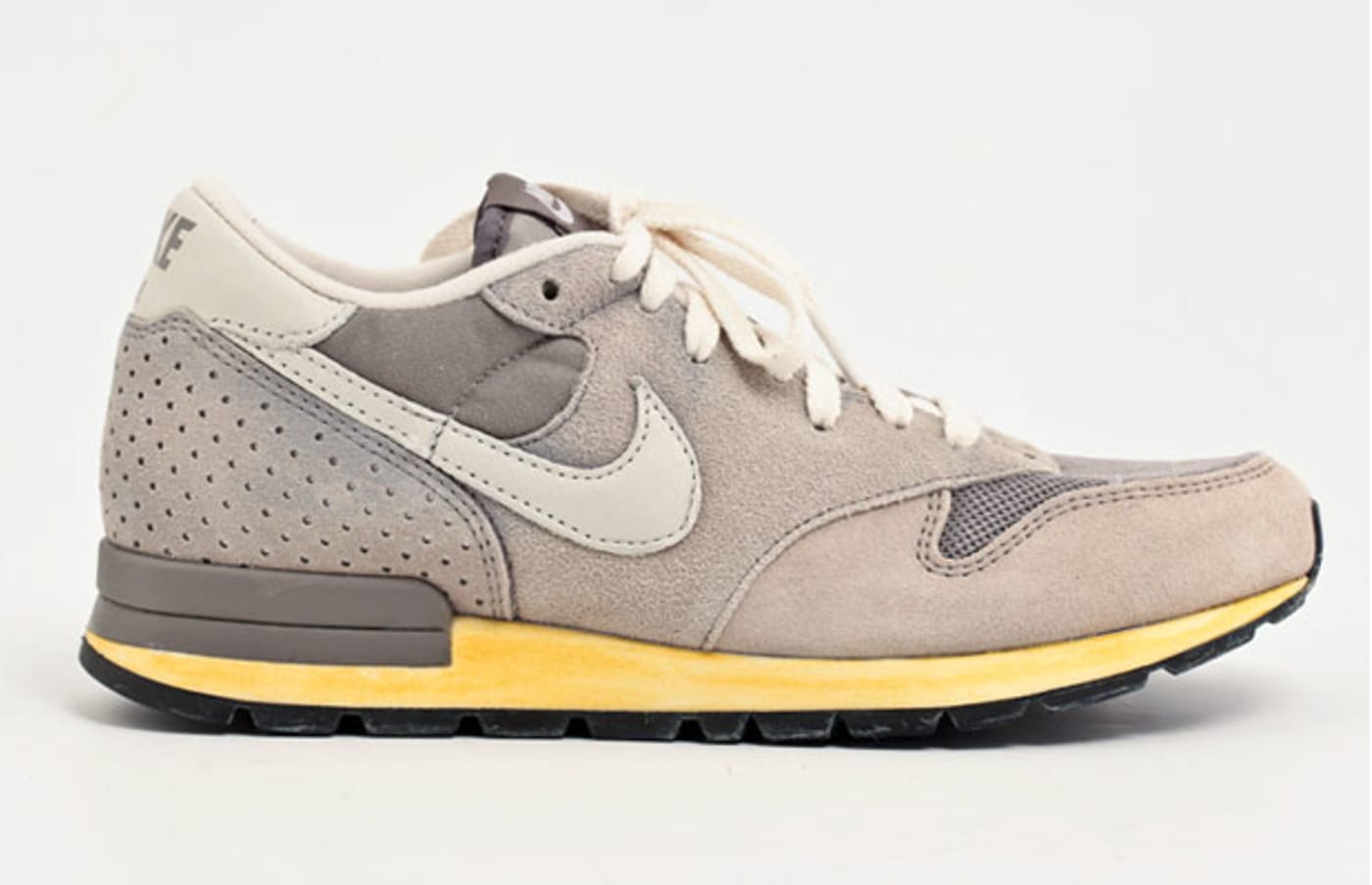
Year Introduced: 1985
The Air Epic would have been just another high-tech runner in Nike’s seemingly endless parade of them if it wasn’t for one small detail. The suede heel counter was perforated, revealing a galaxy of reflective 3M dots. Useful for runners who put in their miles at night, the reflectivity also added a bit – but not too much – of casual flash.
88. Terra Sertig
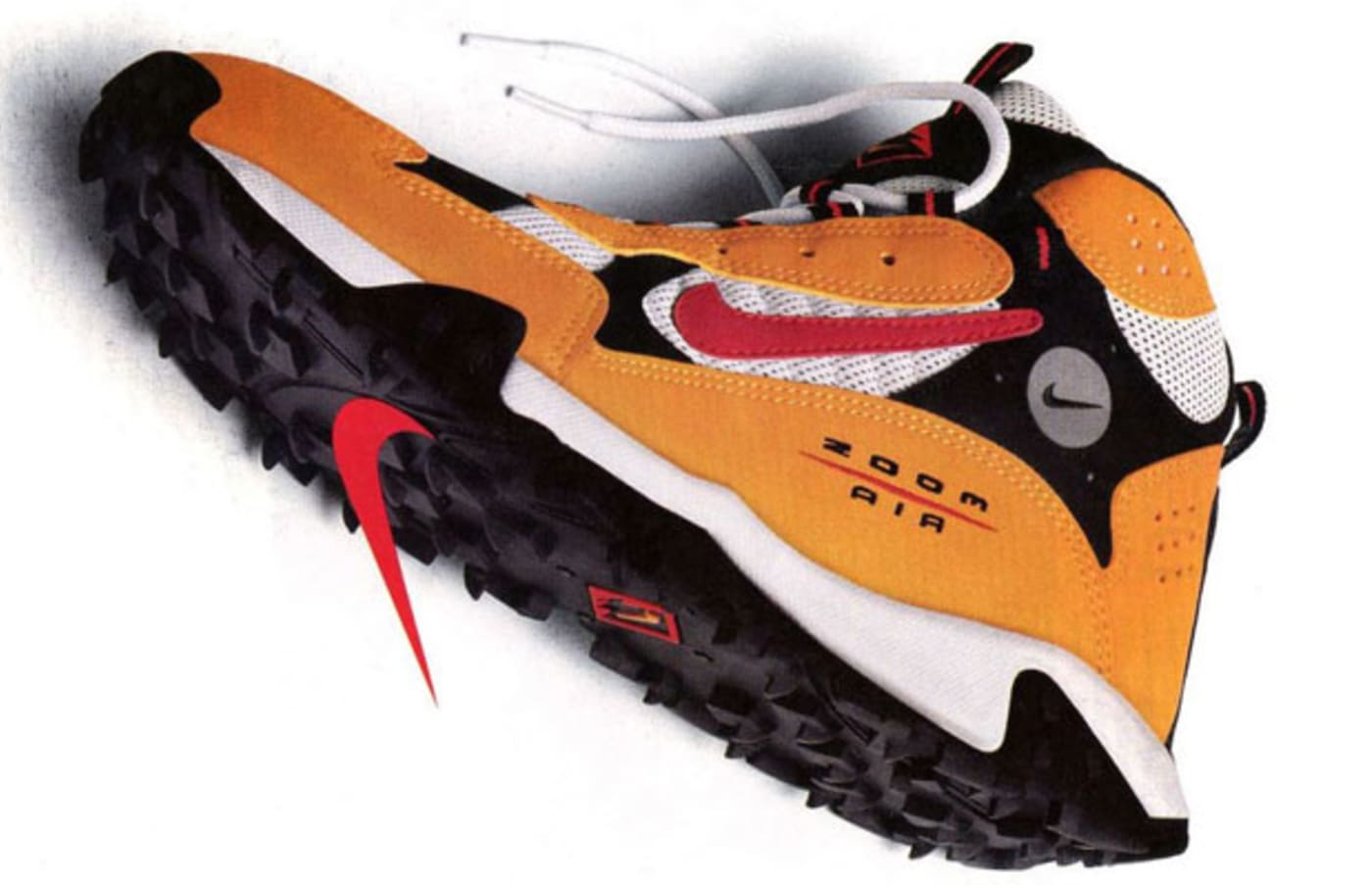
Year Introduced: 1998
Forget Timberlands and Vasques, the bright yellow Zoom Air-equipped Terra Sertig was the ultimate in outdoor-based urban footwear. The Humara’s big brother wore yellow before Lance Armstrong, and was just as ruthless in dispatching its competition. There’s since been a 360 Air retro version, but the OGs were perfection.
87. Air Max BW
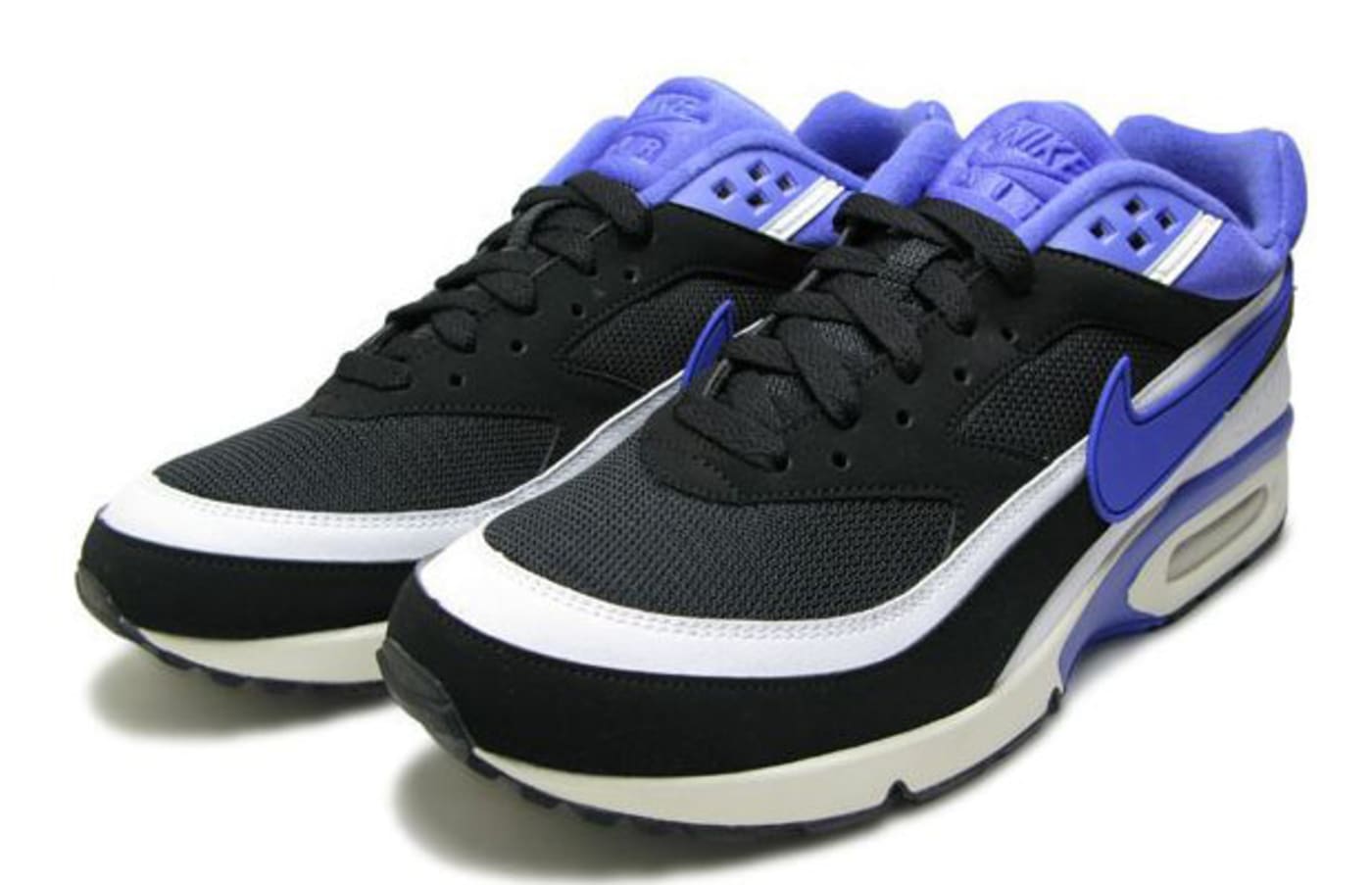
Year Introduced: 1991
The Big Window Air Max came out in 1991, right on the heels of the Air Max 90 but the Air Classic BW features a bigger Air cushioning unit, it’s design also accentuates the visible Air bubble. The Persian Violet colorway may be the most memorable but when 3M gets placed around the “racing stripe” the Air Max BW really shines.
86. Air Tech Challenge III
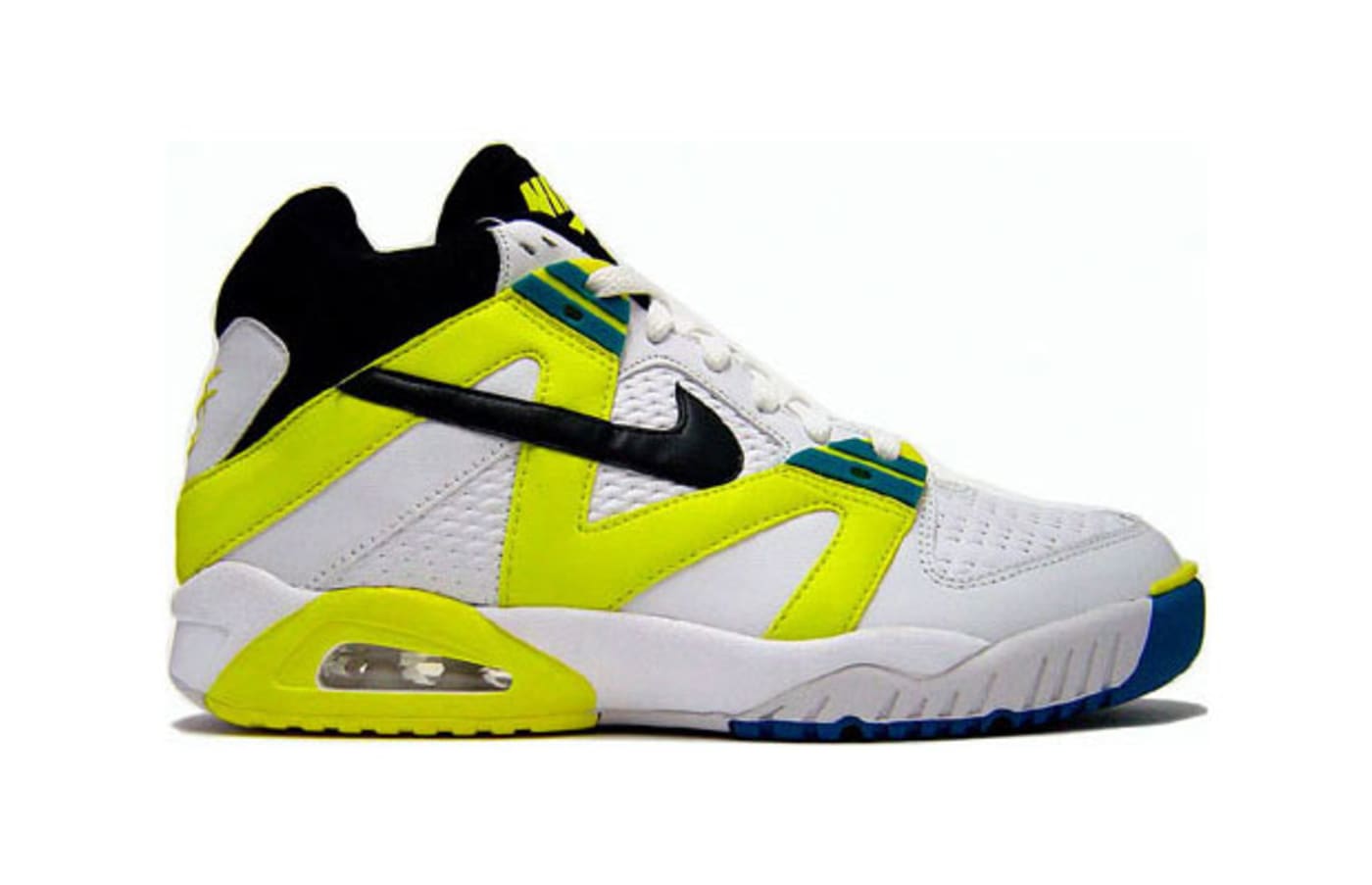
Year Introduced: 1990
More neon! The Air Tech Challenge III picked up where its predecessor left off, only more so. Rock and roll tennis was here to stay, and if competitors wanted to keep up with Andre Agassi, they were going to have to wear shades. Unlike predecessors like Stan Smith (or contemporaries like Pete Sampras) who were content to spend their entire career in the same sneaker, Agassi played in a new model each year – good for us.
85. Air Flight One

Year Introduced: 1994
The Nike Air Flight One is one of the only non-Air Jordan sneakers MJ ever wore on the court. One of Penny Hardaways early sneakers, the Air Flight One remained on the “when is Nike going to bring that back?” list until earlier this year. Needless to say, this 1994 model’s comeback made more than a few ‘heads happy.
84. Air Solo Flight
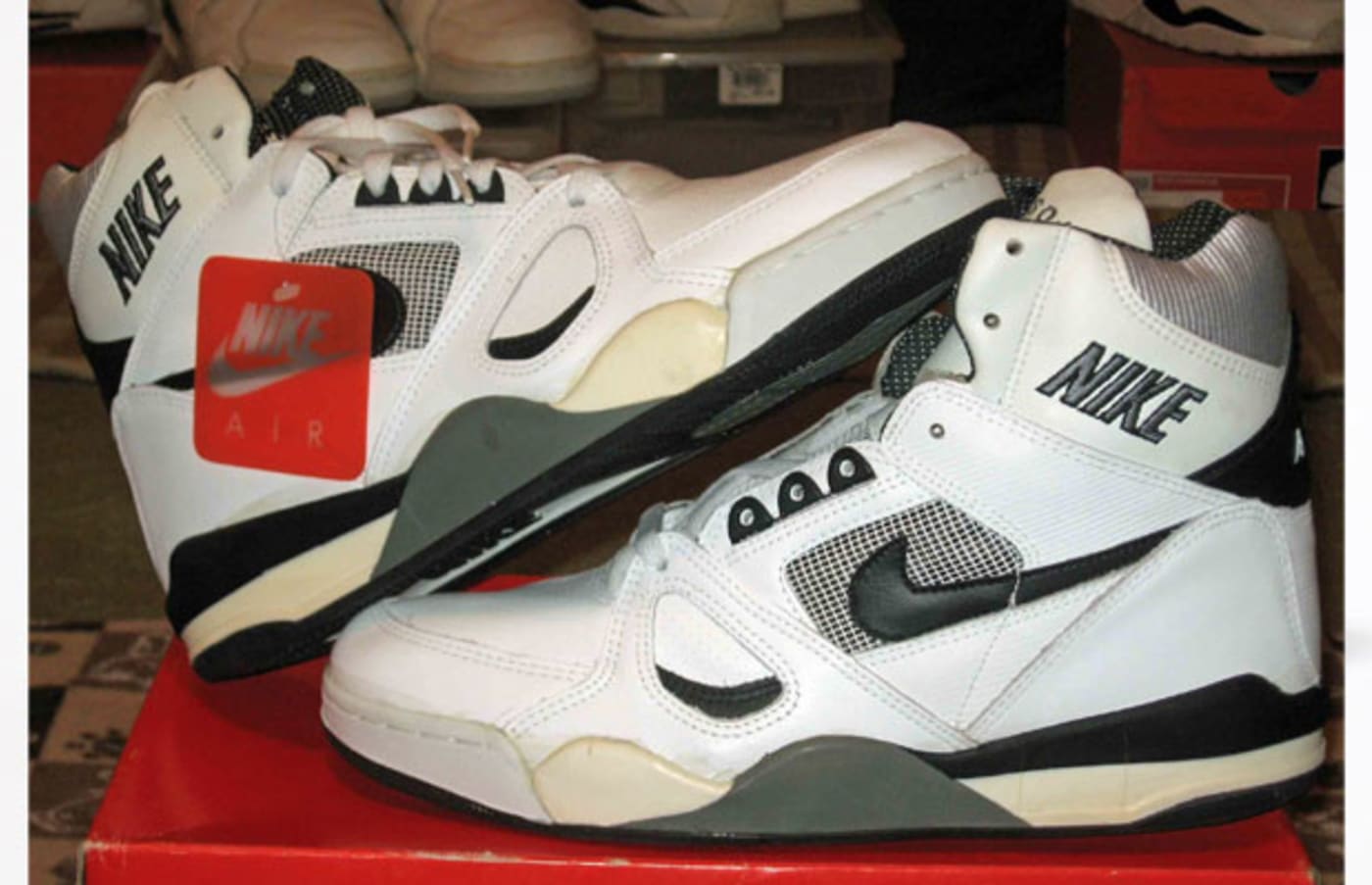
Year Introduced: 1989
While technically a takedown of the flagship Air Flight, the Solo Flight was a basketball shoe that more than stood on its own merits. It didn’t have the coveted Visible Air bag, and it replaced some of the leather with mesh, but it still featured the iconic “Flight” script on the tongue and the same high cut. And it was worn by college and NBA stars alike, which meant the status was still intact.
83. Terra Humara
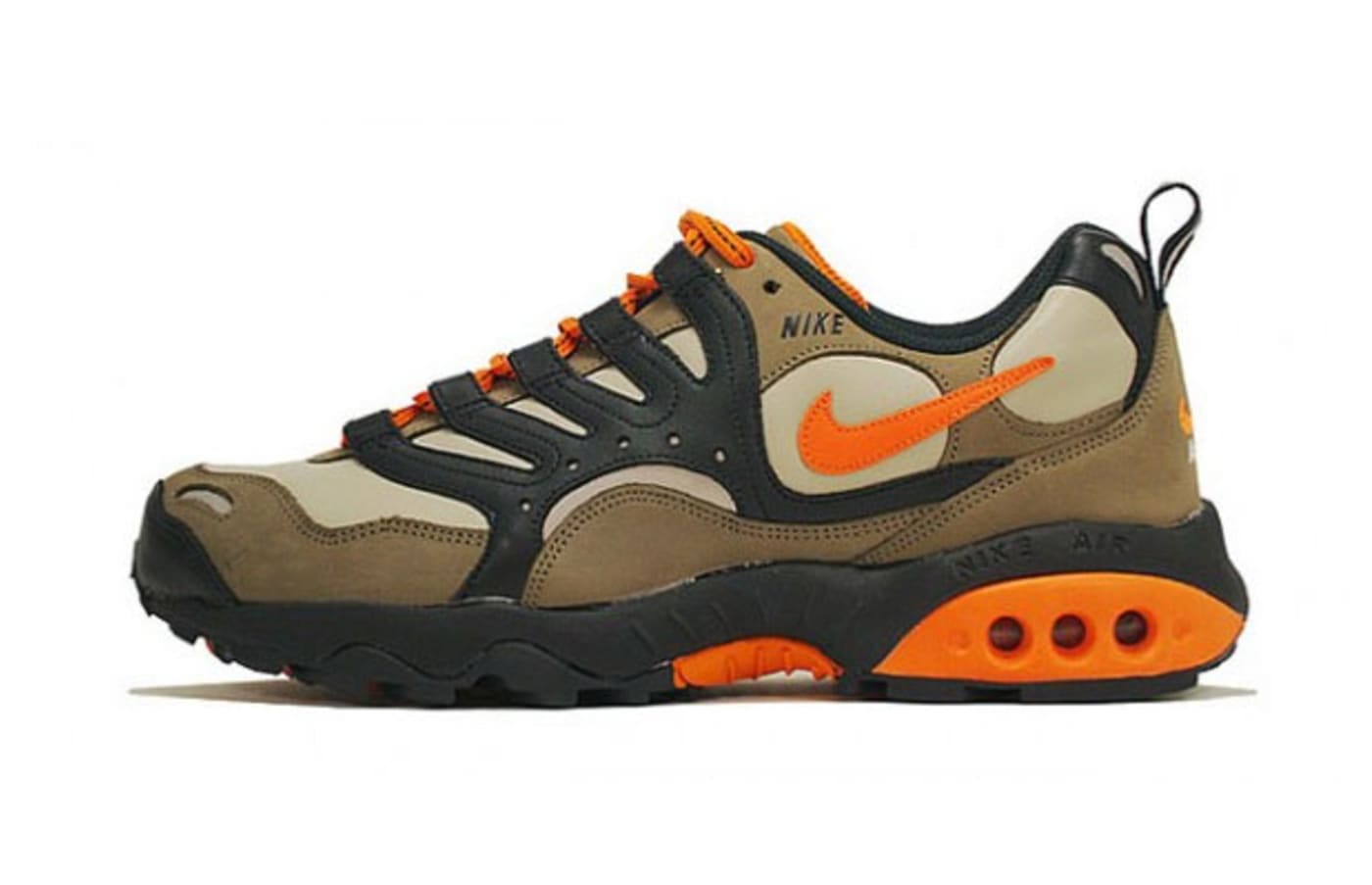
Year Introduced: 1998
Design for the trail and anointed a classic on the streets, the Terra Humara features distinctive eyelets and a big, bold air bubble. Few models are as adaptable to color-thanks to awesome material blocking-and original makeups were must-haves without any undue Internet hype.
82. Eric Koston 1
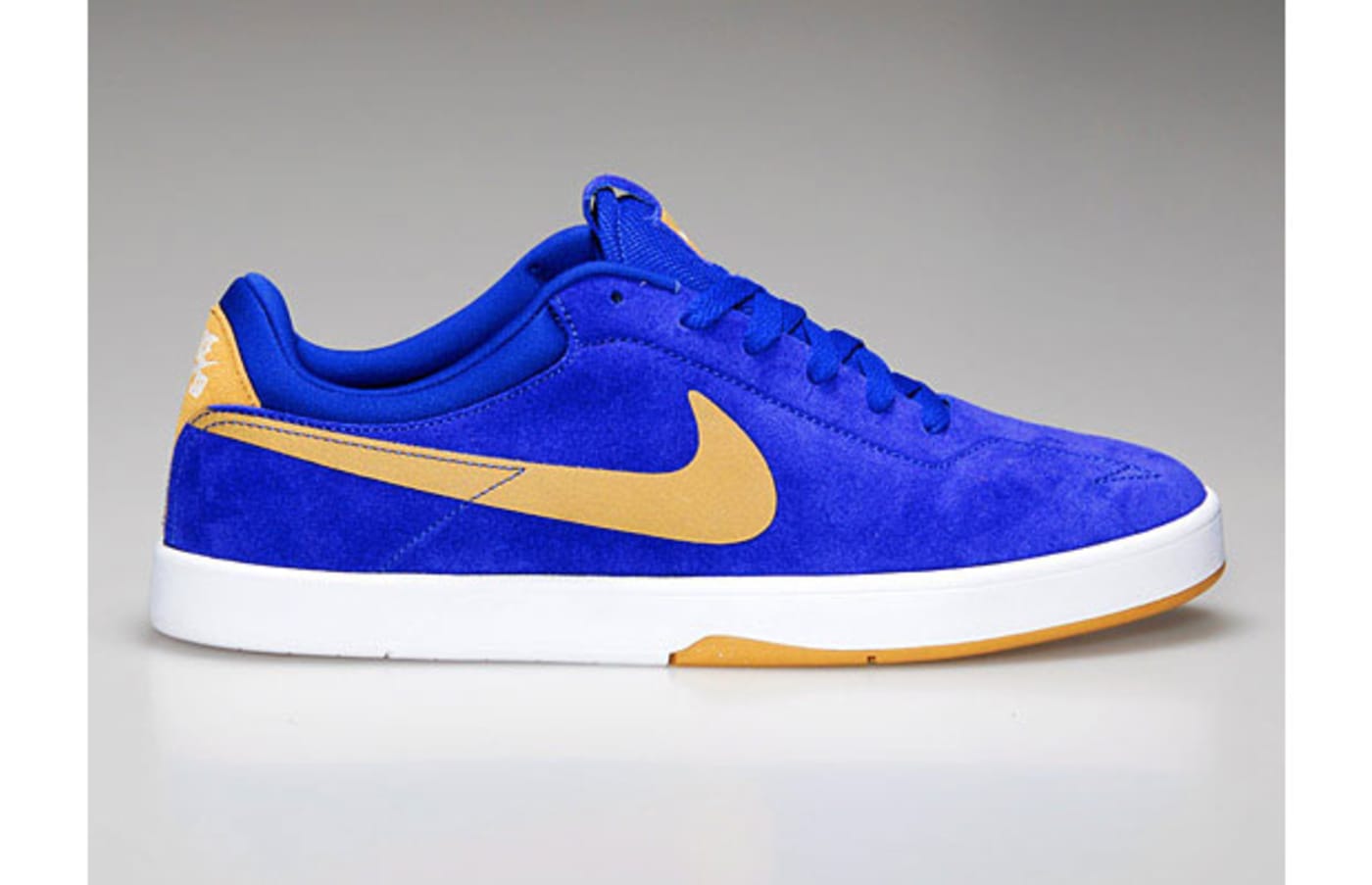
Year Introduced: 2011
Eric Koston’s move to Nike excited sneakerheads and a certain fervor built up as anticipation of the first true signature shoe developed. Design Shawn Carboy hit the nail on the head. Skipping out and out flash, he created a timeless, sleek silhouette based loosely on the Bruin, and embedded Lunarlon foam into the sockliner. Just like that, classic skate and contemporary running technology merged.
81. Air Carnivore
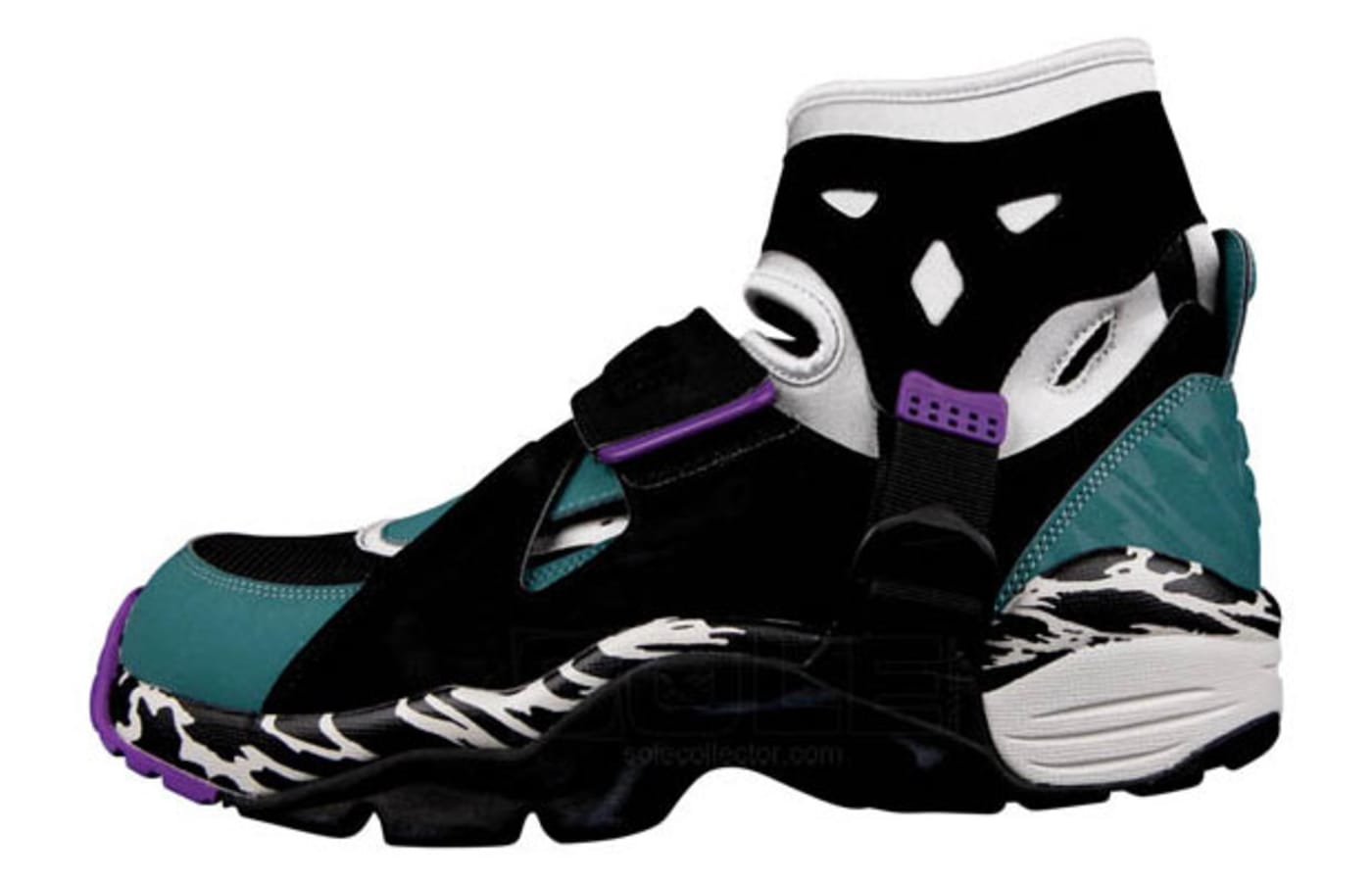
Year Introduced: 1993
The Air Carnivore doesn’t have the continued lineage of technology that some of the other Nike sneakers on this list do, but it’s laceless strap system is nothing to be taken lightly. If you grabbed a pair of these back in 1993, or even when they returned in 2010, big ups. This is the type of sneaker that will have non-sneakerheads taking notice on the street.
80. Rift
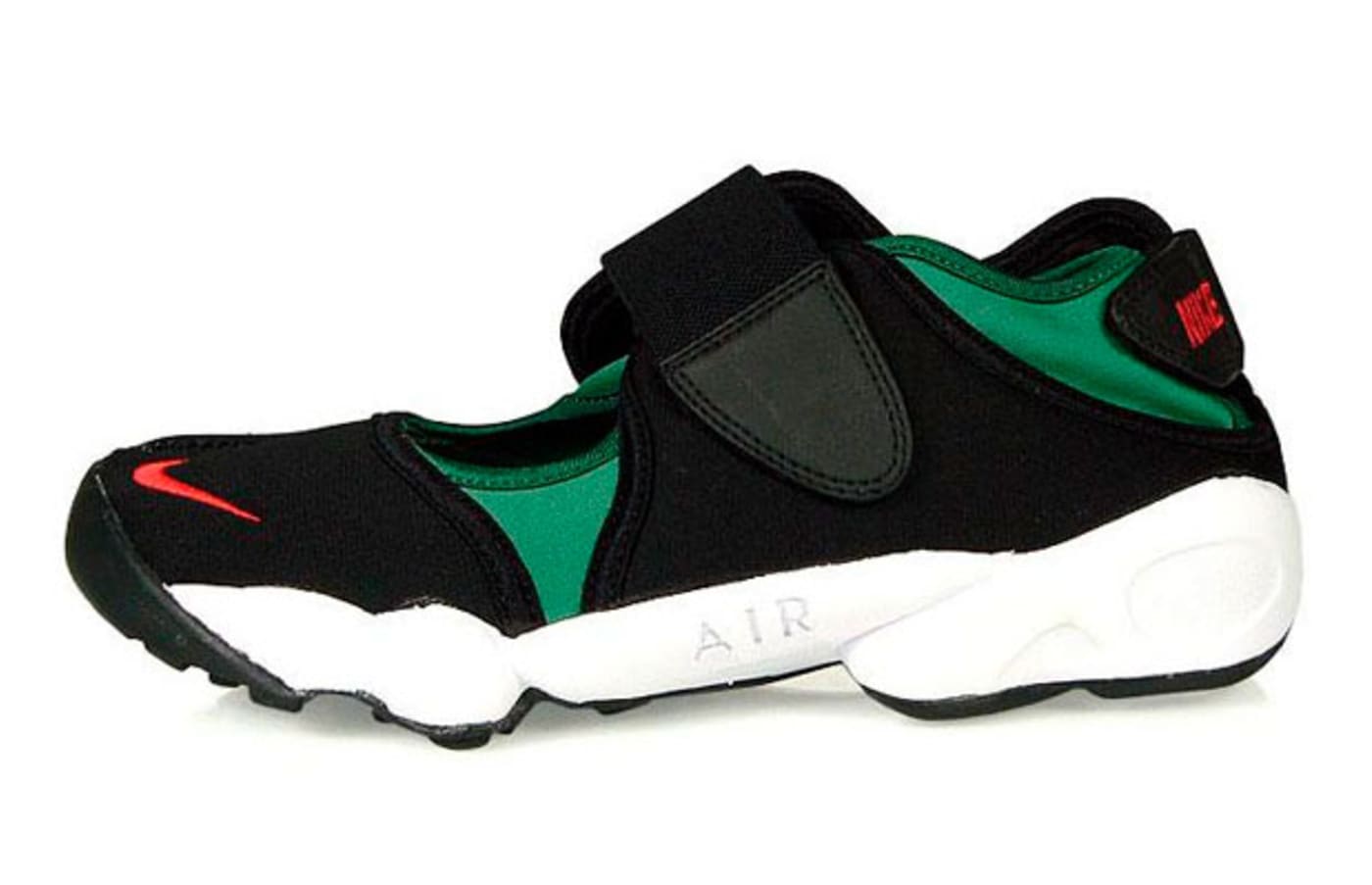
Year Introduced: 1995
The split-toe Rift evoked many things, from ninja assassins to goats. It wasn’t every man who could comfortably slip on a pair of Rifts and face his friends. But what with the rise of the minimalist running movement and the Vibram Five Fingers (and its many imitators), the Rift looks more and more intelligent with every passing day.
79. Court Force

Year Introduced: 1987
The Nike Court Force was historical jetsam, just another takedown (admittedly, one that Michael Jordan wore in a famous photo shoot) until noted streetwear godfather Hiroshi Fujiwara rescued it from obscurity. The “H” in HTM recognized the Court Force not as a sneaker you got when your mom wouldn’t spring for Air Forces, but as an elegant design in its own right. Removing the price tag bias helped the Court Force find new life in several collabs, including several from Stüssy alone.
78. Air Footscape
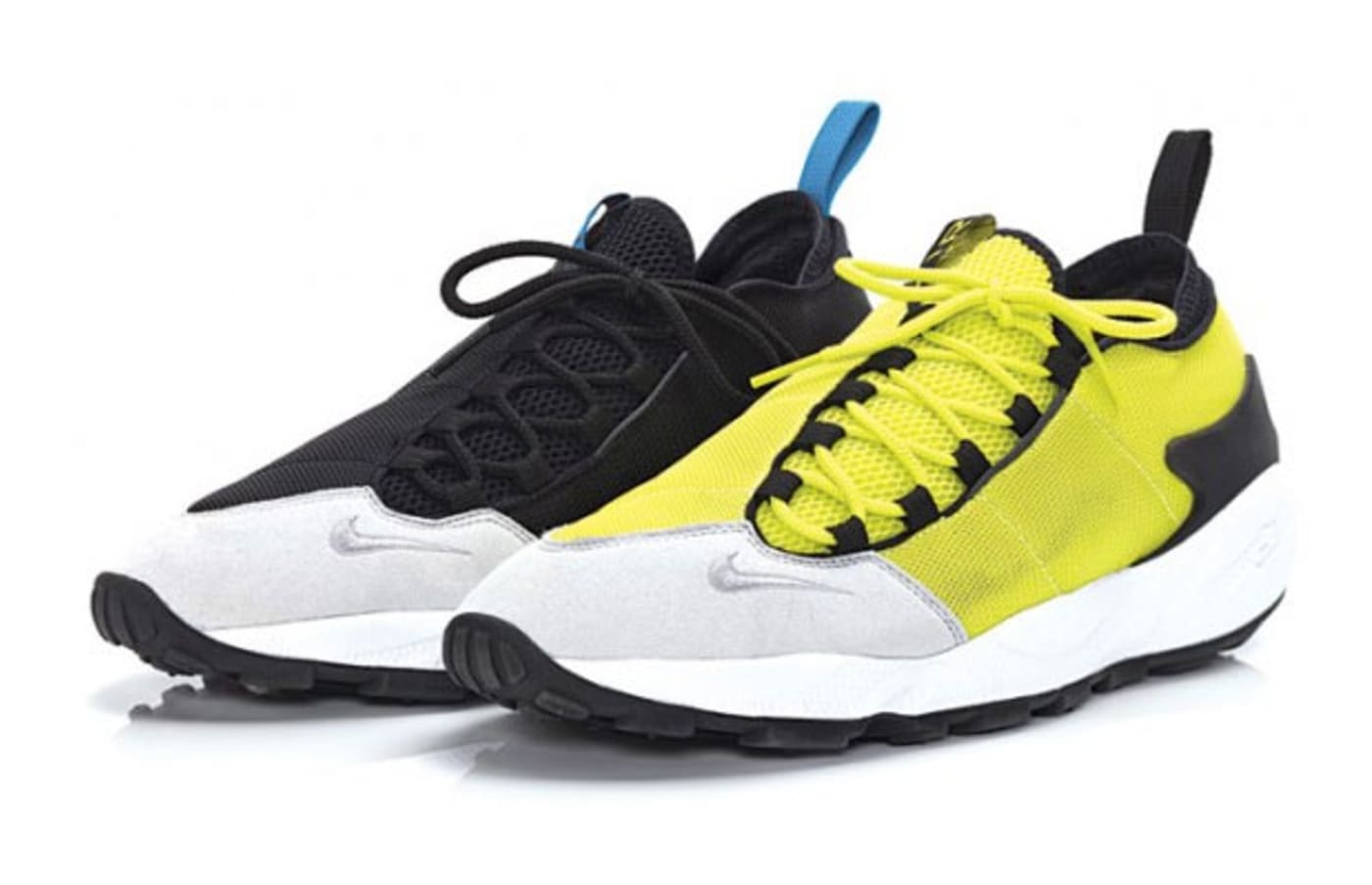
Year Introduced: 1995
With the Air Rift and the Footscape, 1995 was a crazy year for Nike running. The Footscape utilized an asymmetrical lacing system that worked more fluidly with the shape of the foot, and made for a seriously distinct silhouette. Brought back in chukka (and woven) form, the original has a purity that the updates lack.
77. Air Flow
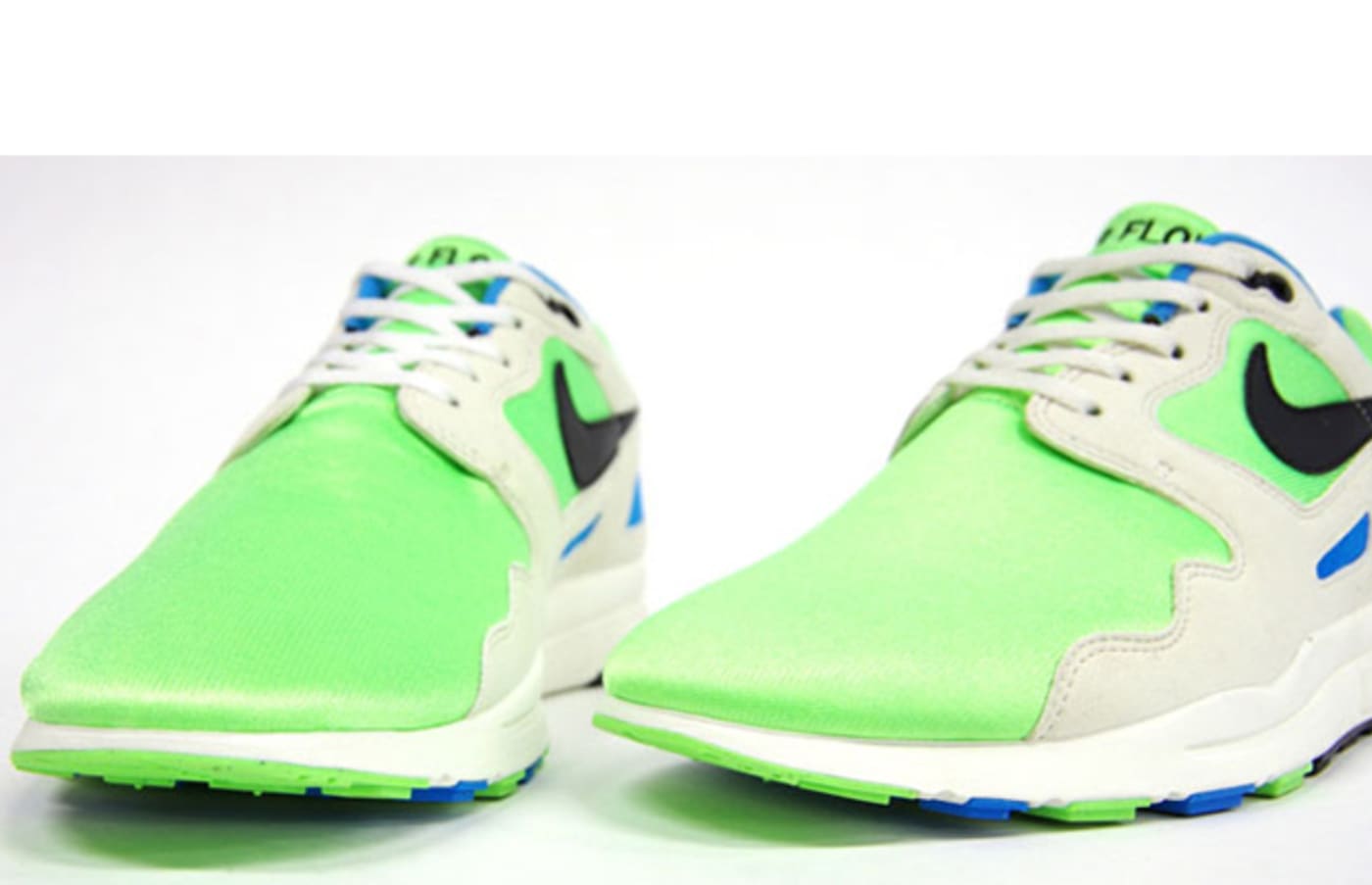
Year Introduced: 1989
The Air Flow nearly out-Huarached the Huarache. The primarily neoprene upper featured a smooth toebox placed on a somewhat traditional wedge running sole, and no doubt inspired much of Nike running to come. But more importantly, it was a shoe that stood out on its own.
76. Air Jordan IX
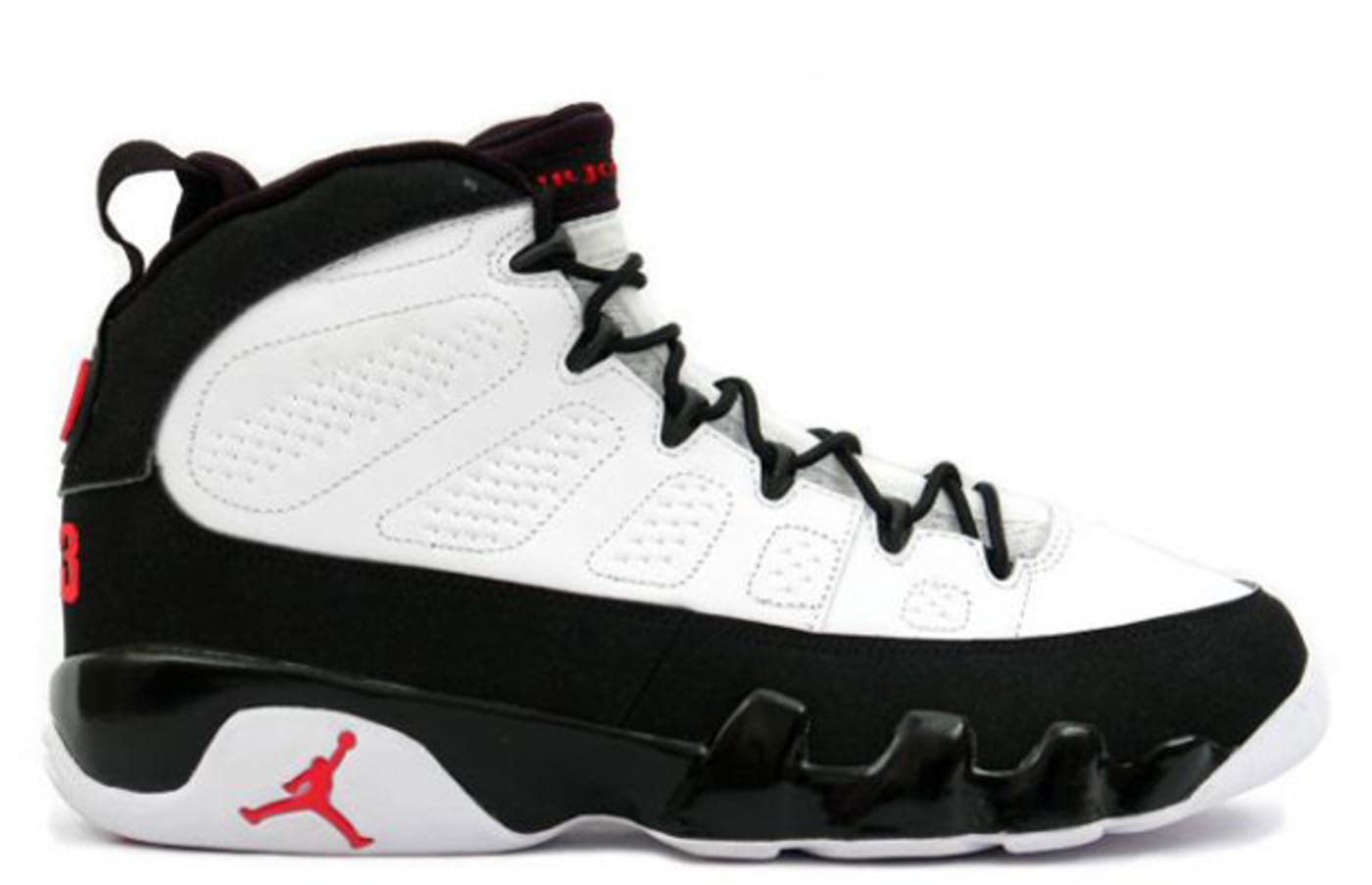
Year Introduced: 1994
Michael Jordan played in the Air Jordan IX – the problem is he played baseball in them. The design foreshadowed the Air Jordan XI, and the details celebrated Mike’s worldwide appeal, with messages in different language on the outsole. One of them should have said “GO BACK TO THE BULLS, PLEASE.”
75. Waffle Racer
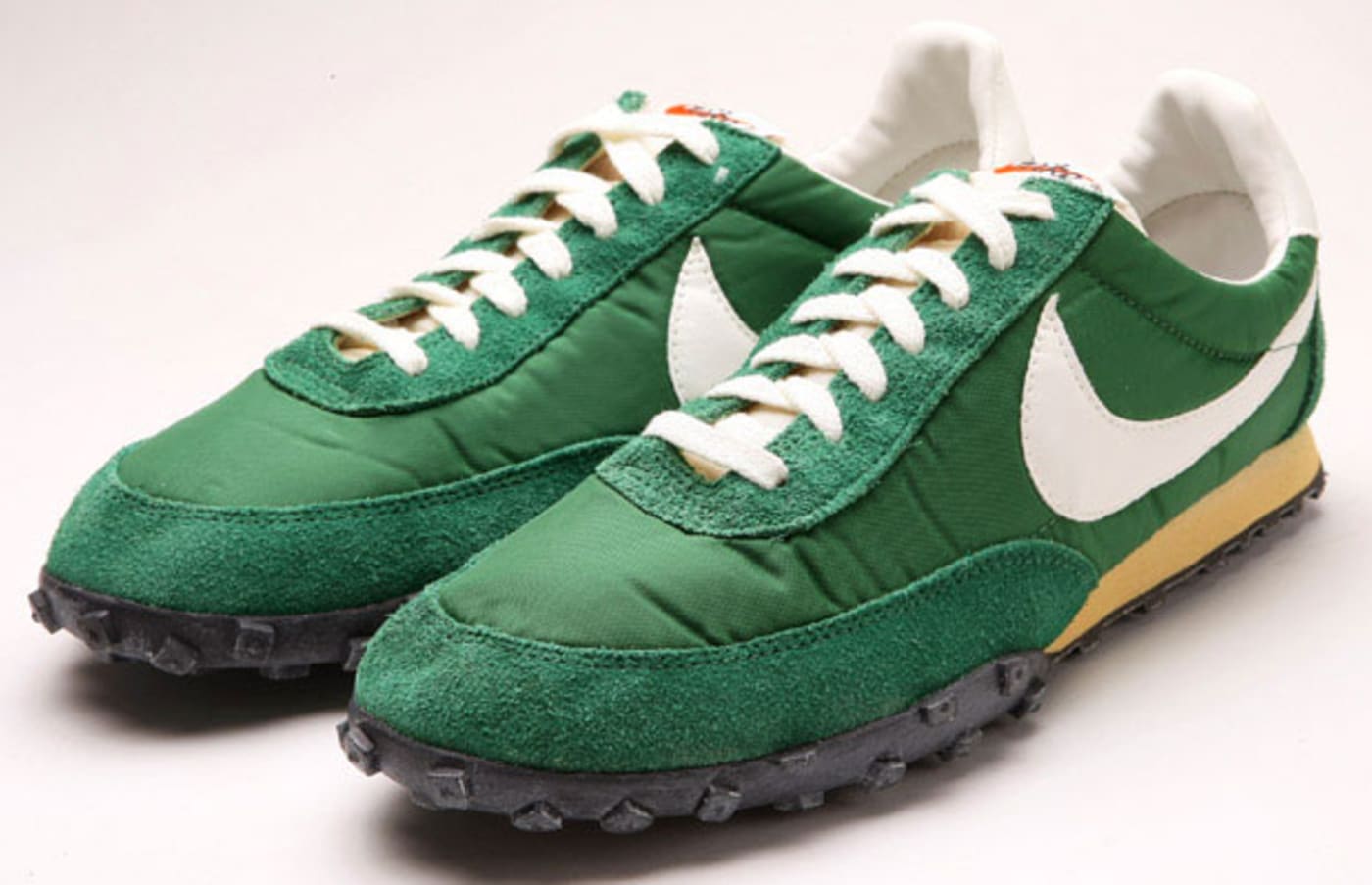
Year Introduced: 1973
Bill Bowerman famously destroyed his wife’s waffle maker (and eventually his health) experimenting with different traction patterns, and the Nike Waffle Racer – a track spike without the spikes – was one of his greatest achievements. Before the advent of the Cortez and the extra-cushioned heel (which paved the way for Air Max and Shox), Bowerman crafted sleek runners that are perfectly suited to today’s minimalist trends. The coach was always ahead of his time.
74. Zoom KD2
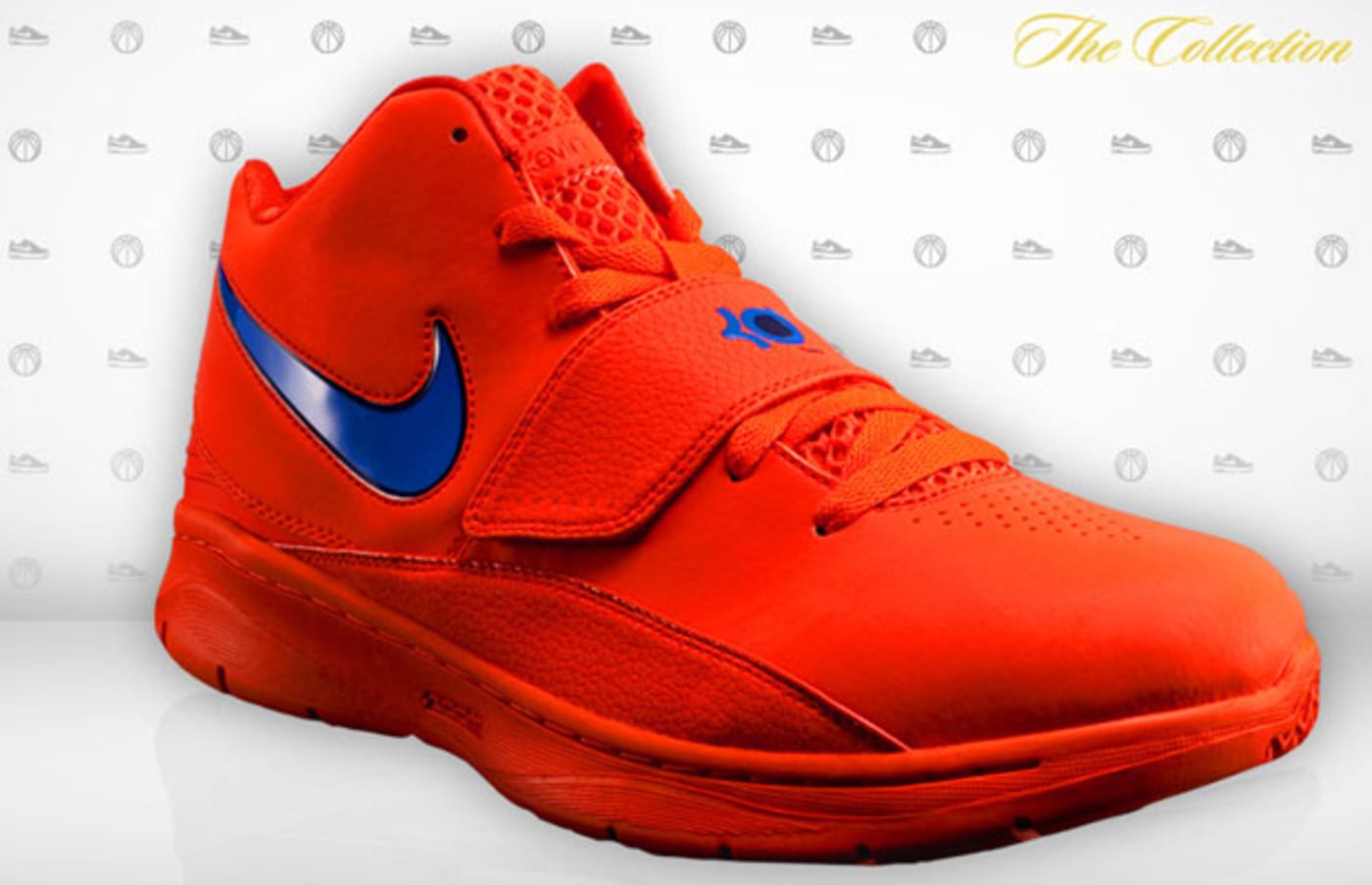
Year Introduced: 2009
Kevin Durant is the future of Nike Basketball. LeBron and Kobe will hang it up before he gets done fighting for rings and Nike Basketball took a significant jump in the right direction with the Nike Zoom KD2. The lightweight design was drastically different from its predecessor and if you ask most who’ve hooped in the KD2, it rivals the best. It was also only $85, much less than other signature models.
73. Air Structure Triax
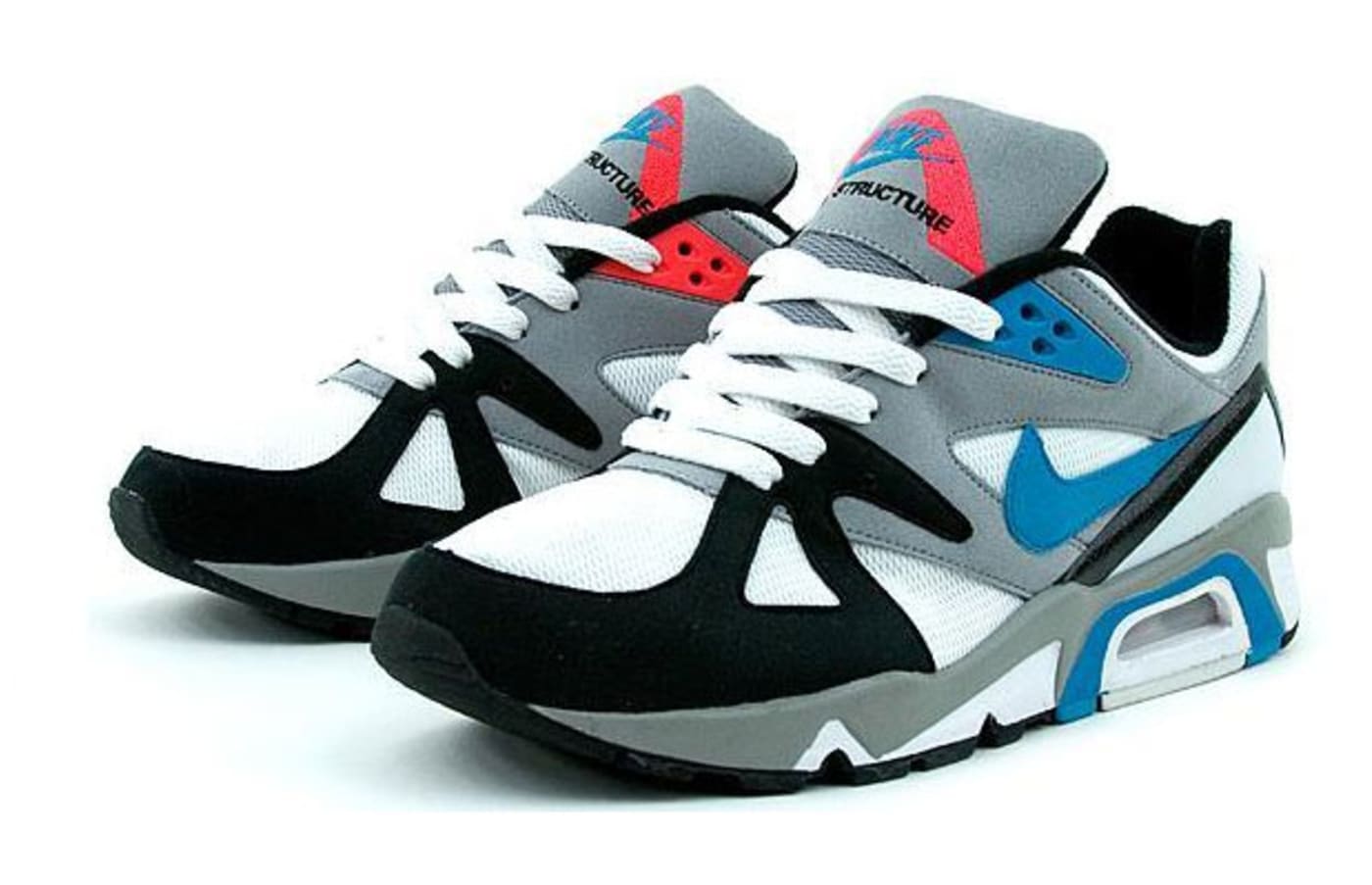
Year Introduced: 1991
The Air Structure Triax from 1991 had a few elements that make it stand out from the plethora of high performance runners in Nike’s past. The overlay paneling made for great contrasting options when it came to colorways. Nike flipped the script by removing the Swoosh on the medial side, which back then was something you didn’t see coming. Then they took it a step further with the original colorway by putting Teal on the outer and Infrared on the inner. In 1991, this was mind blowing for a kid rummaging the sporting goods store for something unique.
72. Alpha Force
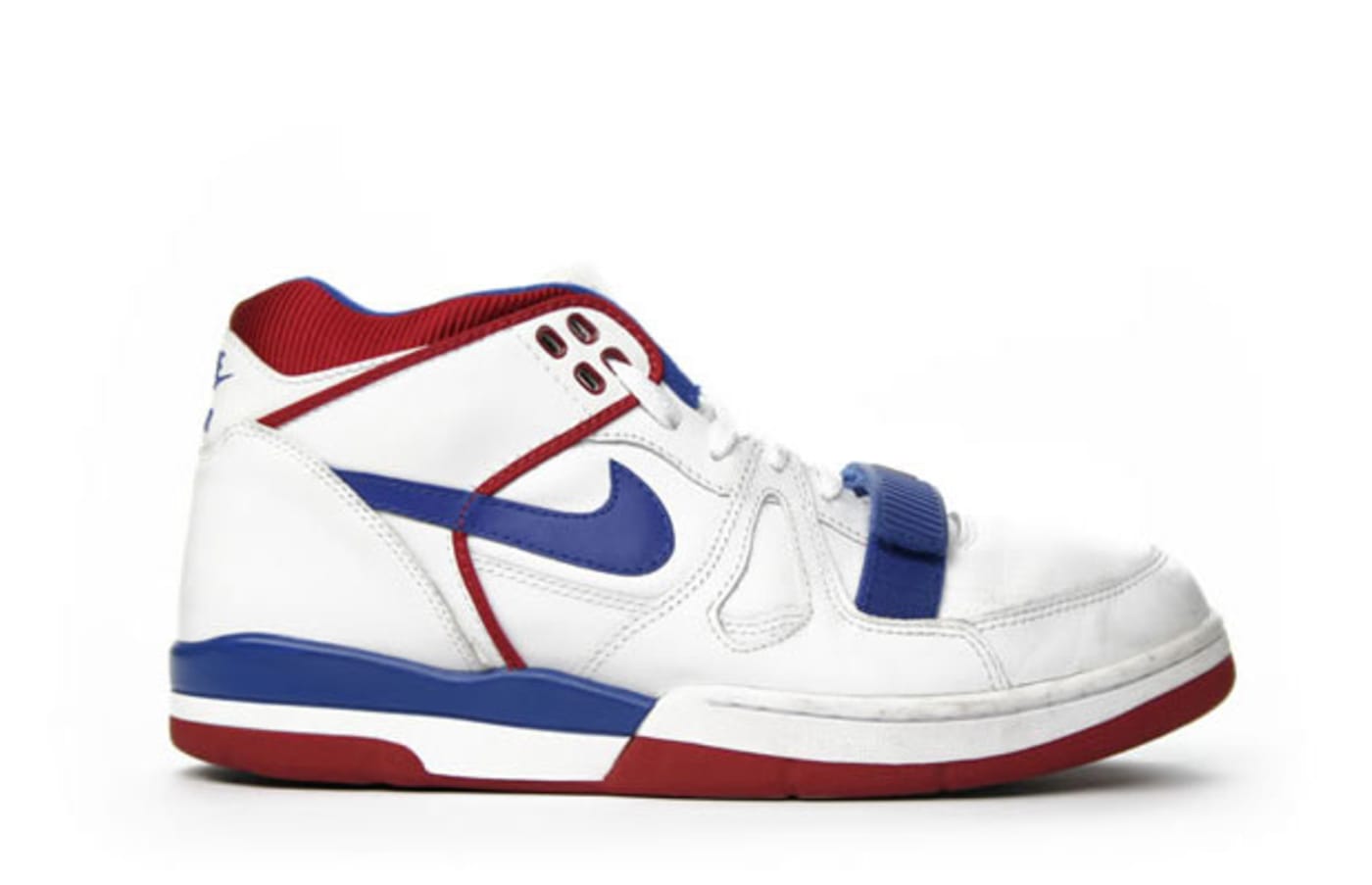
Year Introduced: 1989
Designing a shoe for a professional athlete is one thing – designing a shoe for a human earthquake like Charles Barkley is another thing entirely. The Alpha Force remixed some of the familiar elements of the Air Revolution, lowering the cut, moving the Velcro strap to the forefoot, and leaving the Air unexposed. No one wanted to risk a blowout.
71. LunarGlide+
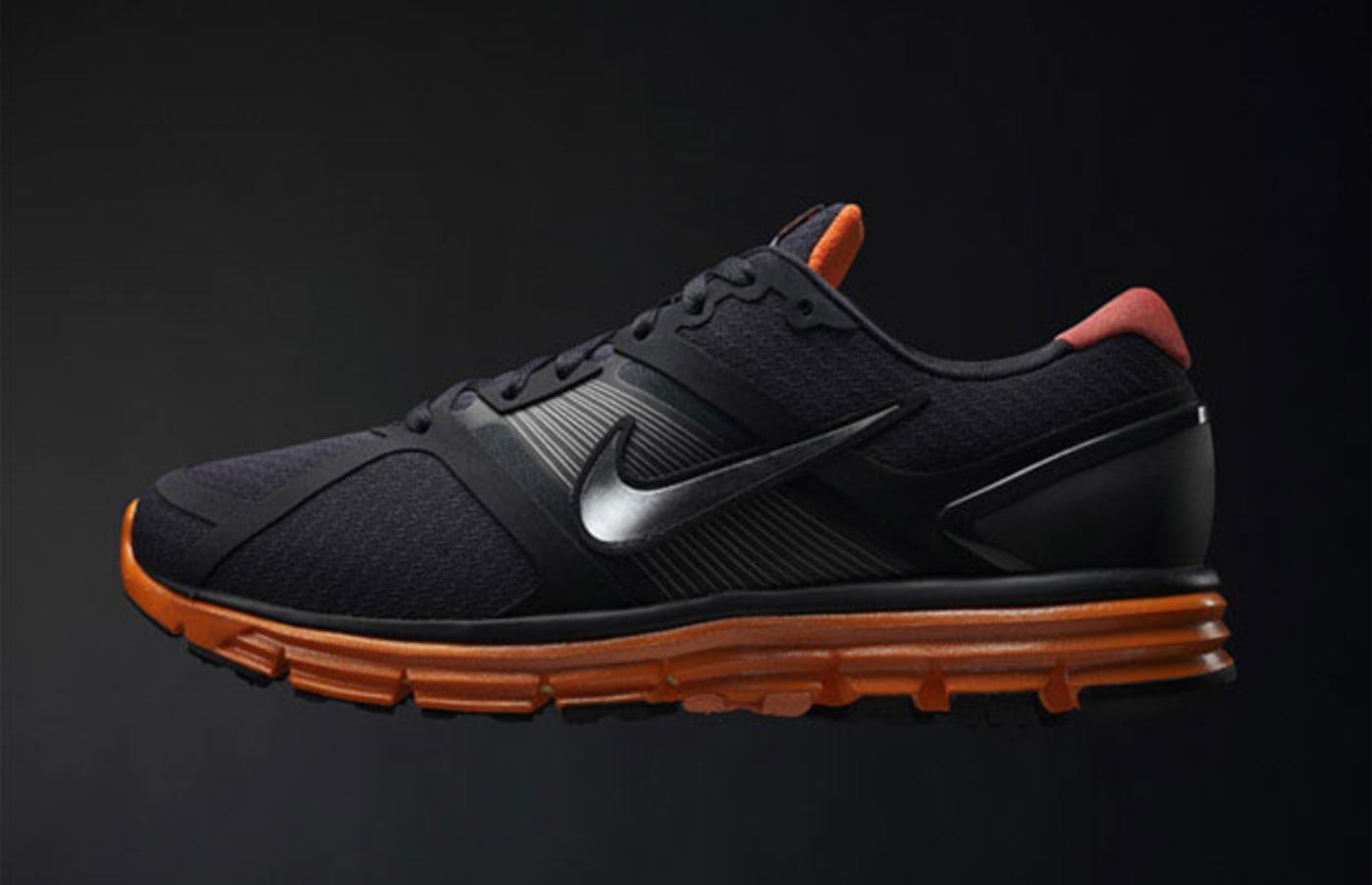
Year Introduced: 2009
Not only did the LunarGlide+ bring Lunar cushioning to the mainstream, it was also one of the first modular designs. The Lego-like design elements have become a standard for other sports like basketball but the design of the LunarGlide+ and that Nike Plus system thing is kinda cool, too.
70. Command Force
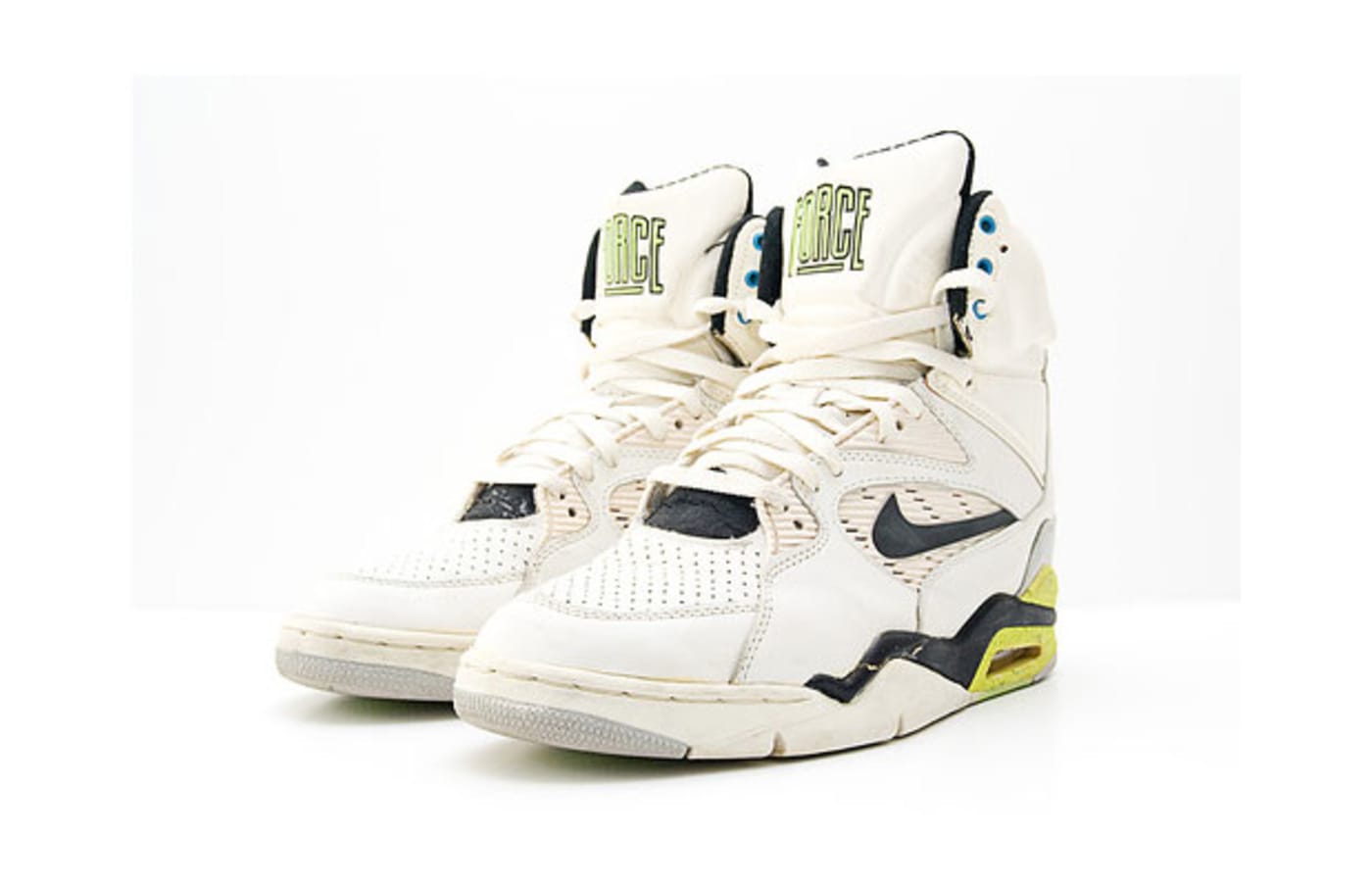
Year Introduced: 1990
The Nike Command Force. We can probably stop writing after that sentence. Neon, speckles, crazy height and a f**king pump system. Welcome to Mr. Robinson’s neighborhood. If you still don’t know, ask Billy Hoyle.
69. Air Revolution
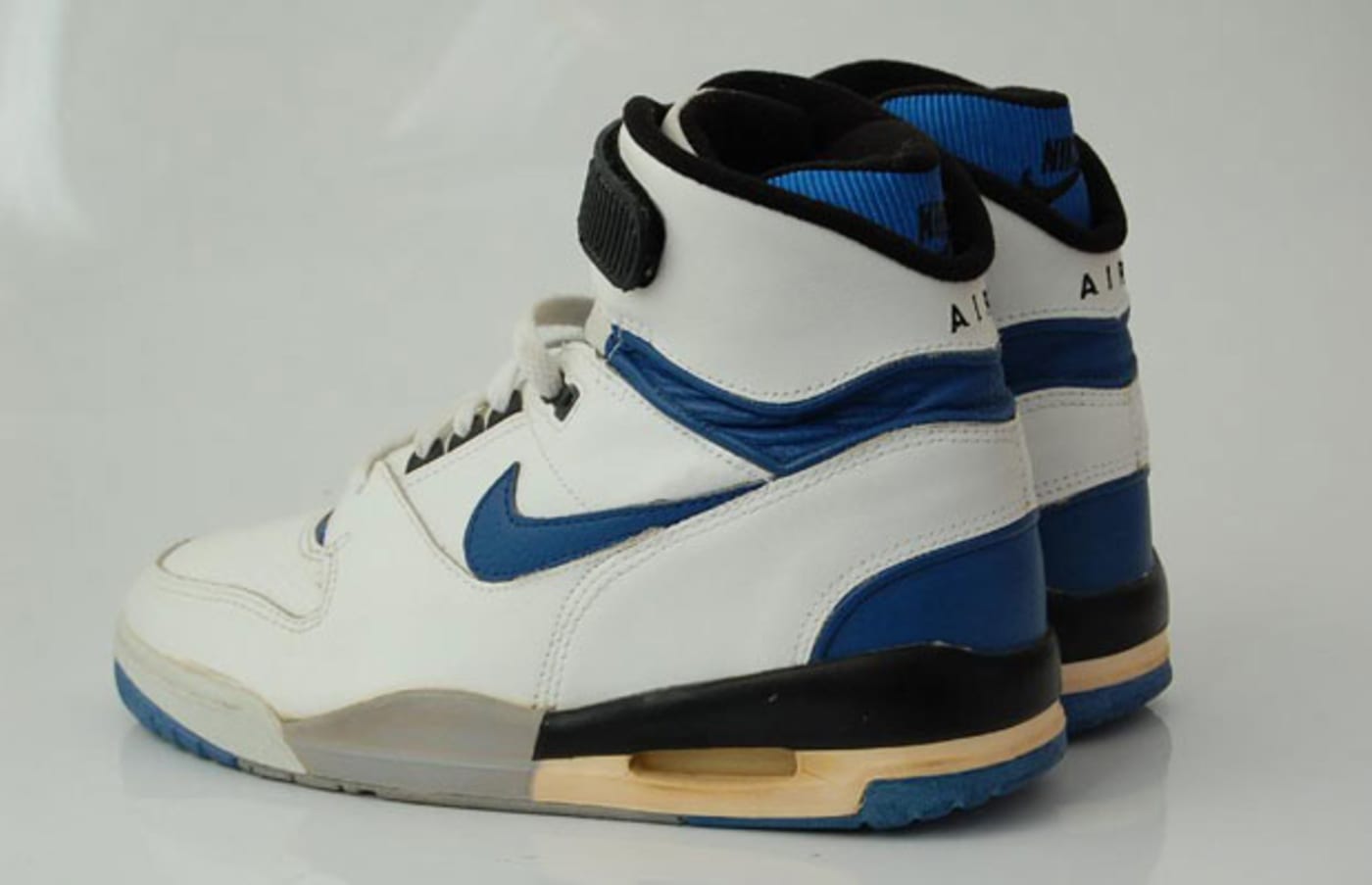
Year Introduced: 1988
The most aptly named sneaker in Nike history? Perhaps. The Air Revolution brought Visible Air to basketball in a monstrous high-top package that also featured speedlacing, a Velcro strap, and a heavily padded (and cleverly articulated) ankle collar. Big guys wore it, guards wore it (what’s up, Mark Jackson?) and kids who had a hundred bucks and wanted to floss wore it, laces cinched and strap undone. We’re still waiting for a proper retro, Nike.
68. Huarache Light
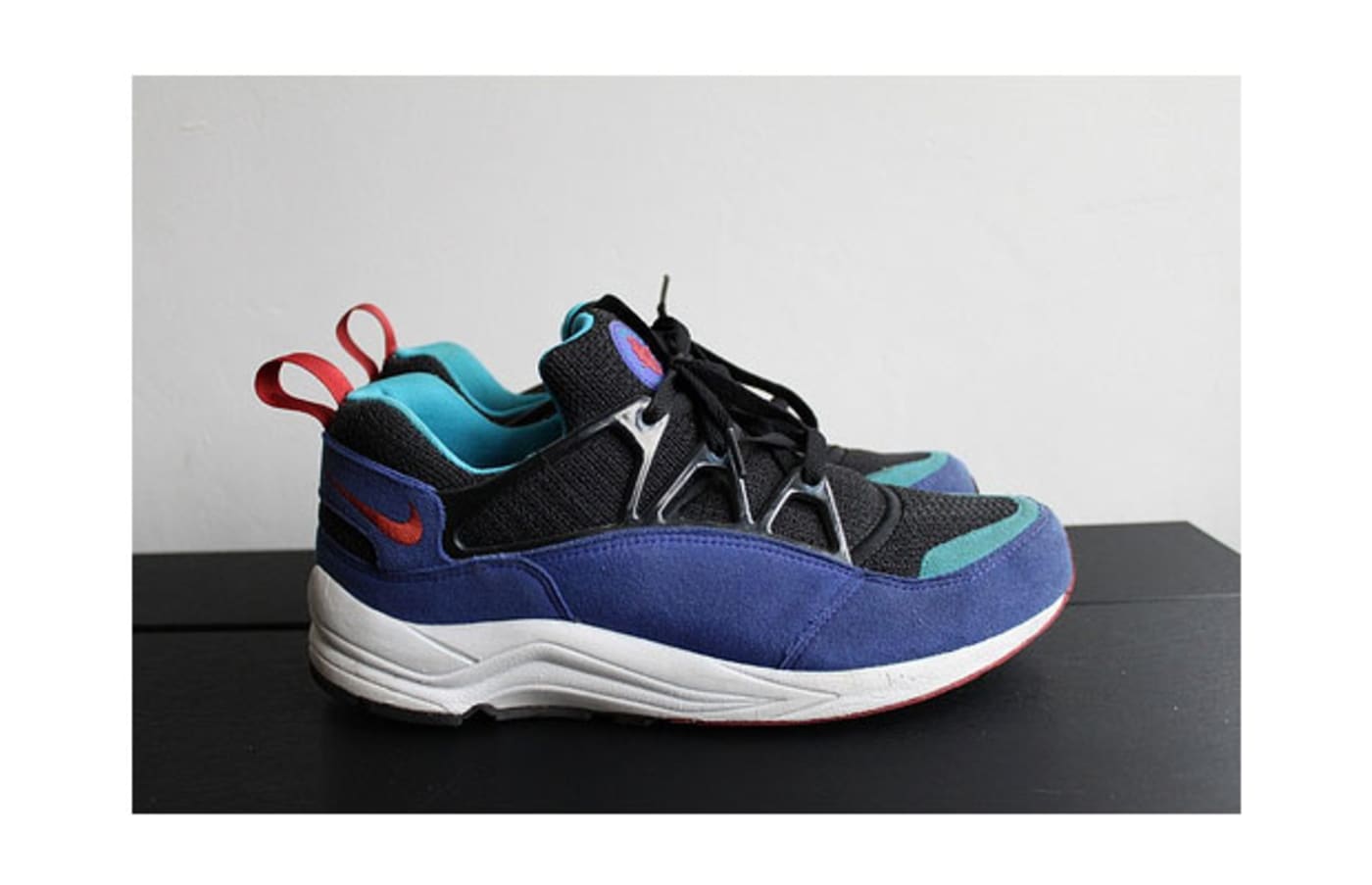
Year Introduced: 1993
Most famously remixed by Stüssy as a retro, 1993’s Huarache Light runner was a gem even in its OG form. The proportions were right, the colorways were right, and the idea of an even lighter Huarache runner was spot-on. Many, many, many Lunar runners can be traced back to this shoe.
67. Mac Attack
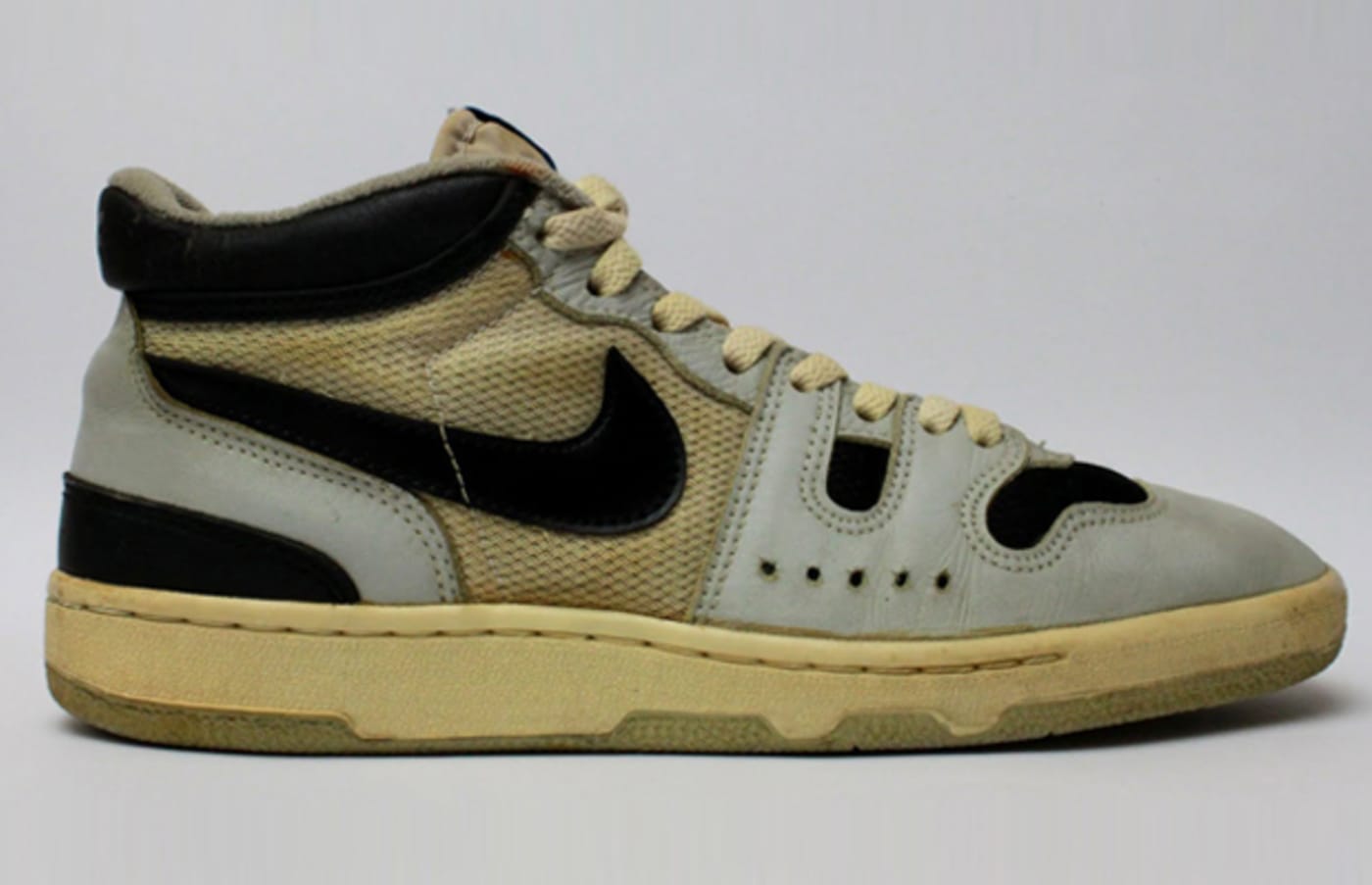
Year Introduced: 1984
John McEnroe’s only signature shoe in name, the Mac Attack would eventually be all kinds of eclipsed by the Air Trainer 1 – which wasn’t even expressly made for tennis. The Mac Attack was a 3/4 height shoe of mesh and leather in a decidedly non-tennis silver and black (and you thought Agassi had the first non-traditional Nike tennis shoes) that featured Mac’s signature checkerboard pattern on the tongue tag and the outsole. Recently revived by Nike Sportswear in Swoosh-less form as the Manor, the update would have Mac screaming “ARE YOU SERIOUS??!?”
66. Air Max 93

Year Introduced: 1993
Not as beloved as the 1990 and 1995 iterations that bracketed it, the 1993 Air Max remains an underappreciated classic. The fit was superb thanks to a neoprene liner, and the Max was more than the 90’s and less than the ’95’s, AKA just right. These might never truly get their just due, but hopefully this is a start.
65. Air Ship
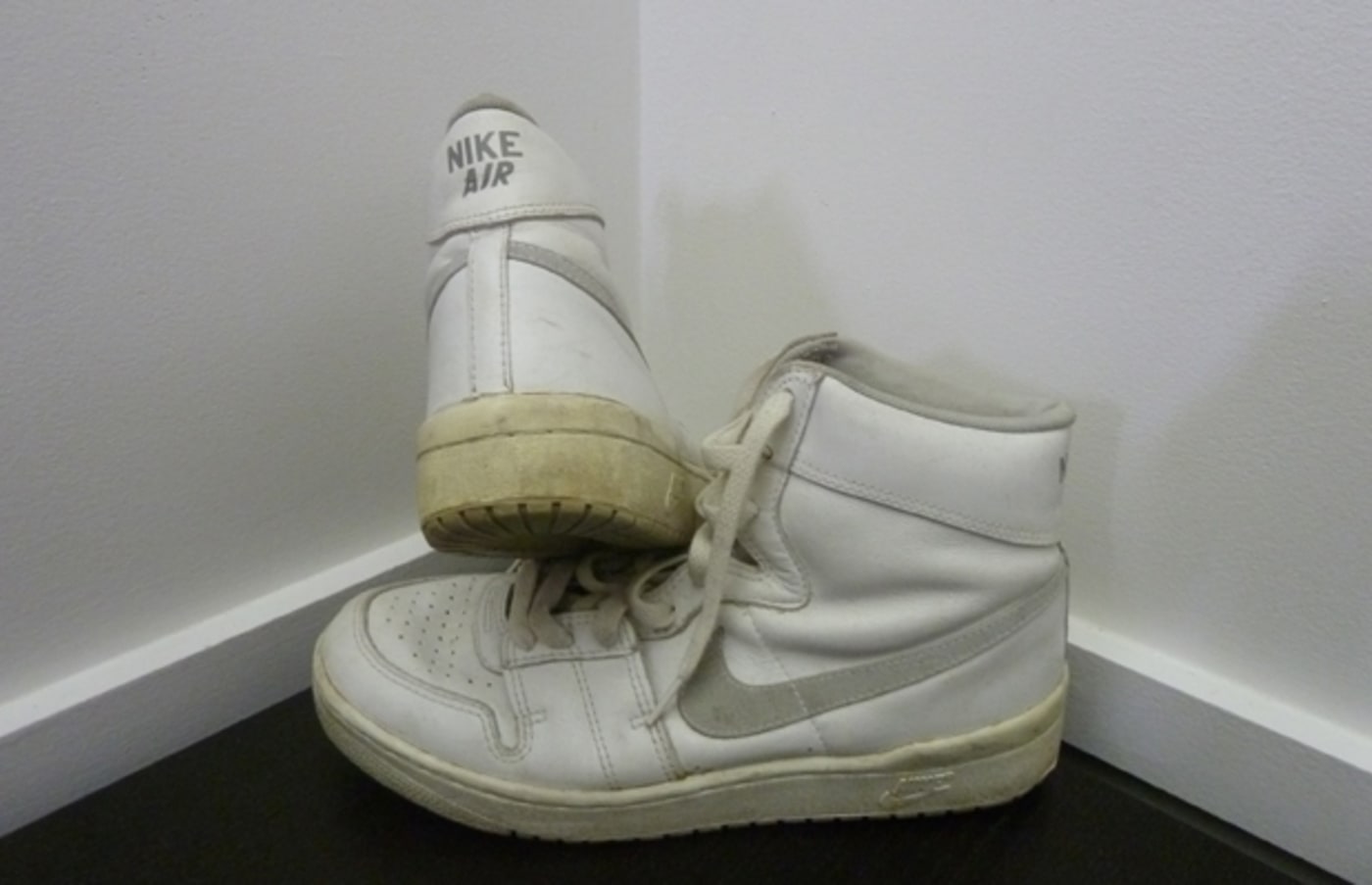
Year Introduced: 1984
Back in the early ’80s, the Nike Air Force 1 was just another basketball shoe. Well, OK, it was more than that, but by 1984 it was a two-year-old design in need of replacement. So designer Bruce Kilgore developed the Air Ship, which did away with the strap, added a cantilevered heel, and worked some new articulation at the forefoot. The Air Ship has never received the acclaim of its big brother – it pays to be first – but it was worn by a tongue-wagging rookie by the name of Michael Jordan. So it’s got that going for it, which is nice.
64. Air Diamond Turf
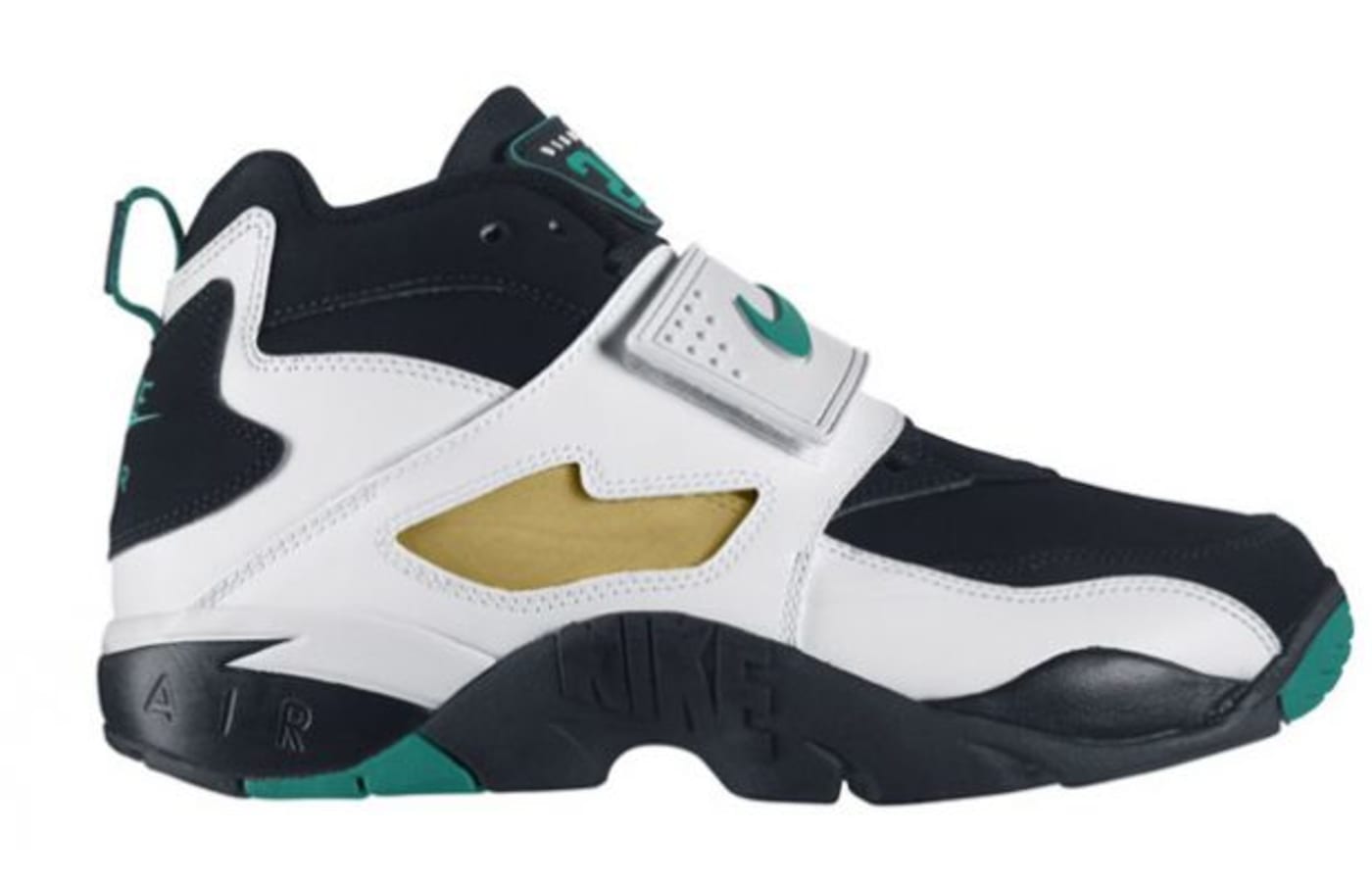
Year Introduced: 1993
Multi-sport stars were all the rage in the early ’90s. Well, at least Bo Jackson and Deion Sanders. Prime Time spent half of his time on the football field and half of his time on the baseball diamond and Nike set him up with the Air Diamond Turf. Aside from fresh styling, the tongue logo featuring goal posts set a top of home plate, is one of the best things to come from Deion’s career. Then again, maybe we’re just salty that the coolest guy on the field grew up to be a fairy throwing pixie dust. Regardless of his post-athletic career, Deion’s sneakers were one of the best.
63. LeBron 8
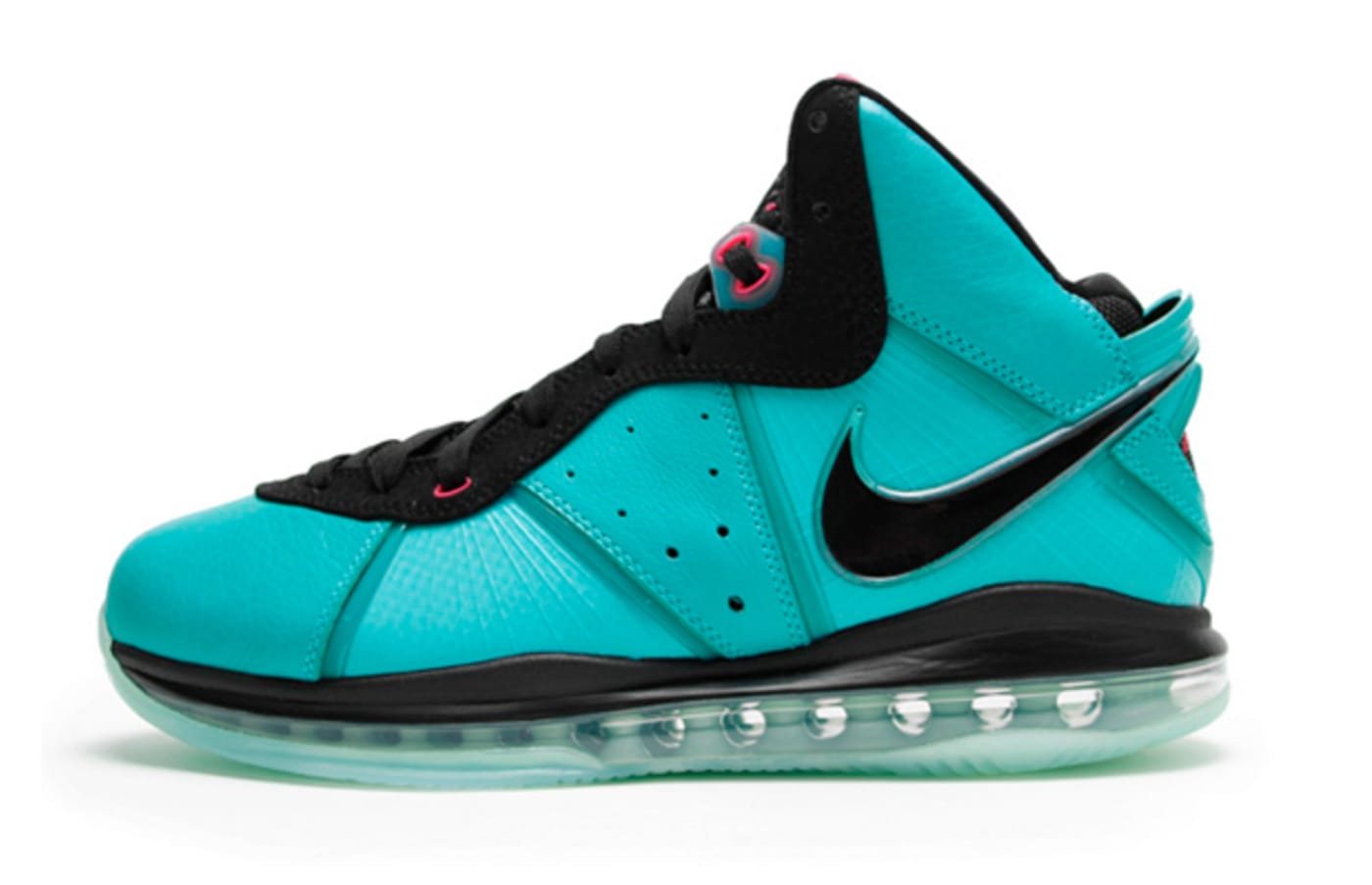
Year Introduced: 2010
The LeBron line changed dramatically with the introduction of the LeBron 7, designed by Jason Petrie. It was the first LeBron shoe to feature a full-length Max Air bag, and the Flywire-reinforced upper was lighter and sleeker than any LeBron shoe that had come before. But Petrie (and the LeBron line) really found its groove with the next shoe, the LeBron 8. Delivered in three increasingly lighter versions, the LeBron 8 still works best in its heavier, more elegant V1 form. You may have heard of the South Beach variety.
62. Air Raid
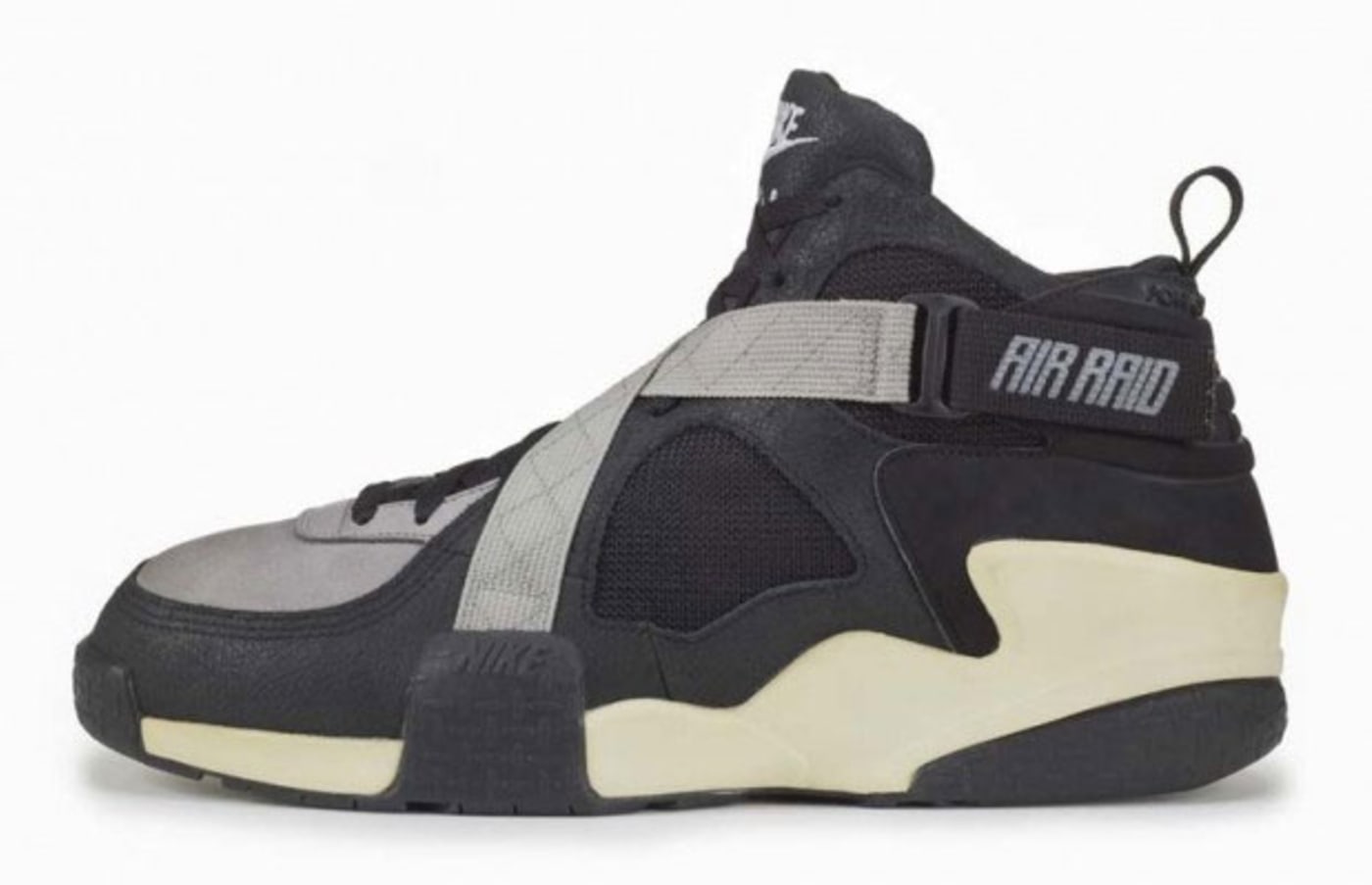
Year Introduced: 1992
A basketball shoe made strictly for the streets? The Air Raid (and the Air Raid II) were the basketball shoe equivalent of a SWAT team, armored to the max and aggressive as hell. The cross-straps would eventually find their way onto the Air Jordan VIII, but they never looked better than they did on the Raid. Every streetball sneaker since is trying to live up to these.
61. Air Griffey Max
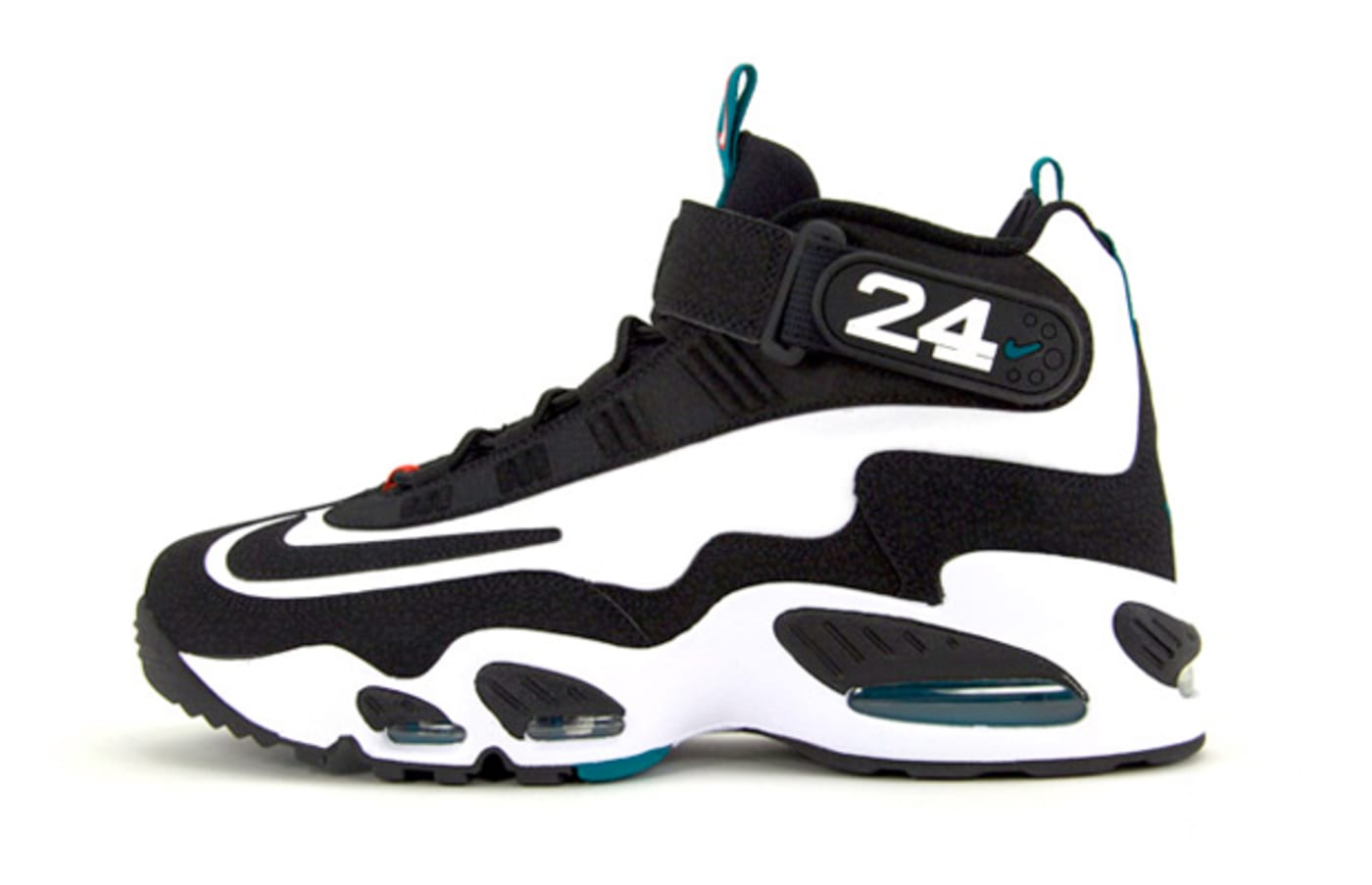
Year Introduced: 1996
Baseball sneakers were pretty much strictly for the diamond until The Kid flipped his hat backwards in Seattle. Ken Griffey Jr. brought a level of cool to baseball that “America’s pastime” had never seen before and the turf-ready version of his signature footwear quickly became as legendary as he was.
60. Wildwood
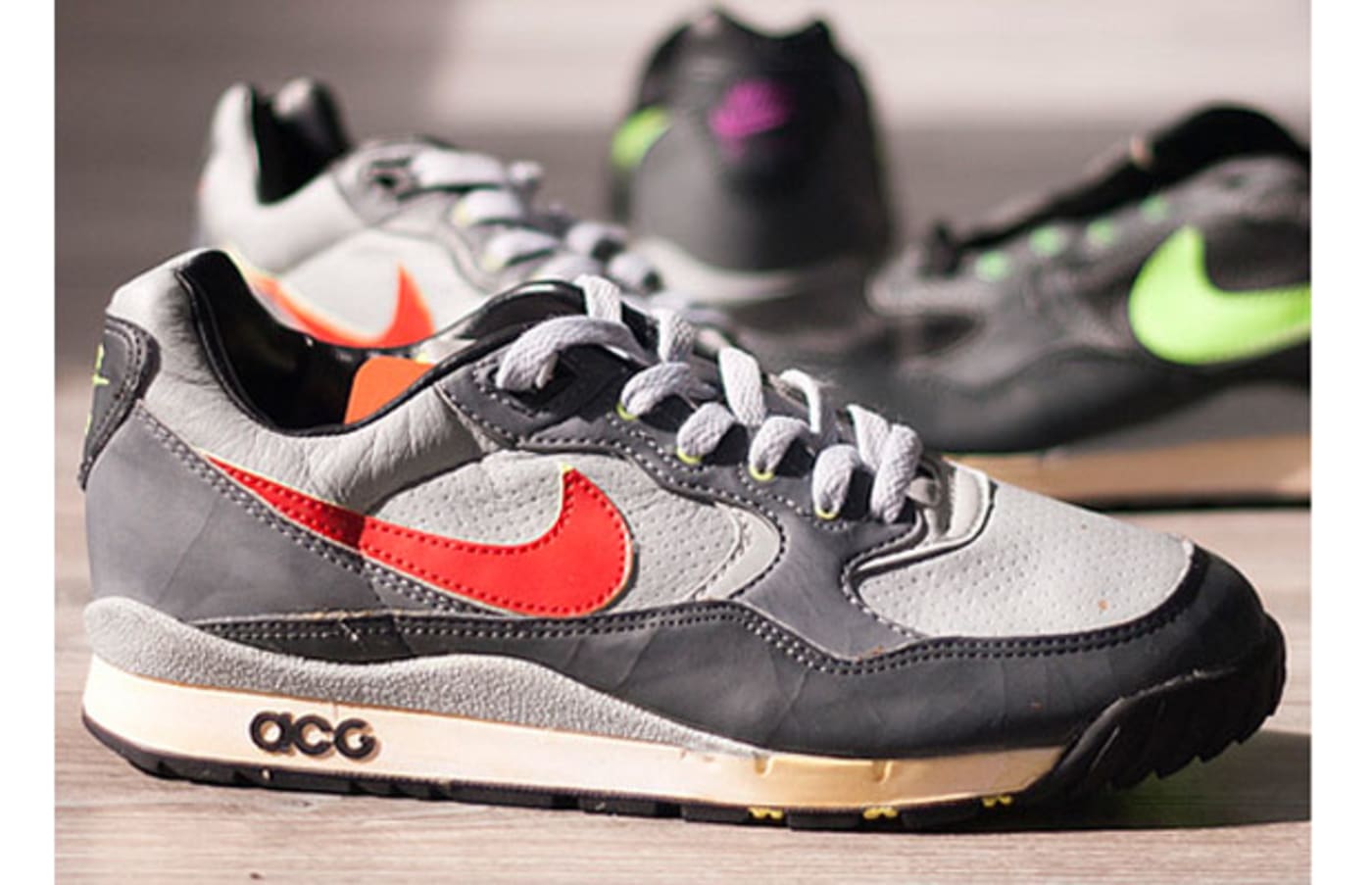
Year Introduced: 1990
While some ACG shoes were made for full-on adventuring, the Wildwood was essentially a traditional Nike runner with a lumberjack streak. The upper was classic, the midsole slightly thicker than most, and the “acg” lettering let everyone know what they were really about.
59. Air Flight “The Glove”

Year Introduced: 1998
Many shoes have been inspired by cars, not many as literally as the Air Flight 98 AKA “The Glove.” Taking Gary Payton’s nickname as a starting point, designer Eric Avar created a high-tech chassis that was concealed beneath a sleek skin. GP received several more signature shoes over the years, but when he made his last stop with the Heat, he did it in the Gloves.
58. Air Trainer Huarache
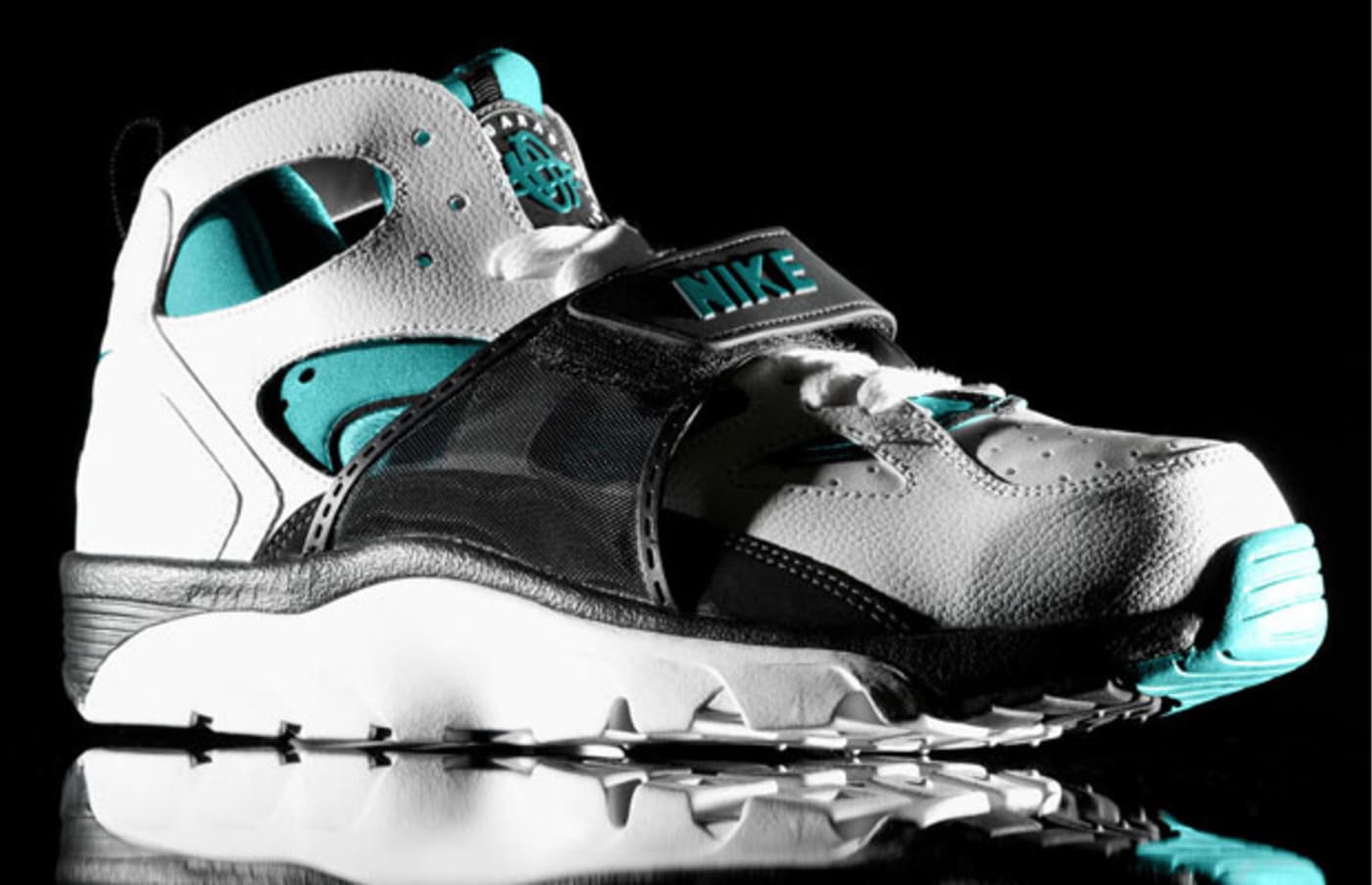
Year Introduced: 1992
Can you design a minimalist trainer with a Velcro midfoot strap? Guess so. The Huarache Trainer worked from the same neoprene base as the Air Huarache and the Air Flight Huarache, only adding that midfoot strap for stability. The black and grey “Raiders” version is the standard – even the later Zoom update was a hit, as Amar’e Stoudemire wore them for an entire season.
57. Air Woven
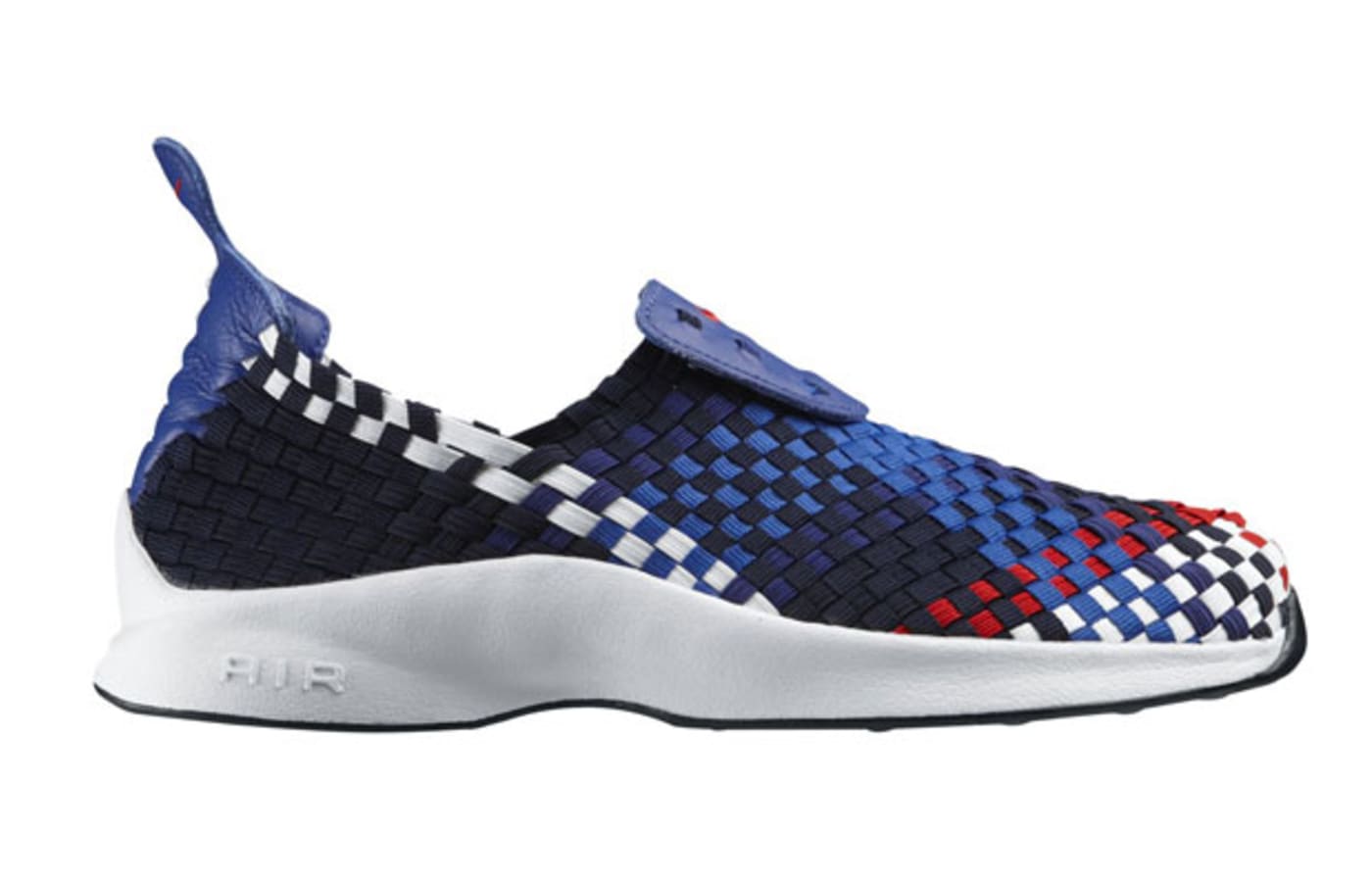
Year Introduced: 2000
For obvious reasons-least of all being shape and function-the Nike Air Woven is a cult classic. More aptly, it’s a niche shoe. Introduced in 2000, the design quickly caught attention in fashion circles. While the shoe may now stand as Nike’s greatest slip-on, the most popular application of the Woven technology is certainly in the distinct Footscape models. Honoring pioneers, as we do, the Woven lands on this list for breaking new ground.
56. Air Penny
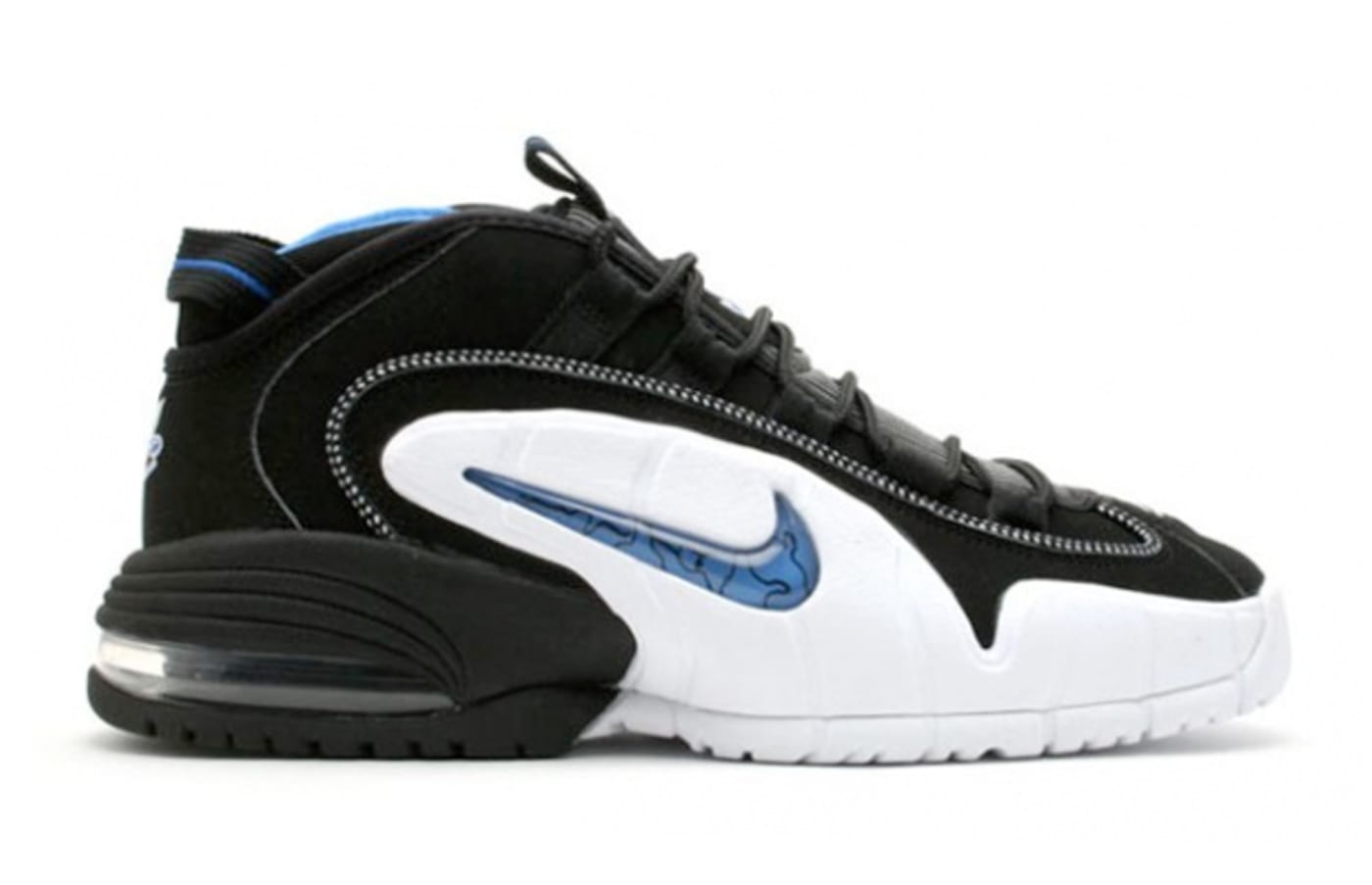
Year Introduced: 1995
Penny Hardaway has become a legend amongst sneakerheads. His first true signature, the Air Max Penny was awe-inspiring at first sight. The Huarache-style tongue and Foamposite like side were just the beginning, picking up the Air Max Penny and seeing the 1-Cent logo, then seeing the clear Air Max unit in the outsole, these were bananas. These are bananas, still.
55. Air MAG
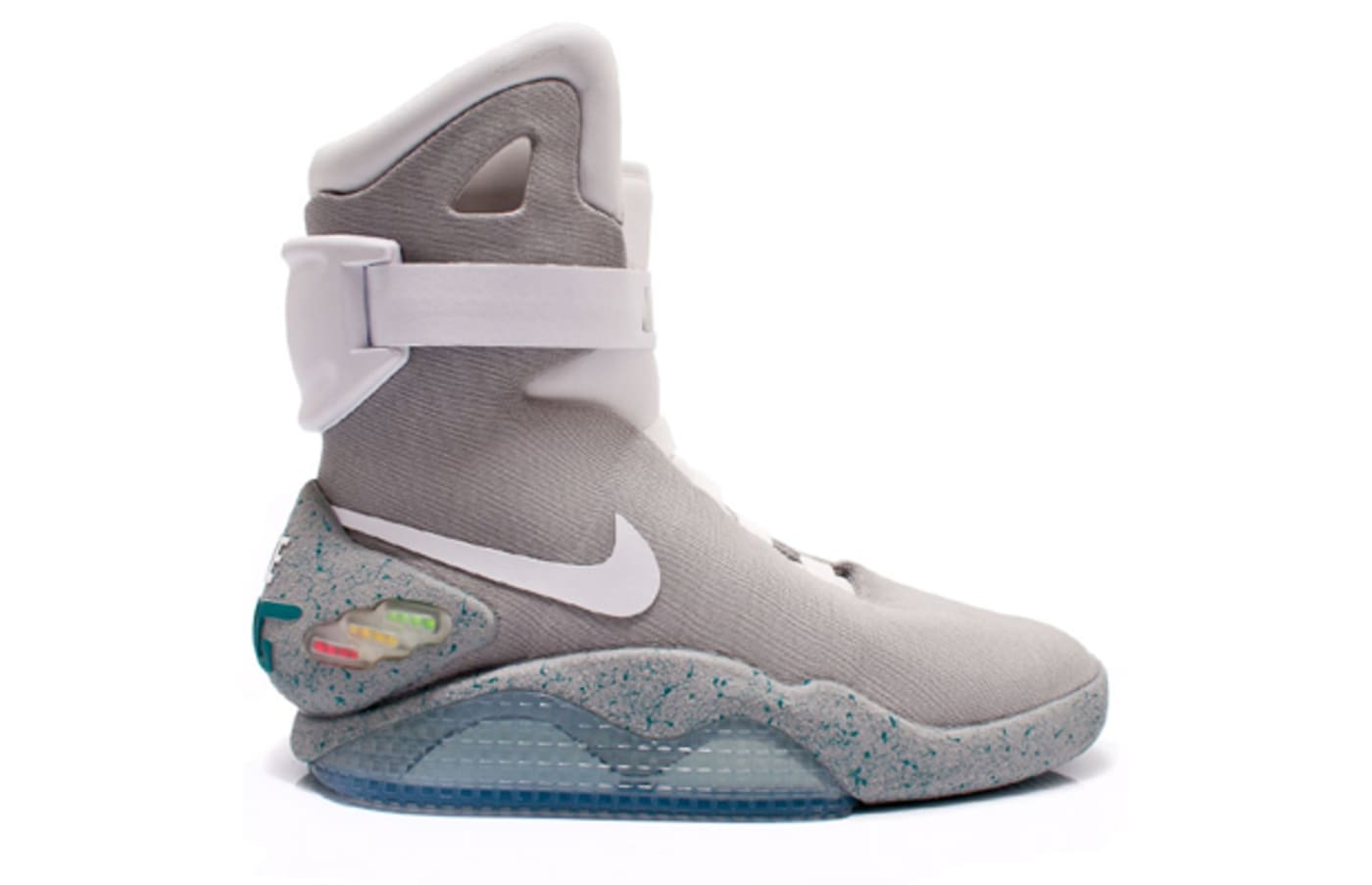
Year Introduced: 2015
When news first leaked about the Air MAG release, sneakerheads literally lost their minds. There are probably some poor souls still locked up, screaming that their Plan Bs will float if given the chance. Marty McFly’s kicks didn’t feature the coveted self-lacing system, but they did support the Michael J. Fox Foundation for Parkinson’s research. An amazing pair of shoes for a very worthy cause.
54. All England
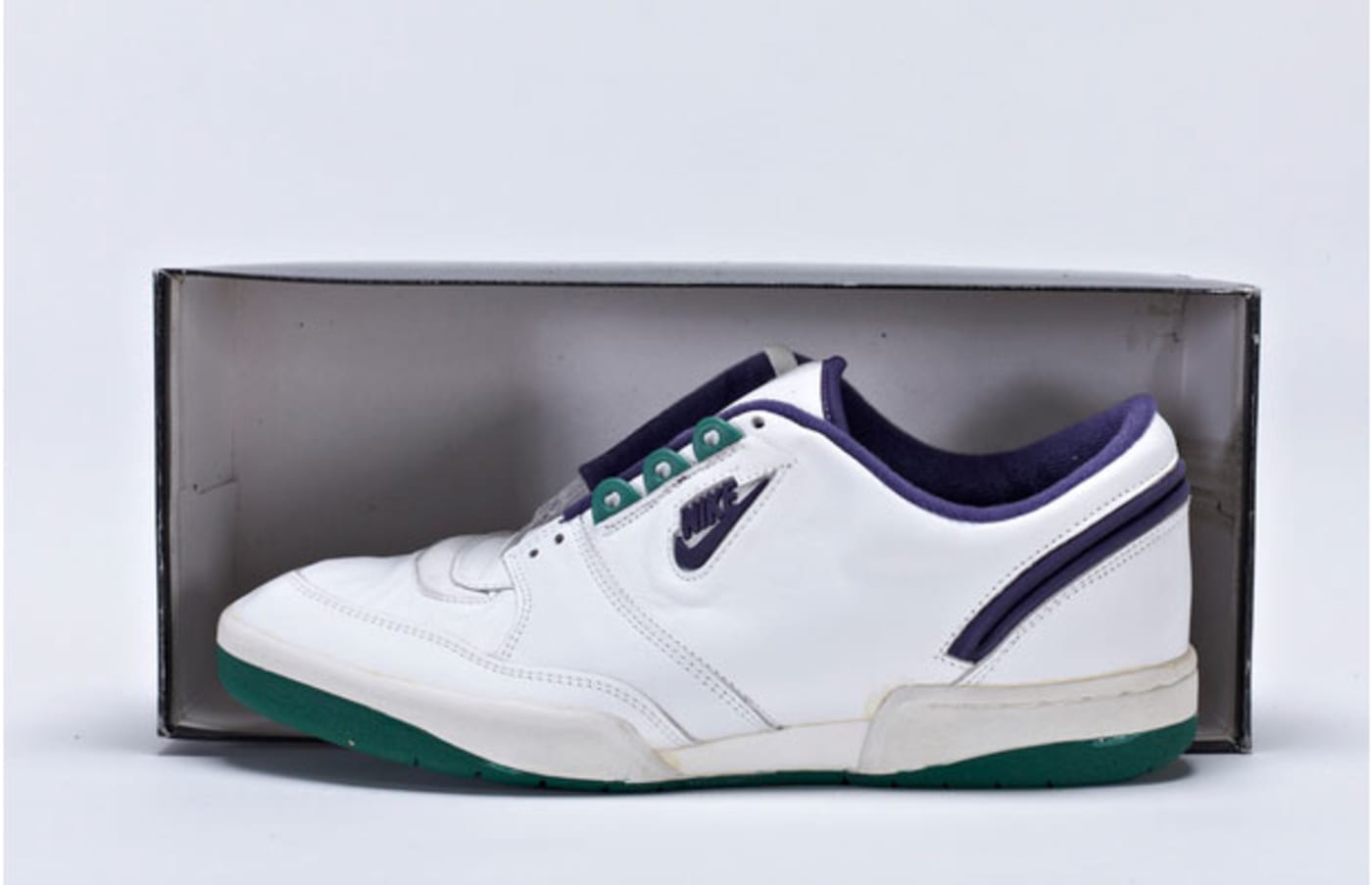
Year Introduced: 1986
Even Nike’s more traditional tennis sneakers were awesome. The Italian-made All England was as basic as you could get, an all-white shoe with Wimbledon-appropriate purple and green accents, perfect for center court or tea with the Queen. At the same time, they had enough edge to hold their own on the streets or the terrace. Cheers.
53. Bruin
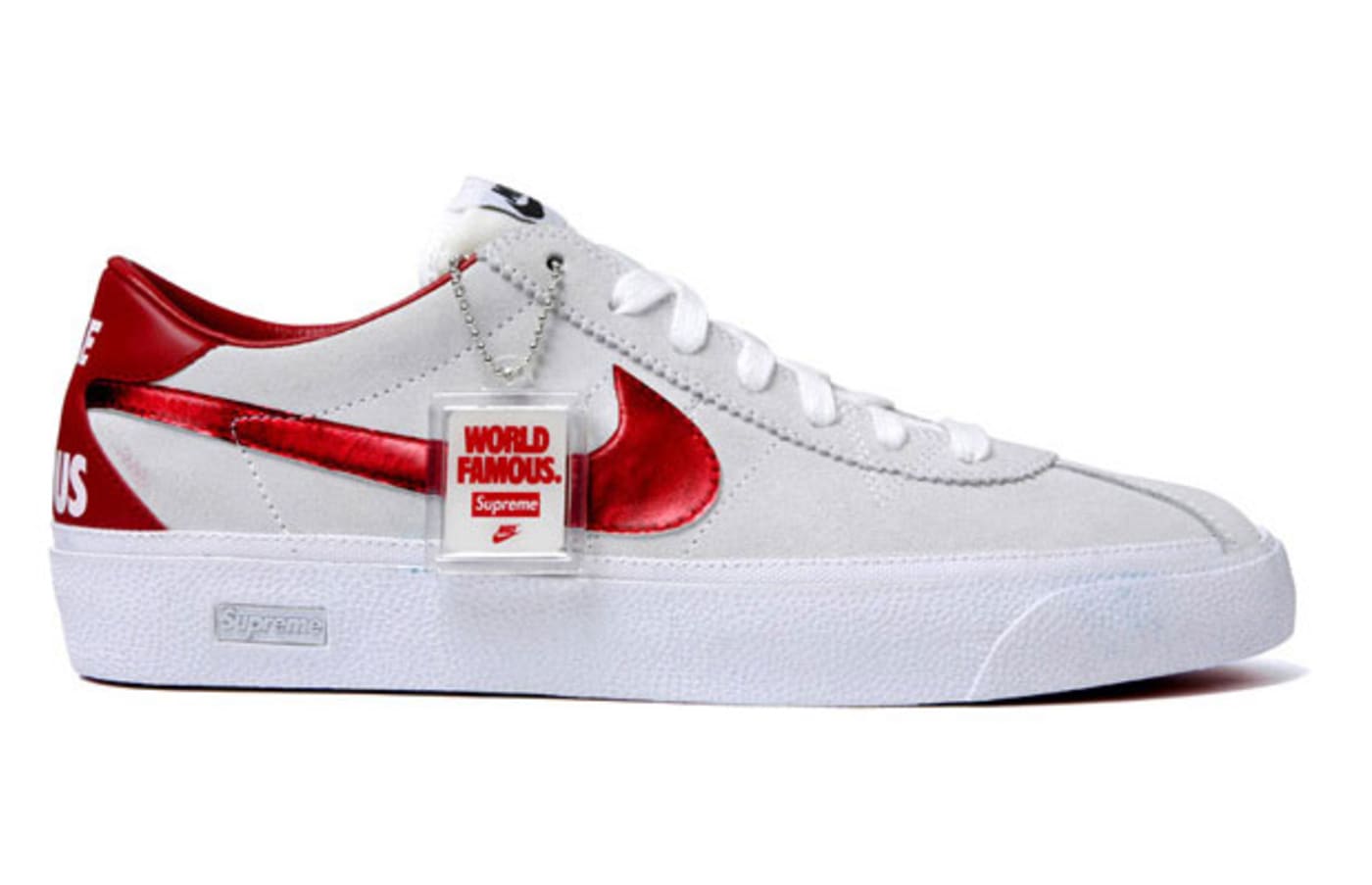
Year Introduced:
Named for UCLA’s John Wooden-coached basketball dynasty, the Nike Bruin was a low-cut leather (or suede) basketball shoe that was Nike’s answer to adidas’s Green Star and Superstar. As basic as basic gets, the leather oxford was what passed for high tech back in 1974.
52. Air Force 180 Low

Year Introduced: 1991
Long before LeBron James ever laced up a pair of basketball sneakers, Charles Barkley was putting extreme wear and tear on Nikes of his own. The Air Force 180 Low was Barkley’s weapon of choice during his last days in Philadelphia and his first in Phoenix – as well as on his little summer trip to Barcelona. Where the 180 runner was sleek, the Air Force 180 was bruising, more like a boot than a sneaker. Which was perfect for Sir Charles.
51. Air Go LWP
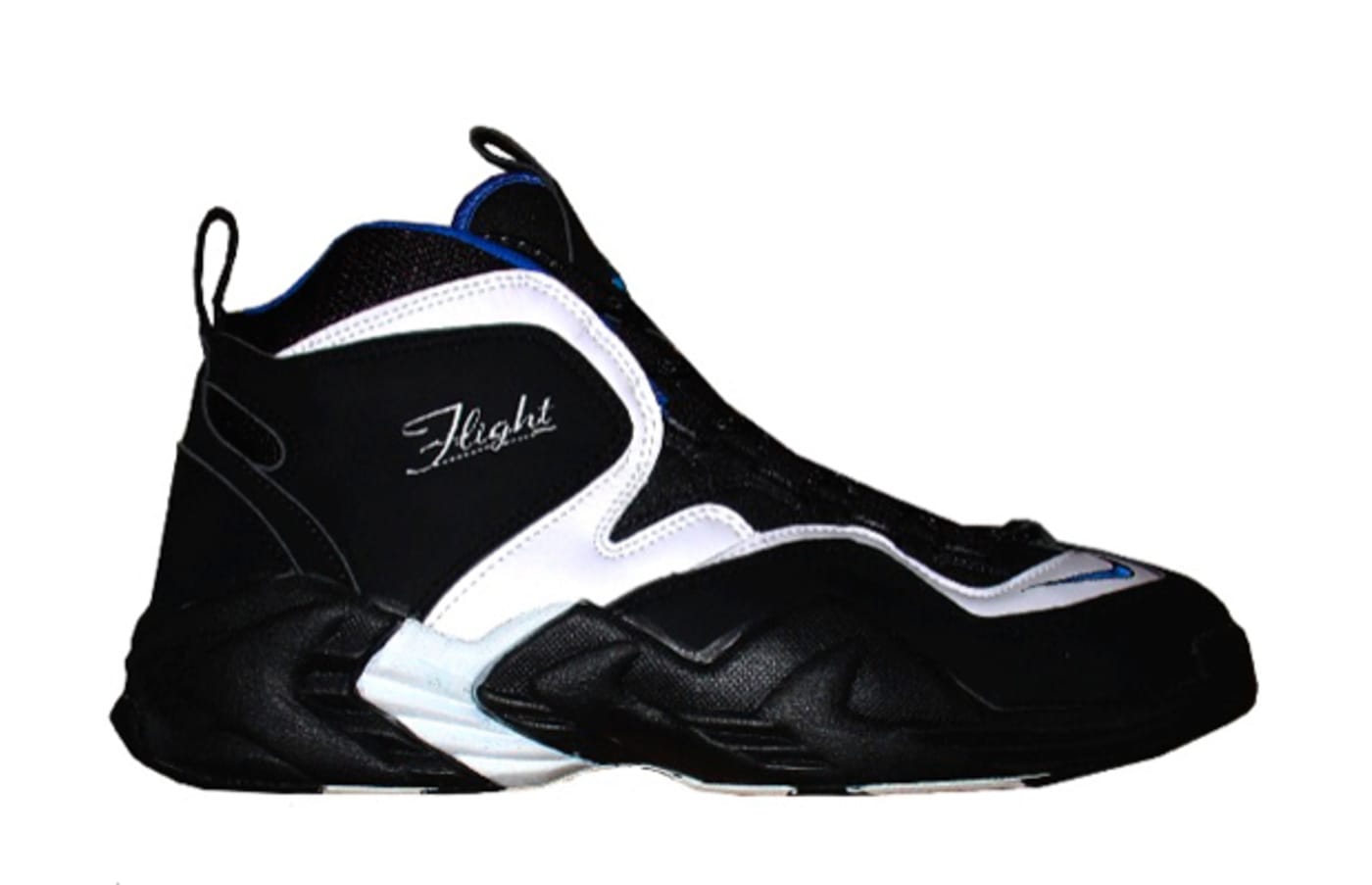
Year Introduced: 1995
In 1995, Nike dropped the Air Go LWP. The Light Weight Performance acronym was no joke (the Air bag was actually exposed at the bottom, making it a poor choice for an outdoor shoe) and despite being some 17 years old, the performance of the Air Go LWP rivals current technologies. If you hooped in the late ’90s, you had these – especially if you were named Hardaway.
50. Air Yeezy

Year Introduced: 2009
When Nike deigned to make a signature shoe for Kanye West, they seemingly were going against all of their founding principles – of making athletic equipment for athletes. But given Kanye’s touring schedule, is it so out of bounds to consider him an athlete? The world has changed considerably since Bill Bowerman was tinkering in his wife’s kitchen, and the Air Yeezy represented that change exceedingly well. The bottom line is that if the shoe wasn’t good, it would have just been a one-time deal, quickly forgotten. It wasn’t.
49. Air Ace
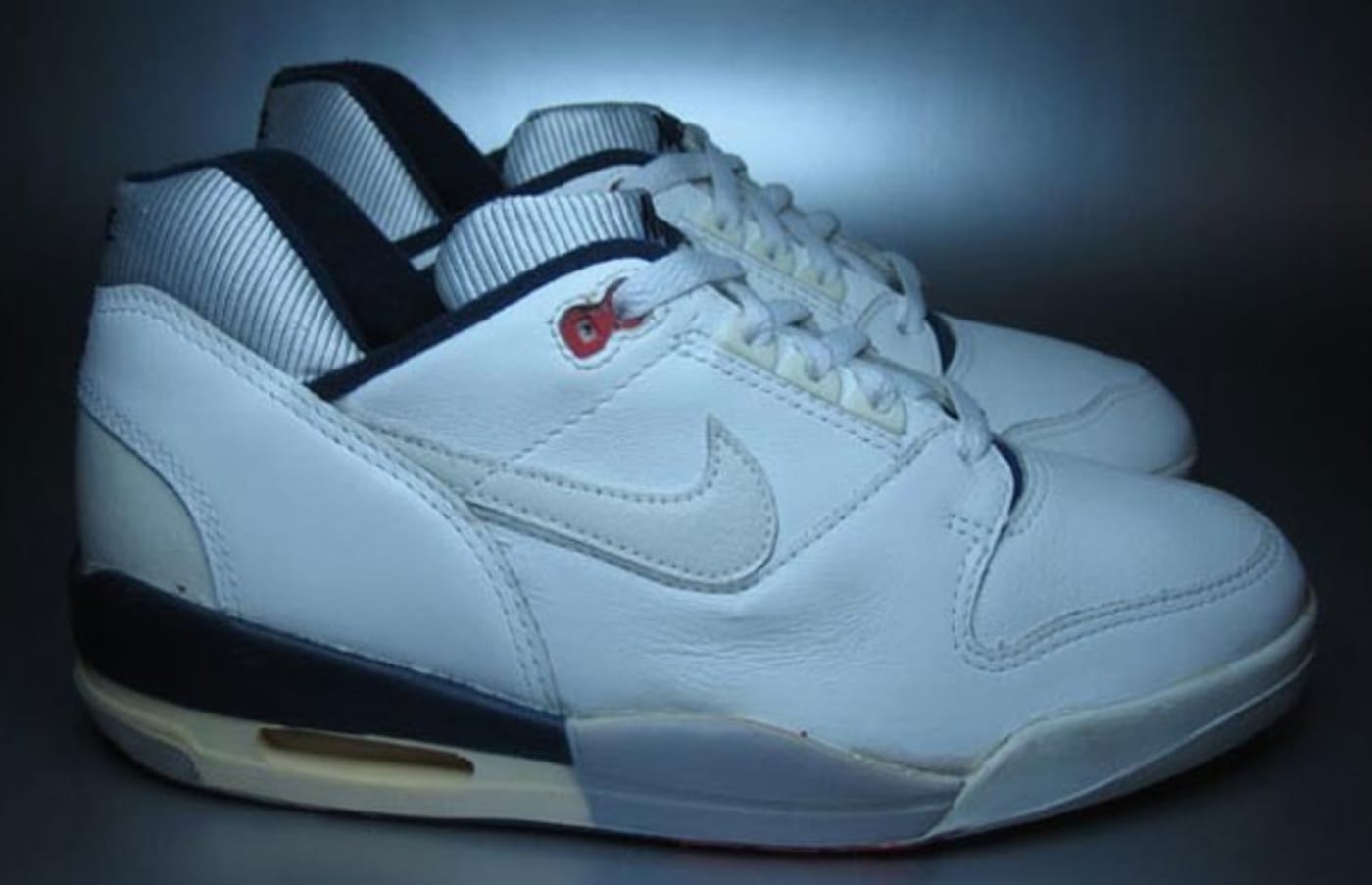
Year Introduced: 1988
The Air Revolution for the other courts, 1988’s Air Ace was the best iteration to hold that moniker. Utilizing the same basic structure as the Revolution, only in a non-strapped lowcut, the Air Ace swapped on a tennis-specific outsole and came in a white and aqua with yellow hits that wouldn’t be out of place today.When Nike eventually retroed a Revolution Low, they blew it by not coming back with the Ace.
48. Air Flight Huarache
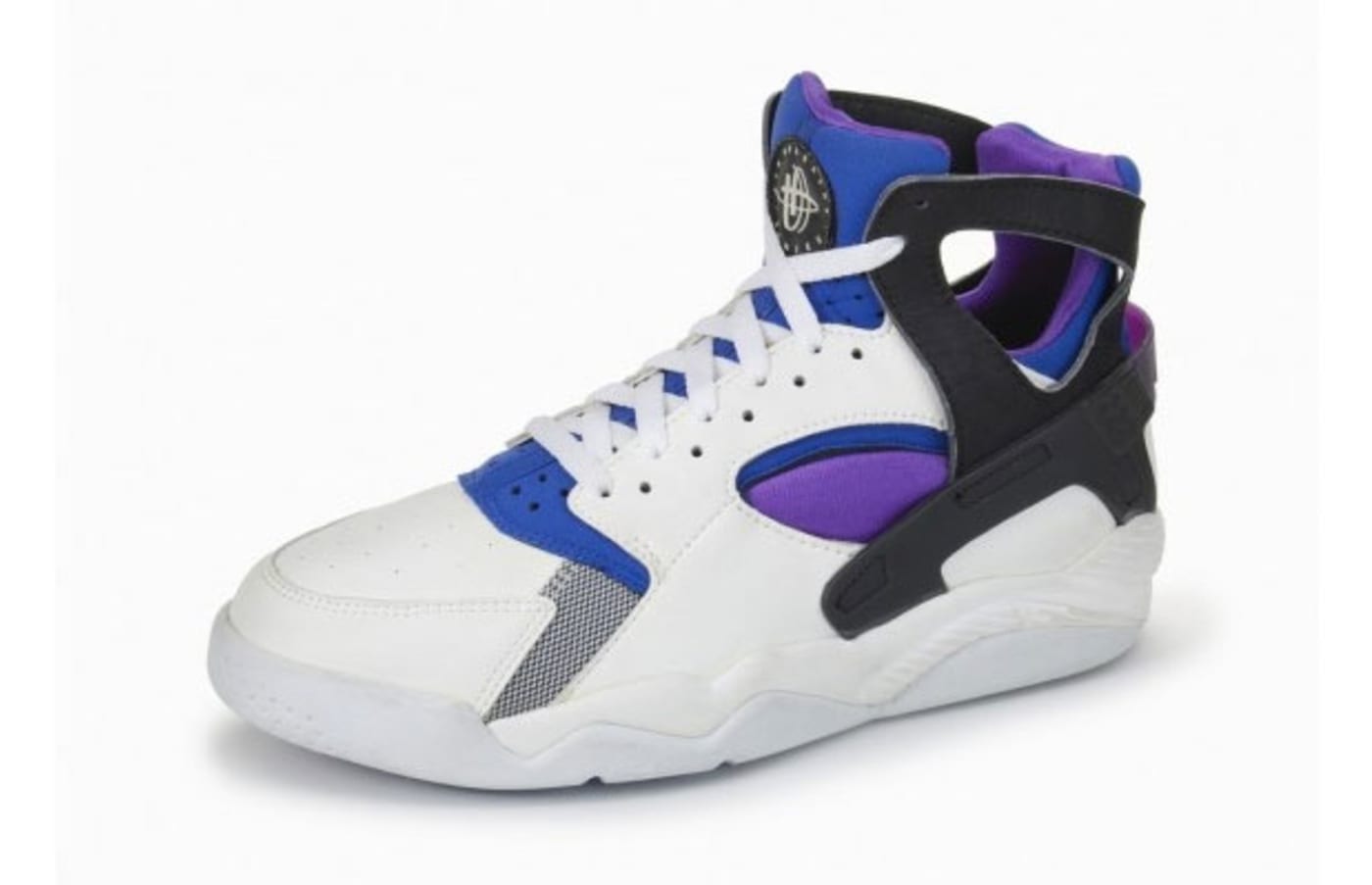
Year Introduced: 1992
Few sneakers have been as ahead of their time as the Air Flight Huarache. A minimalist basketball shoe? This was 1991, when hightops were high and soles were thick. The Huarache stripped away all that was unnecessary – including the ankle padding – and left what amounted to a nubuck exoskeleton over a neoprene bootie. The Fab Five liked it, so did everyone else.
47. Shox R4
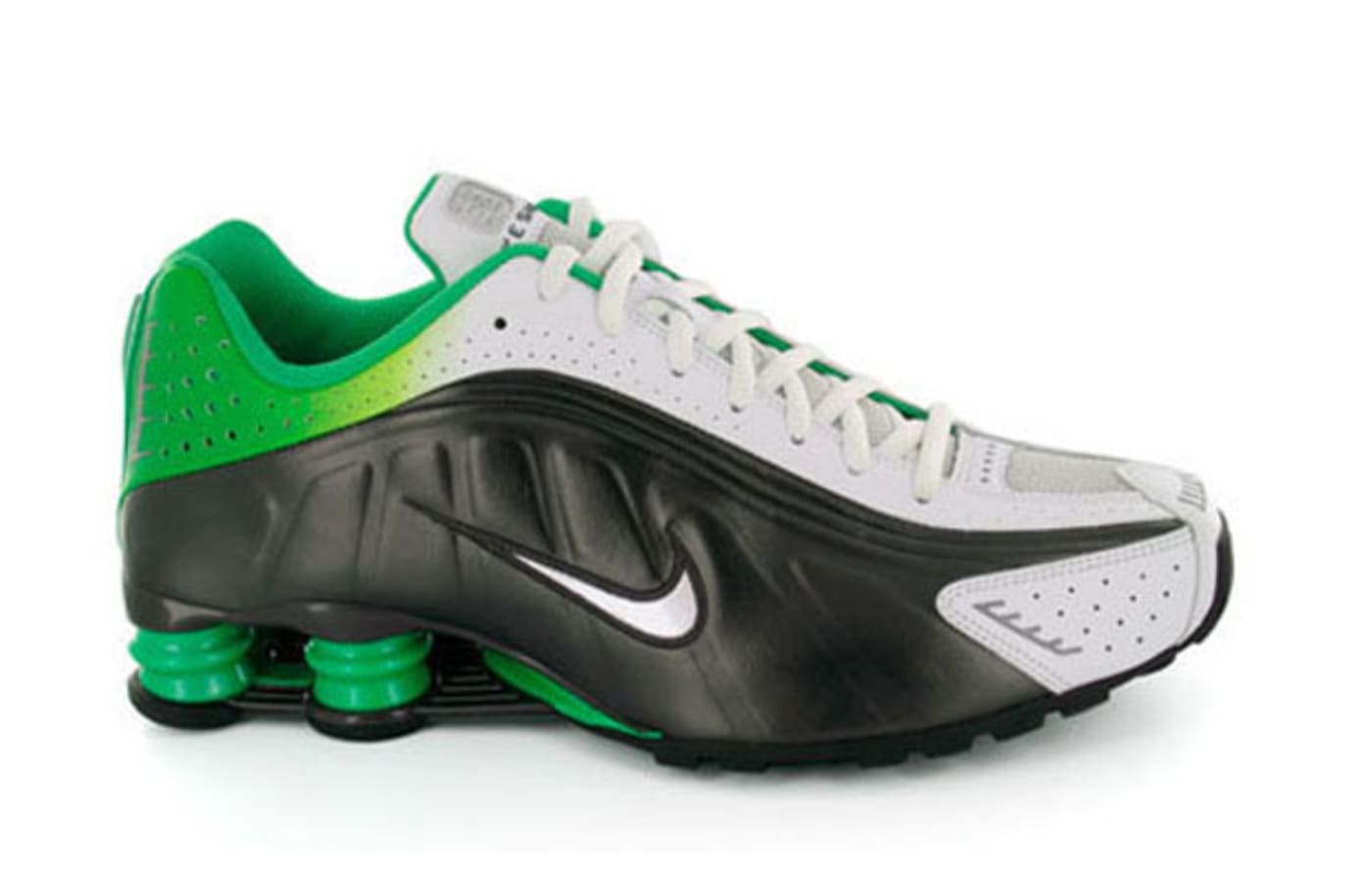
Year Introduced: 2000
Nike Shox was in development even before Air debuted, so by the time it launched in 2000 it was one of the most heavily-researched cushioning systems in sneaker history. Smartly, Nike chose to let the technology serve as its own design language with the initial launch, and the R4 runner (R for running, 4 for the number of Shox pillars) looked more like a NASA product than a Nike one. And even though heelstrike, which the Shox pillars were built to handle, is considered just about the worst thing a runner can do, the R4 still stands as a design triumph.
46. HTM2 Run Boot
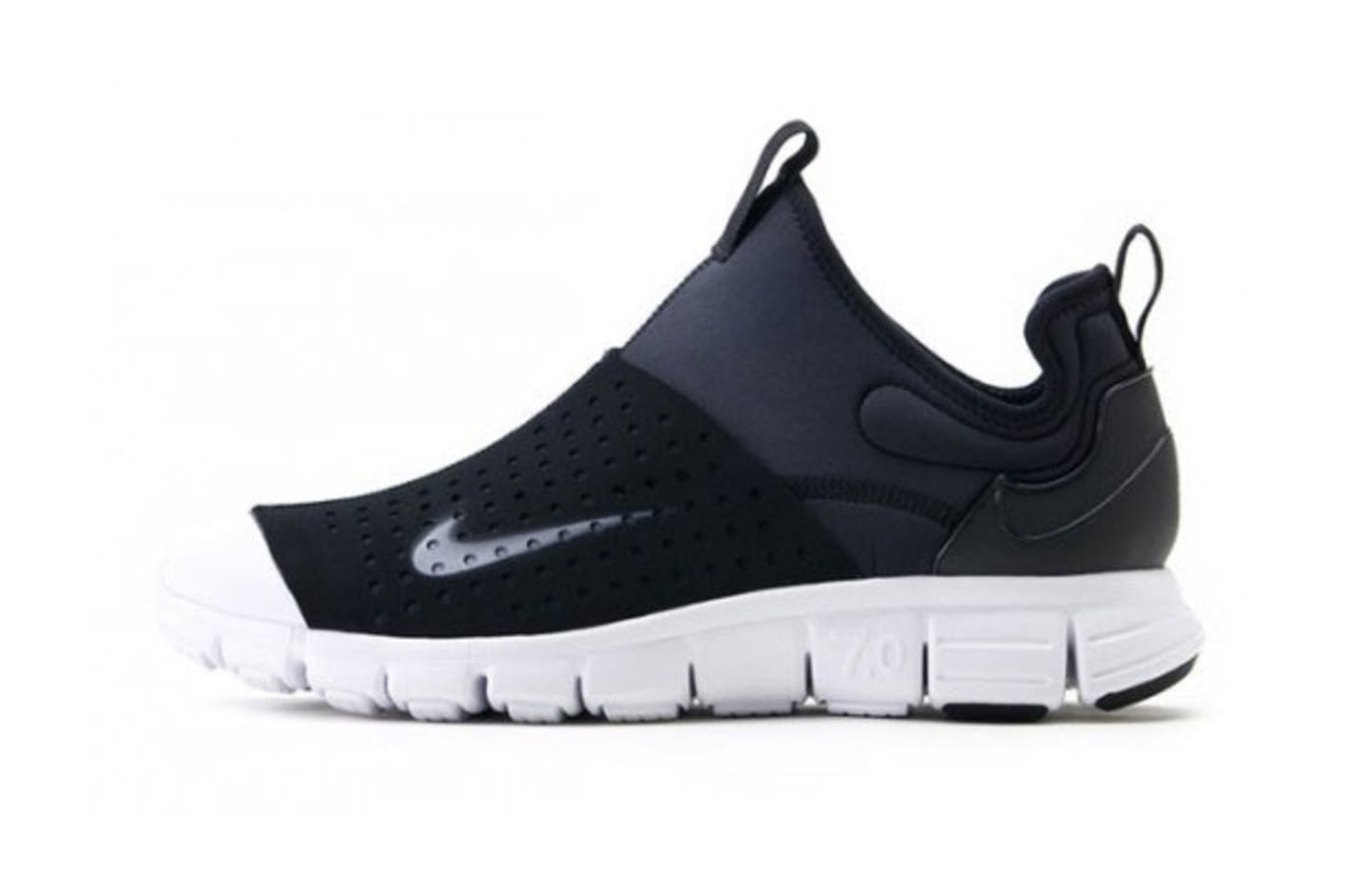
Year Introduced: 2011
Hiroshi Fujiwara, Tinker Hatfield and Mark Parker. The streetwear godfather, the designer of all designers, and the Nike President. Pretty impressive threesome. Normally content to tinker (no pun intended) with existing designs, the trio worked up a whole new silhouette with the HTM2 Run Boot. Not really a boot, not really a sneaker, it was just something to wear every day. Someone should hire these guys.
45. Zoom Spiridon
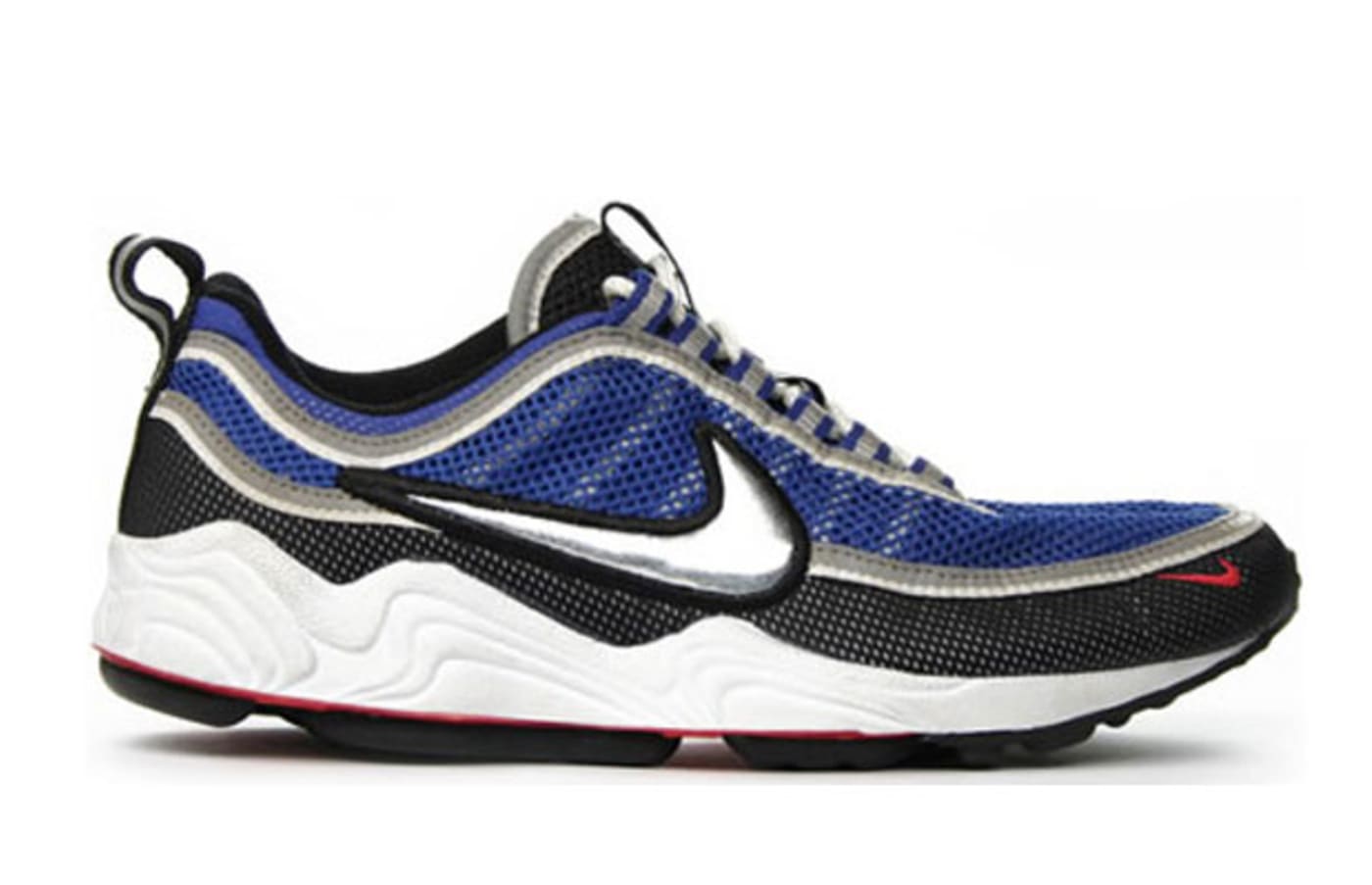
Year Introduced: 1997
Some will remember this shoe because of the great Michael Johnson. Others will recall that it was one of first runners to employ Zoom Air. With shiny swoosh-only in OG form-and mesh, the lightweight upper translated into the perfect summer sneaker. The color schemes were mean, and the even as the shoe took on its unique patina the beauty of the silhouette remained intact. Who remembers busting a hole at the big toe?
44. Vapor 9 Tour
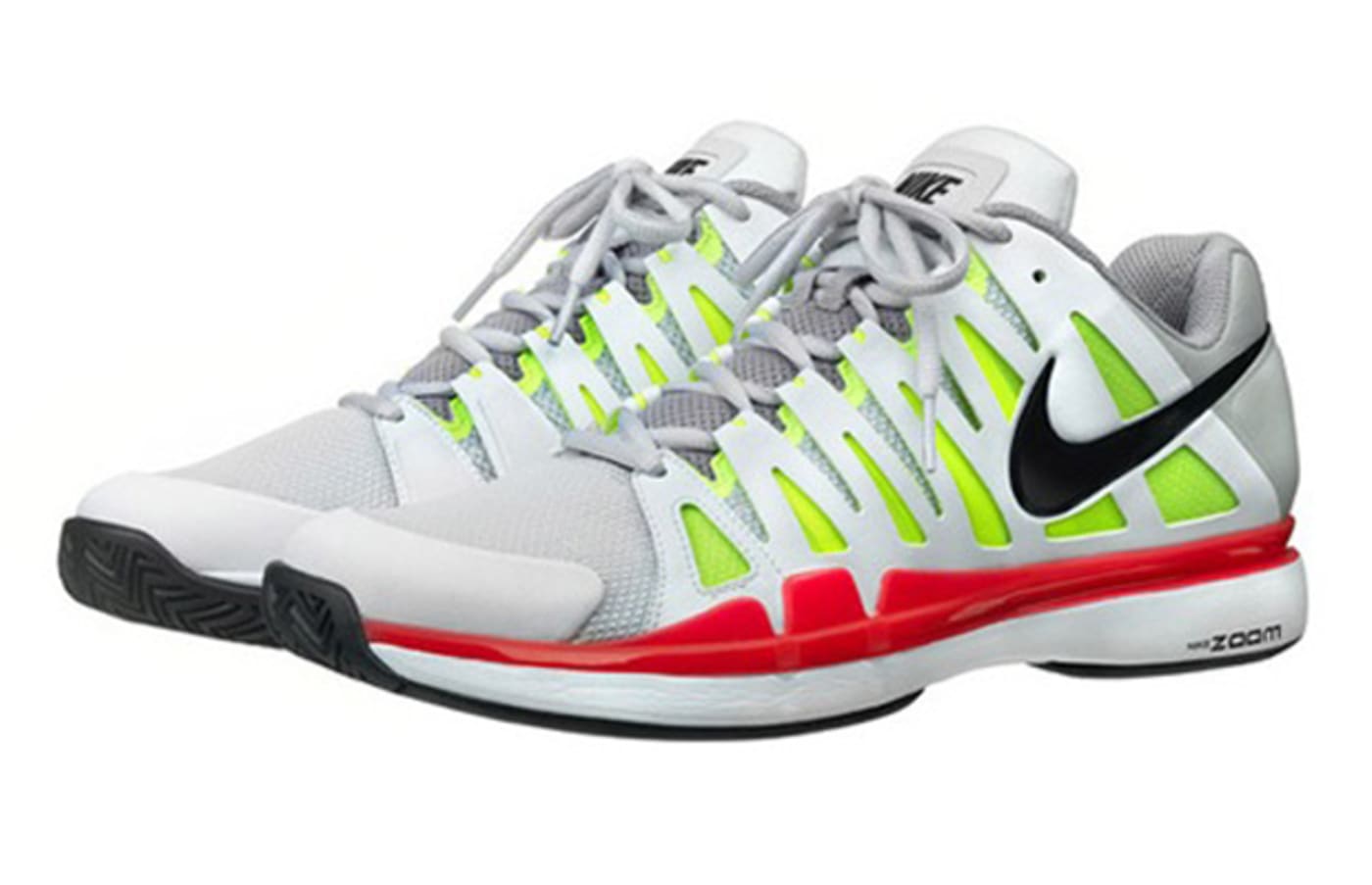
Year Introduced: 2012
The first shoe Tinker Hatfield designed wholly on his iPad, the Zoom Vapor 9 Tour was Roger Federer’s weapon of choice in 2012. The basic in-line colorways were great, then they did up an NYC version, a proper Wimbledon version (with purple and green accents) and an “RF287” premium hyperstrike that came with all sorts of goodies and sold out in 12 seconds. The mesh toe is preferable to the leather toe (isn’t it always?), but both versions smoke.
43. Air Trainer SC
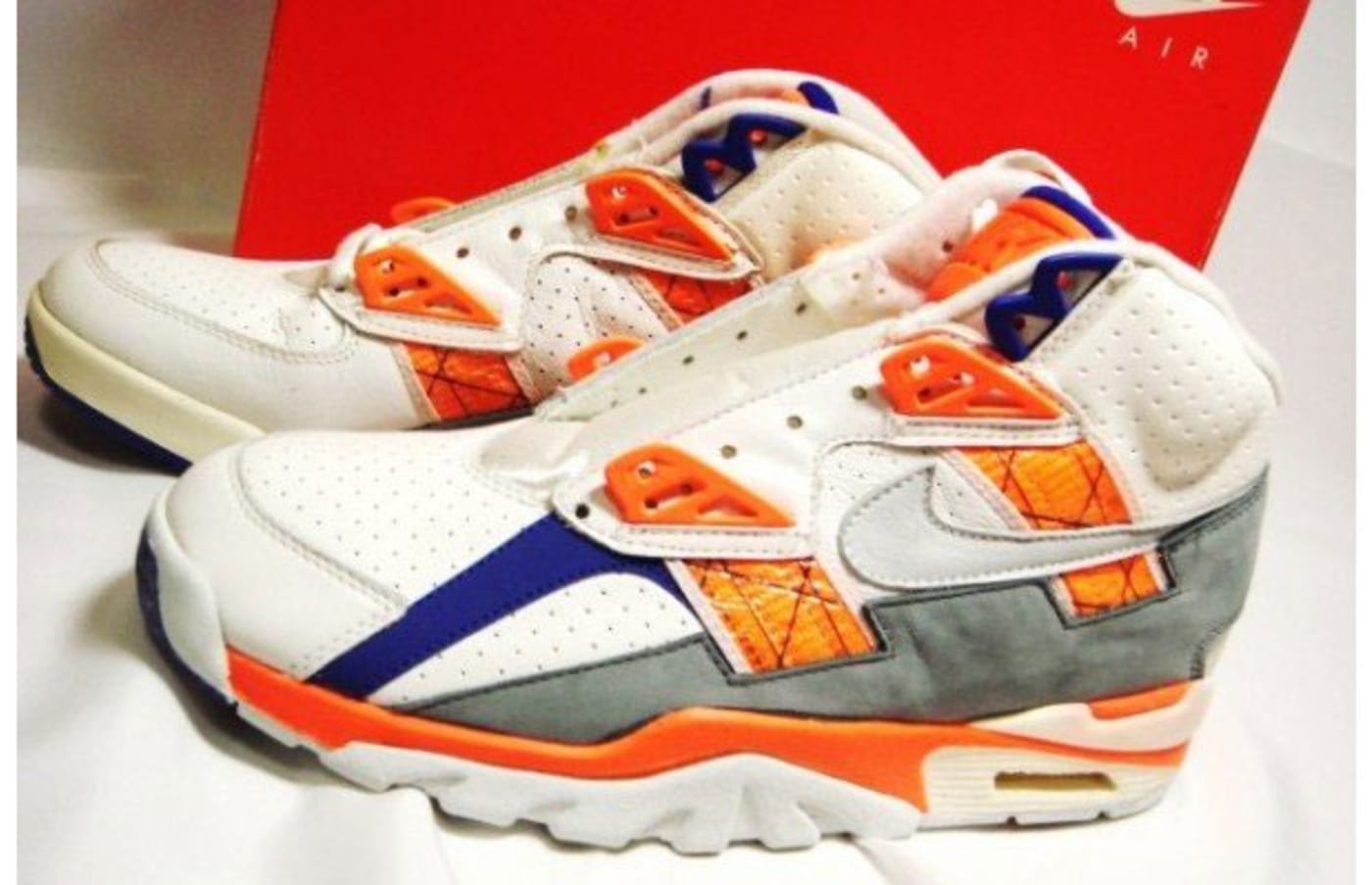
Year Introduced: 1990
Bo knows sneakers. The “Bo Jacksons” came in the colors of Auburn and the Oakland Raiders, and featured unique, industrial-looking support straps that helped keep Bo’s foot in place. The 3/4 cut Trainer SC was prepared for anything – just like Bo.
42. Zoom LeBron II
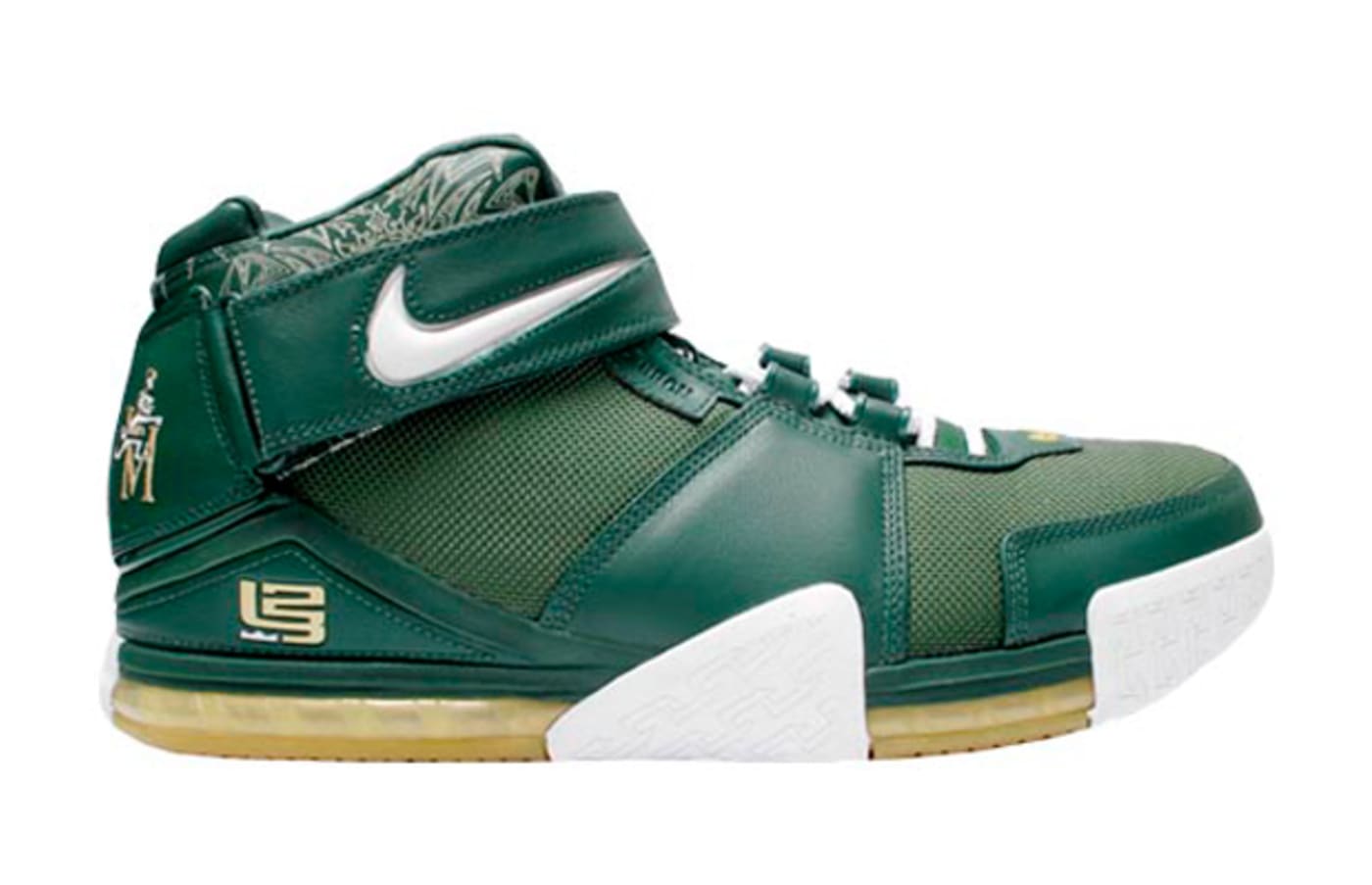
Year Introduced: 2004
LeBron James played football as well as basketball in high school, and the Zoom LeBron II would have worked equally well for both. With it’s double-stacked Zoom Air, ballistic mesh construction and removable straps, the Zoom LeBron II was tough enough for anyone and anything. Even LeBron.
41. Air Jordan II
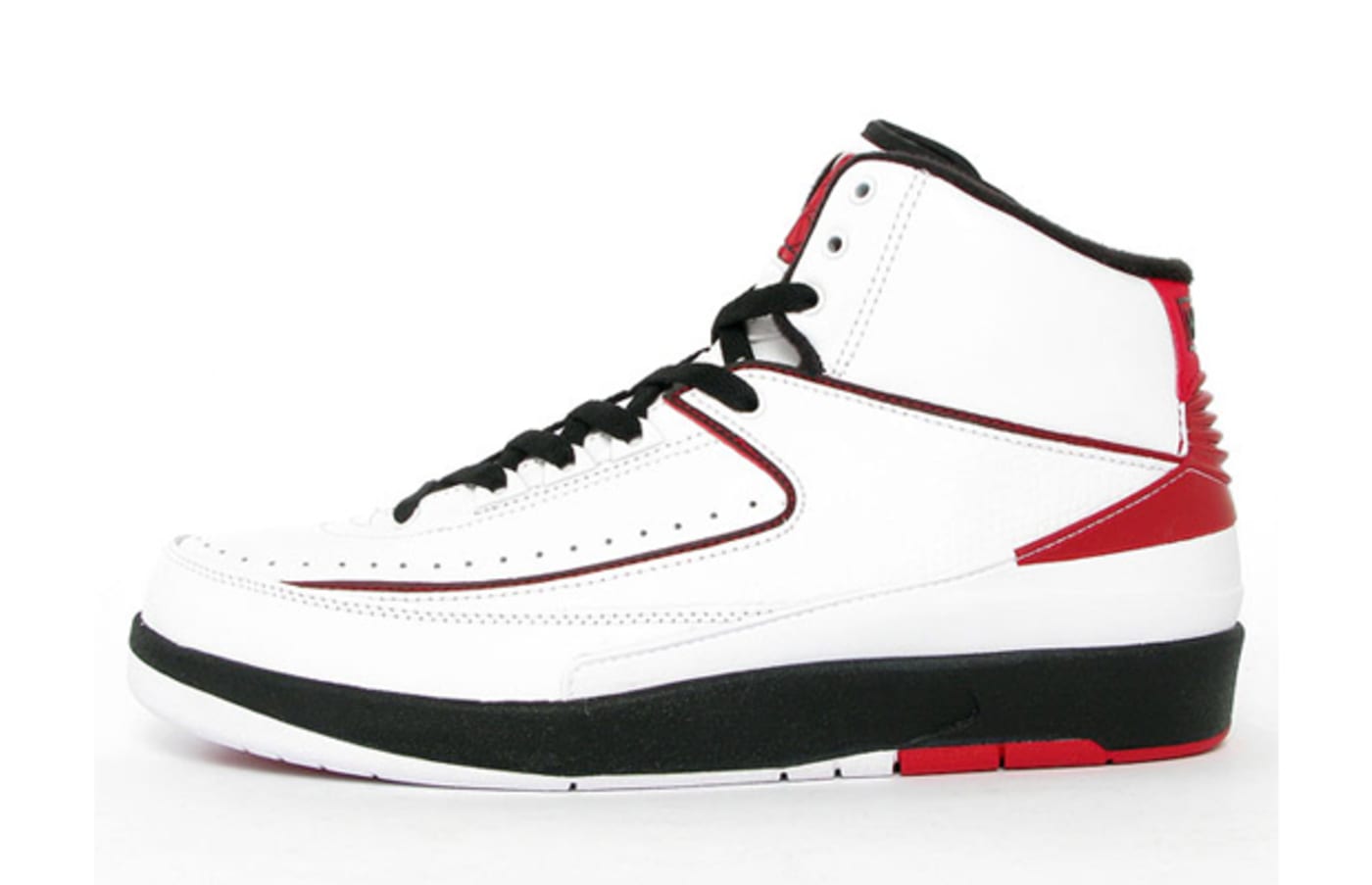
Year Introduced: 1987
Nike must have been feeling particularly adventurous following the success of the original Air Jordan. Why else would the second model have been such a radical departure? The first Air Jordan was manufactured in a dizzying array of colorways, the second in just two. The first was $65, the second a stratospheric $100. The first featured a more or less standard Nike design, the second added iguana print leather and did away with the Swoosh – this a full decade before the creation of Jordan Brand.
40. Air Stab
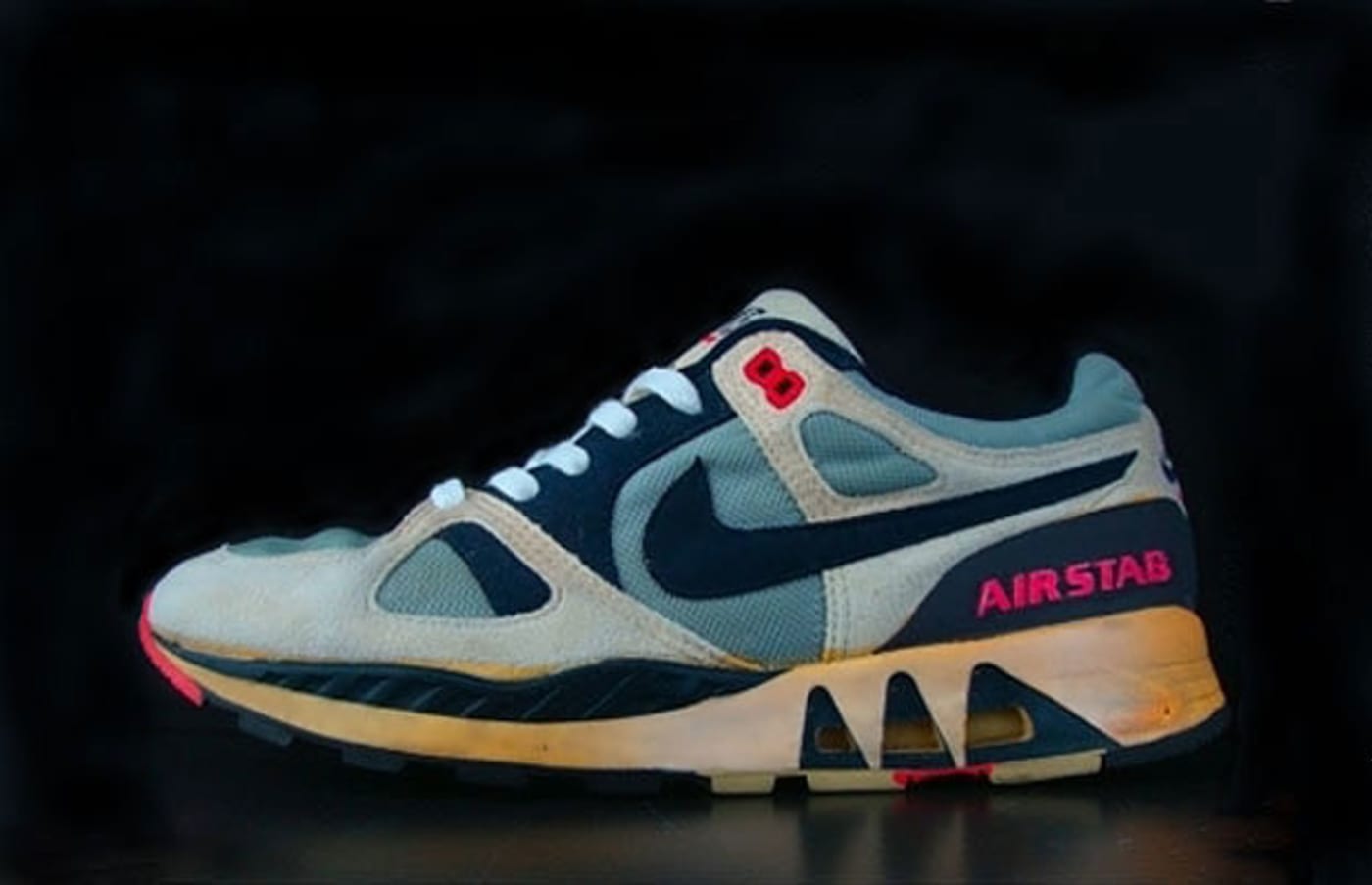
Year Introduced: 1988
The Stab stood for “Stability,” but that didn’t stop some stores from seeing more perilous connotations – following a series of actual stabbings, the Air Stab was actually removed from shelves in the UK. Easily the most attractive stability shoe ever made, the Stab featured a unique Airbag treatment with additional foam pillars on the outside, as well as some super-aggressive lettering.
39. Huarache 2K4
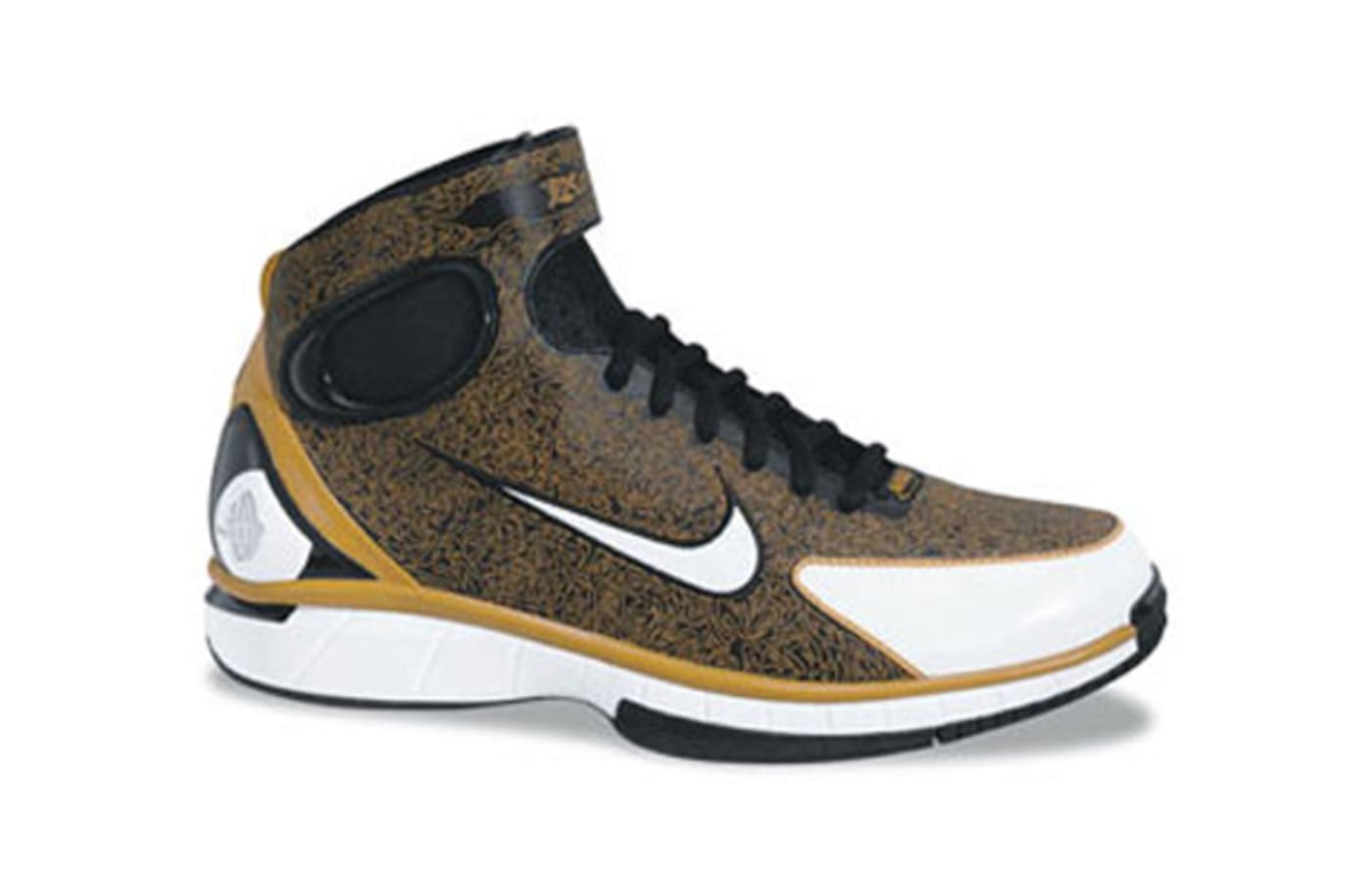
Year Introduced: 2004
Kobe Bryant’s first Nike signature shoe in everything but name, the Huarache 2K4 was a huge advancement over its 13-year-old predecessor, the Air Flight Huarache. There was the Zoom Air cushioning for one, and the fact that the upper eyelets were replaced by a simple Velcro strap. Kobe’s ensuing signature line would go much lower and lighter, but he still cites the Huarache 2K4 as an all-time favorite.
38. Air Penny II
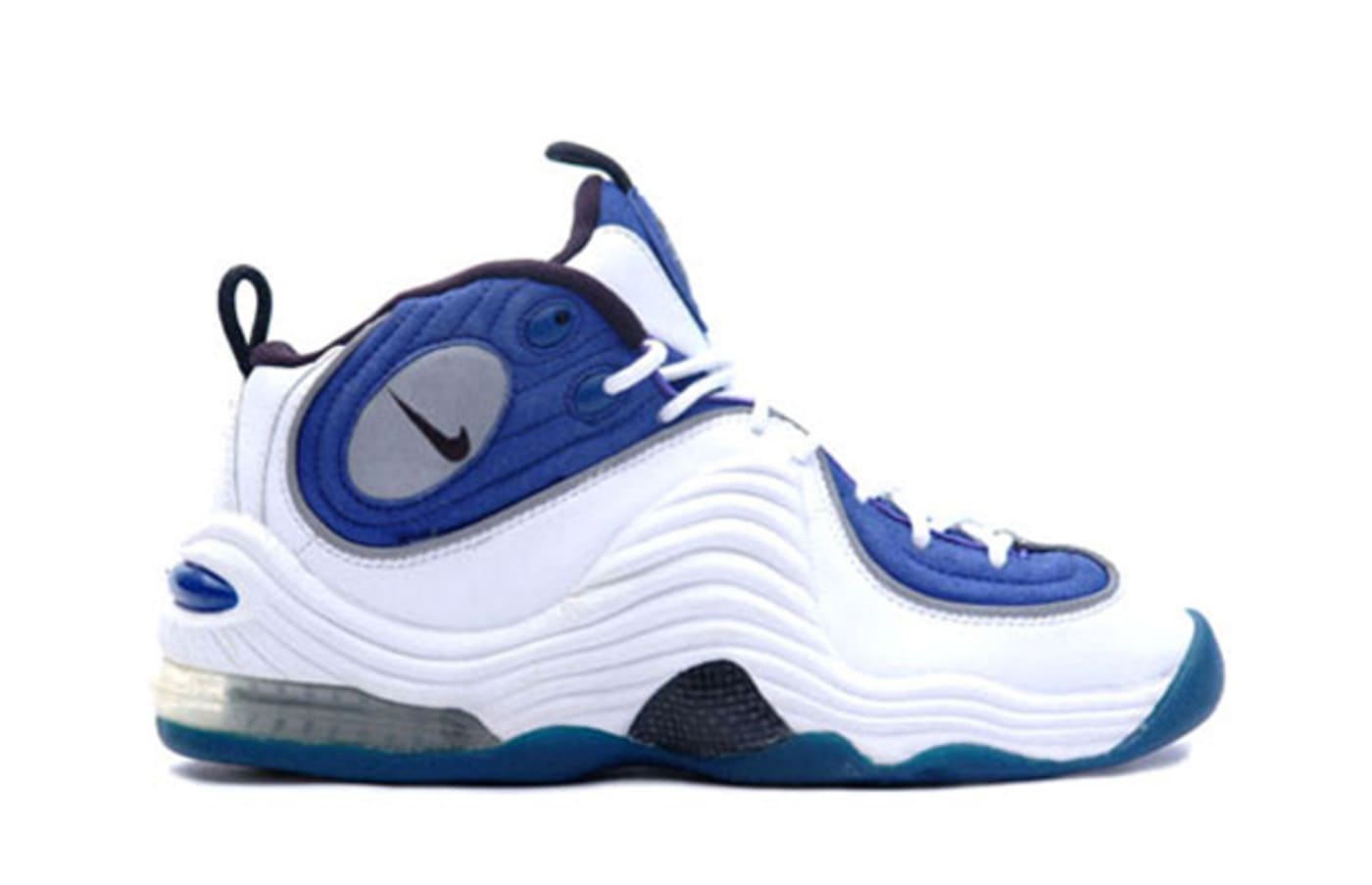
Year Introduced: 1996
The foam “wing” that extended up the forefoot of the Air Penny II, forcing the lacing to curve inward, was a love-it-or-hate-it detail that made the sneaker what it was. Equipped with the now-classic combo of Zoom Air up front and Max Air in the heel, Penny’s second signature shoe stands as his best.
37. Zoom Flight 95
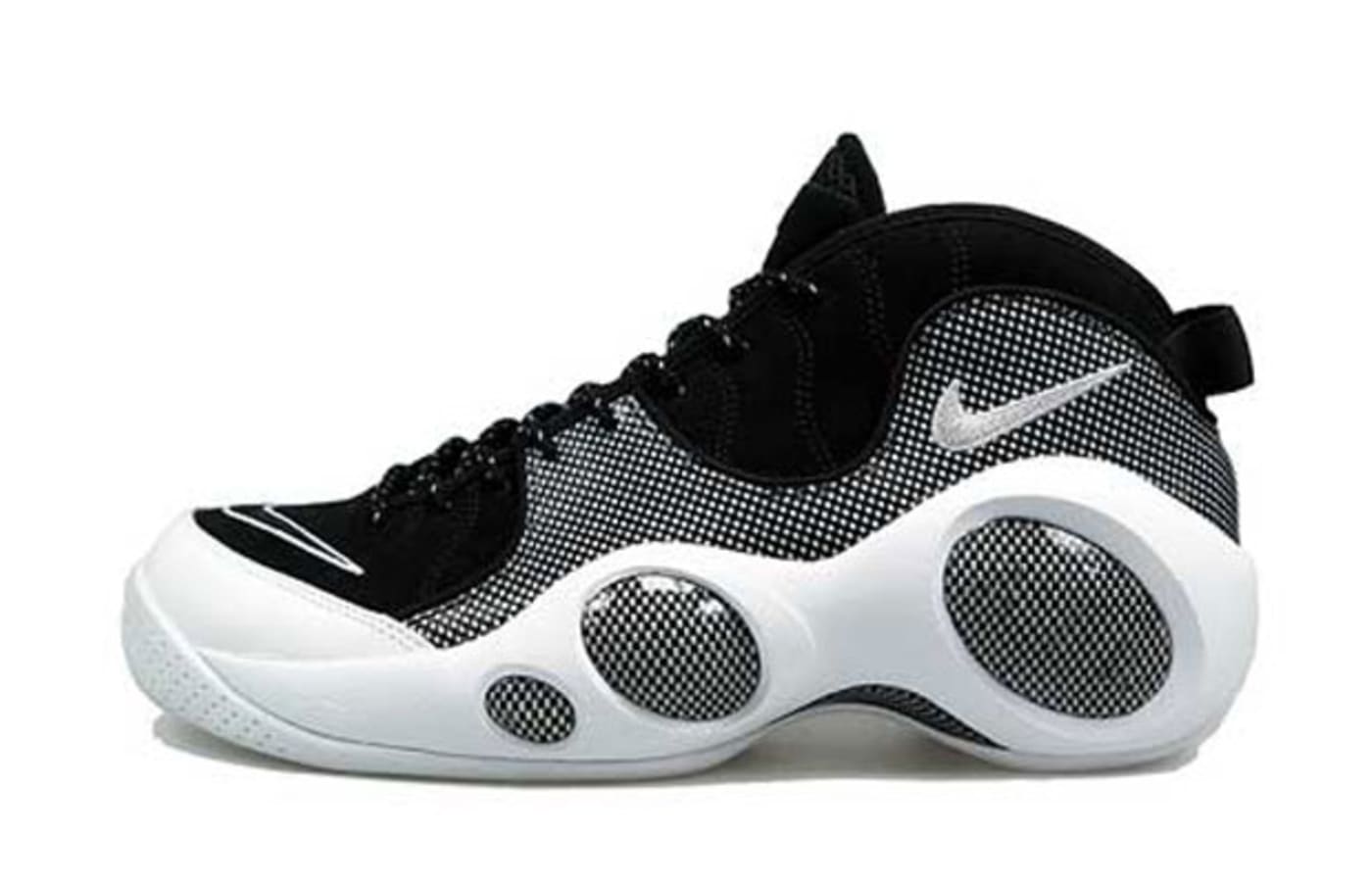
Year Introduced: 1995
Futuristic isn’t always the way to go with shoe design – usually what’s futuristic today is horribly dated tomorrow – but the first Nike Zoom Flight defied this wonderfully. The “bug-eyed” kicks with their carbon fiber-esque accents looked fast standing still, evoked some of the best aspects of exotic car design, and were instantly recognizable from a mile away.
36. Air Jordan VI
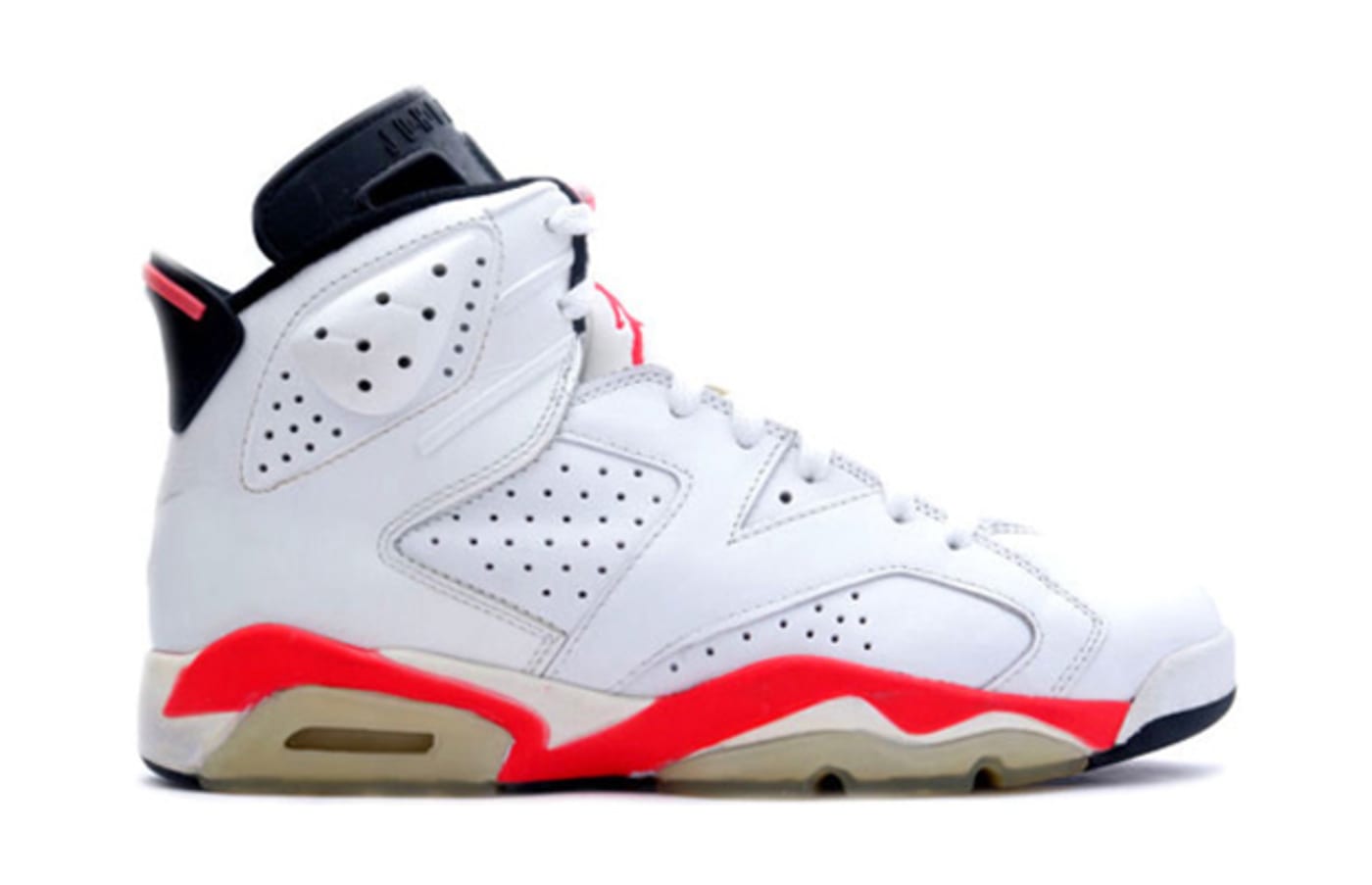
Year Introduced: 1991
The Air Jordan VI is what would have happened if Pablo Picasso were asked to re-interpret the Air Jordan V. The same basic shape, only with more sharp angles, different colorblocking, and a rear “wing” inspired by the one on the rear of Michael’s Porsche.
35. Air 180
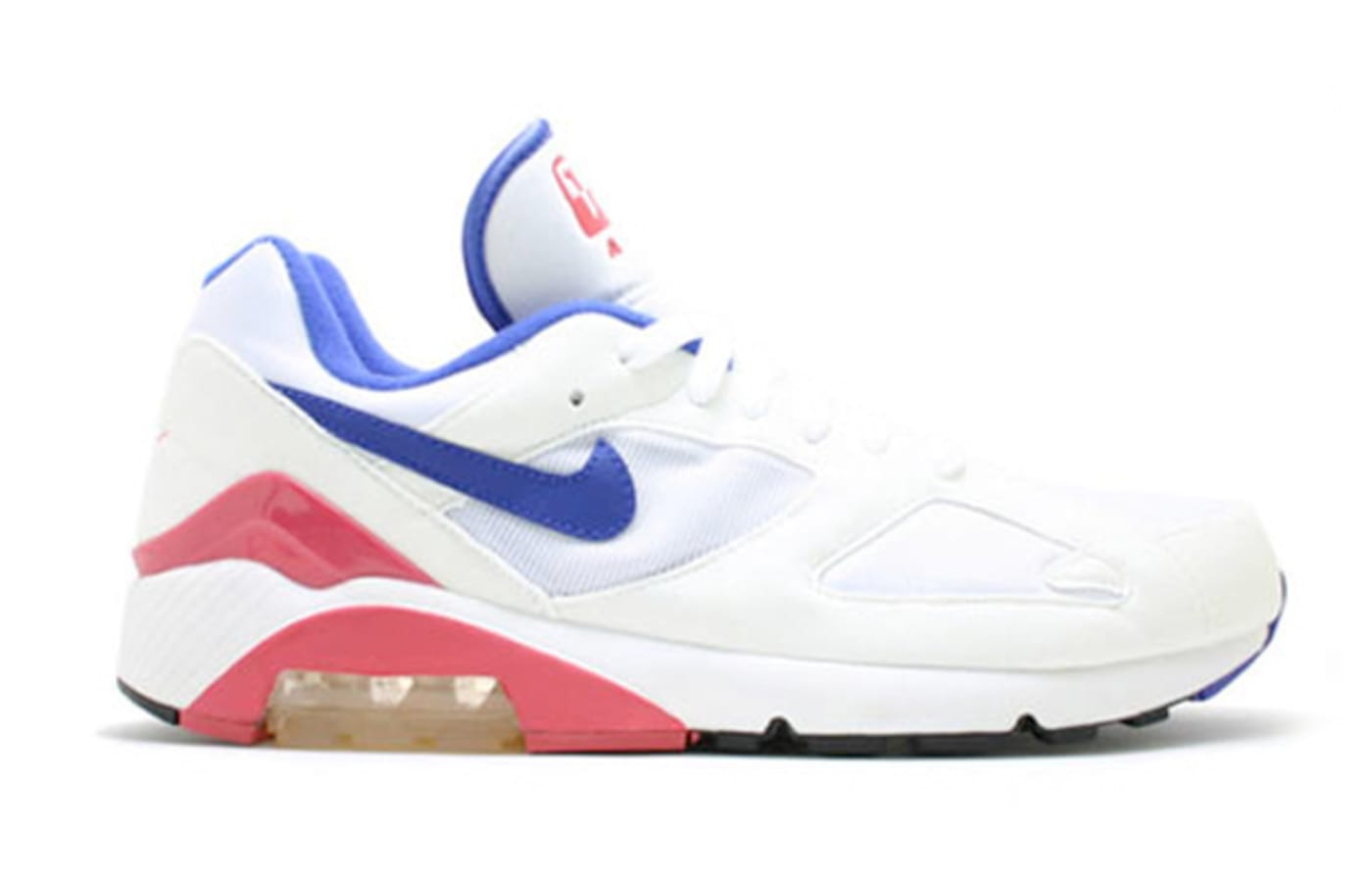
Year Introduced: 1991
The Air 180 was a mind-boggling feat to youngsters that saw it on the shelves of the local sporting goods store. How in the world did they get the Air bubble to hold on the bottom of the shoe? Not to mention the 180 was very well-respected in the running community. It also was a huge step in the direction of Max Air cushioning technology that would come in other Nike models.
34. Air Force Max

Year Introduced: 1993
Along with the Air Flight Huarache, the Air Force Max was famously worn by the University of Michigan Fab Five. And, as a successor to the Air Force 180, it was also worn by Charles Barkley. In the ’90s, that represented a lot of influence. But the Air Force Max was going to be a big shoe regardless. The mid cut, the full-on Air Max unit, the Velcro strap – the shoe was as much of a ’90s icon as the Fab Five themselves.
33. Free Run 2
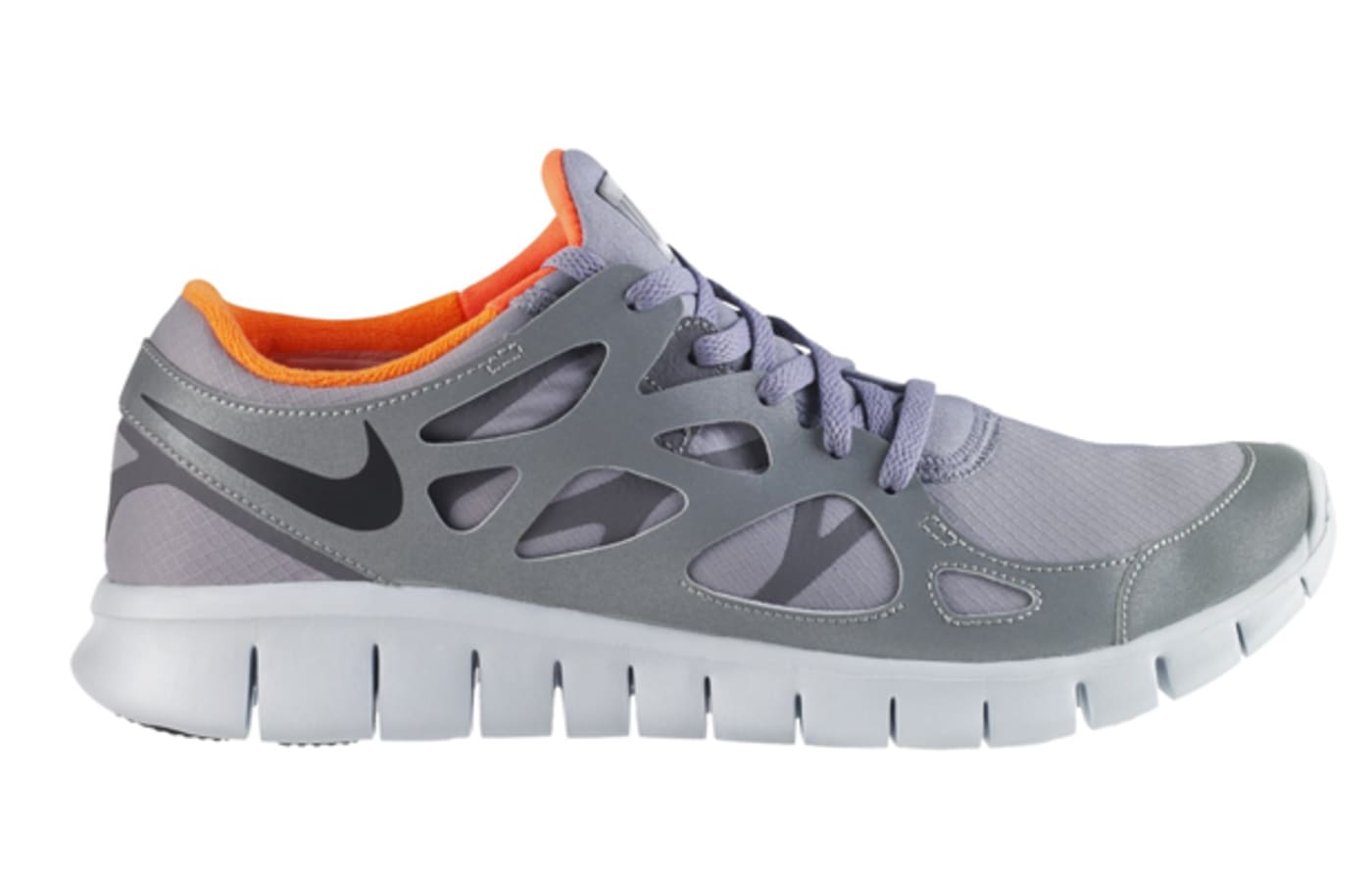
Year Introduced: 2011
A case could be made for nearly every Free Run shoe to appear on this list, but it’s the Free Run 2, with its tendon-mimicking overlays, that really made the technology shine. The same overlays were utilized on the Air Max 2012, but it was 2011’s Free Run 2 that made the best (and, at $90, most wallet-friendly) use of the design. The all-black makeup made inroads amongst even the most fashion-conscious menswear illuminati, while the NIKEiD program allowed for all sorts of wild designs.
32. Air Flight 89
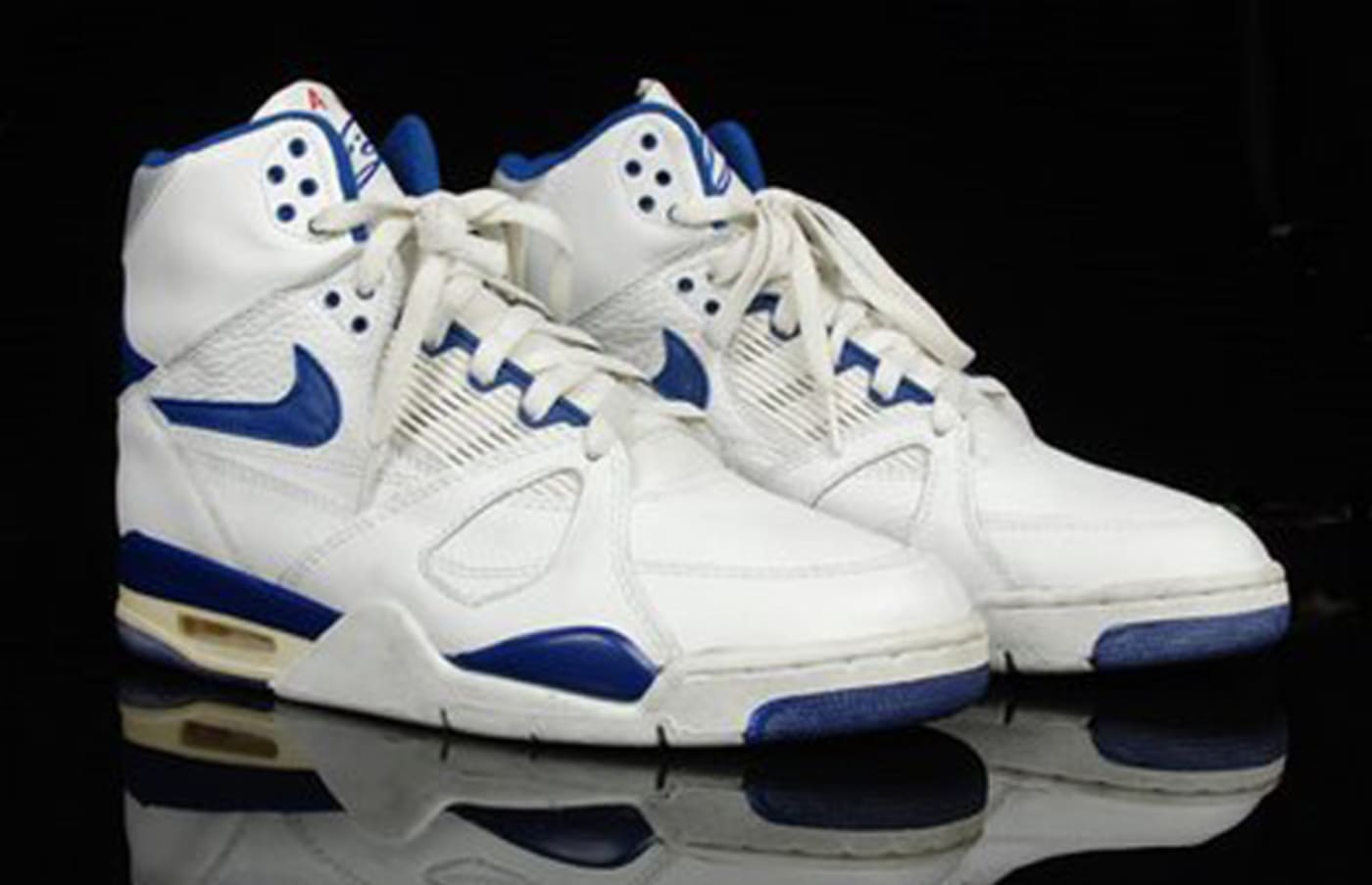
Year Introduced: 1989
The Flight 89 was one of those shoes that nearly every All Star in the NBA wore at one point or another. It used classic styling and a visible Air unit to basically make the kids that had a sneaker budget sick to their stomach. There was no way you were getting them but that’s what makes it such a successful model as a retro as well, the reliving of youth. The Flight 89 is a classic in all ways possible.
31. LunaRacer

Year Introduced: 2008
The runners answer to the Hyperdunk, the featherlight LunaRacer introduced Nike’s two most innovative technologies – Lunar Foam and Flywire – in one handy package. And while both technologies have found their way into countless silhouettes since, none have been quite as elegant in their simplicity as the LunaRacer. It was so light and streamlined that they even had to lose an “R.”
30. Air Max Uptempo
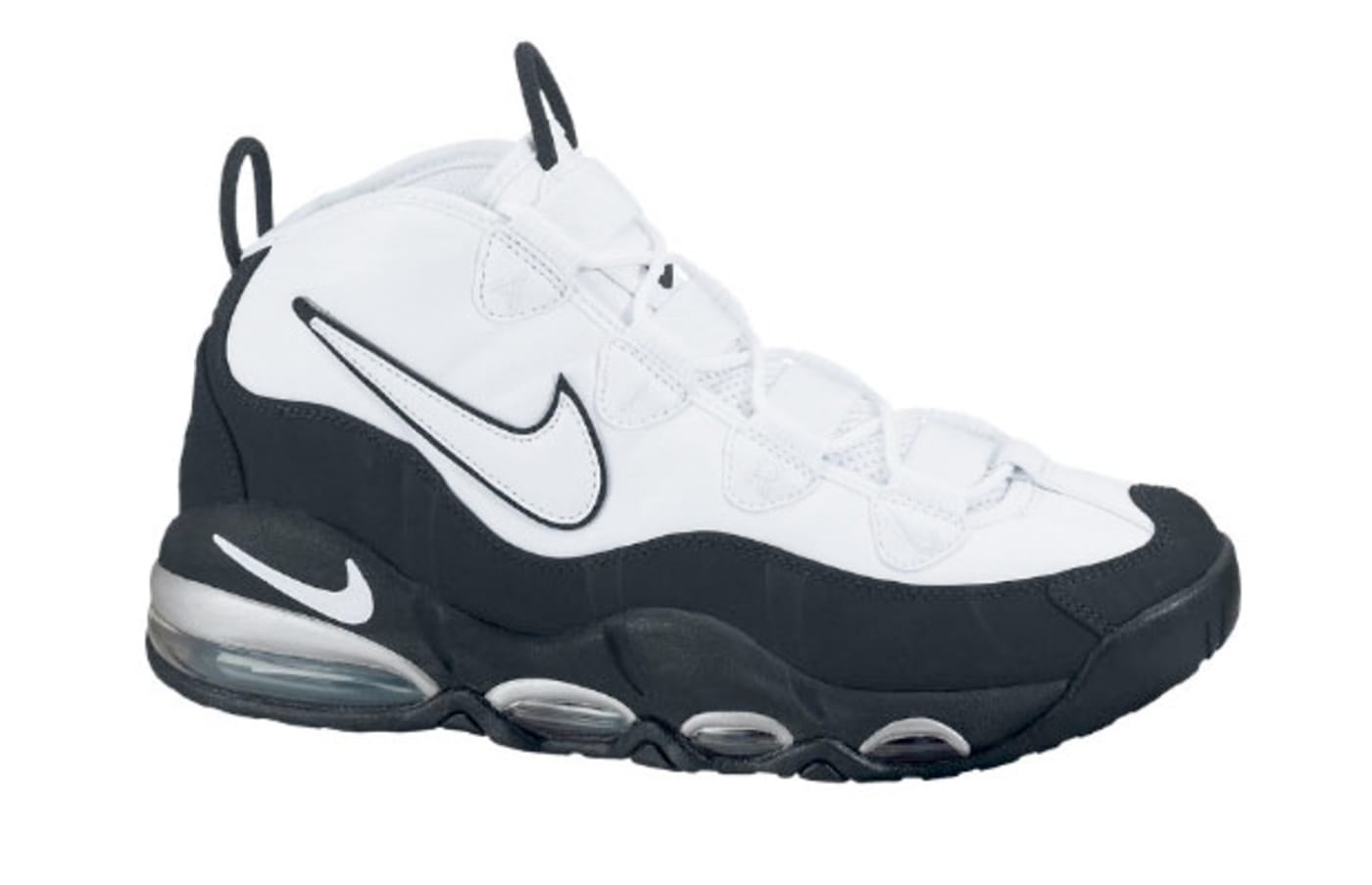
Year Introduced: 1995
Until Lunar came along, there was simply not a cushier, more comfortable sneaker than the Nike Air Max Uptempo. With its flat sole and full-length Visible Air unit it was equally prepared for on- or off-court use, and with just four “eyelets” it would go from saggy to cinched tight at a moment’s notice. The original “Spurs” colorway with Mystic Teal is still a banger.
29. Mowabb
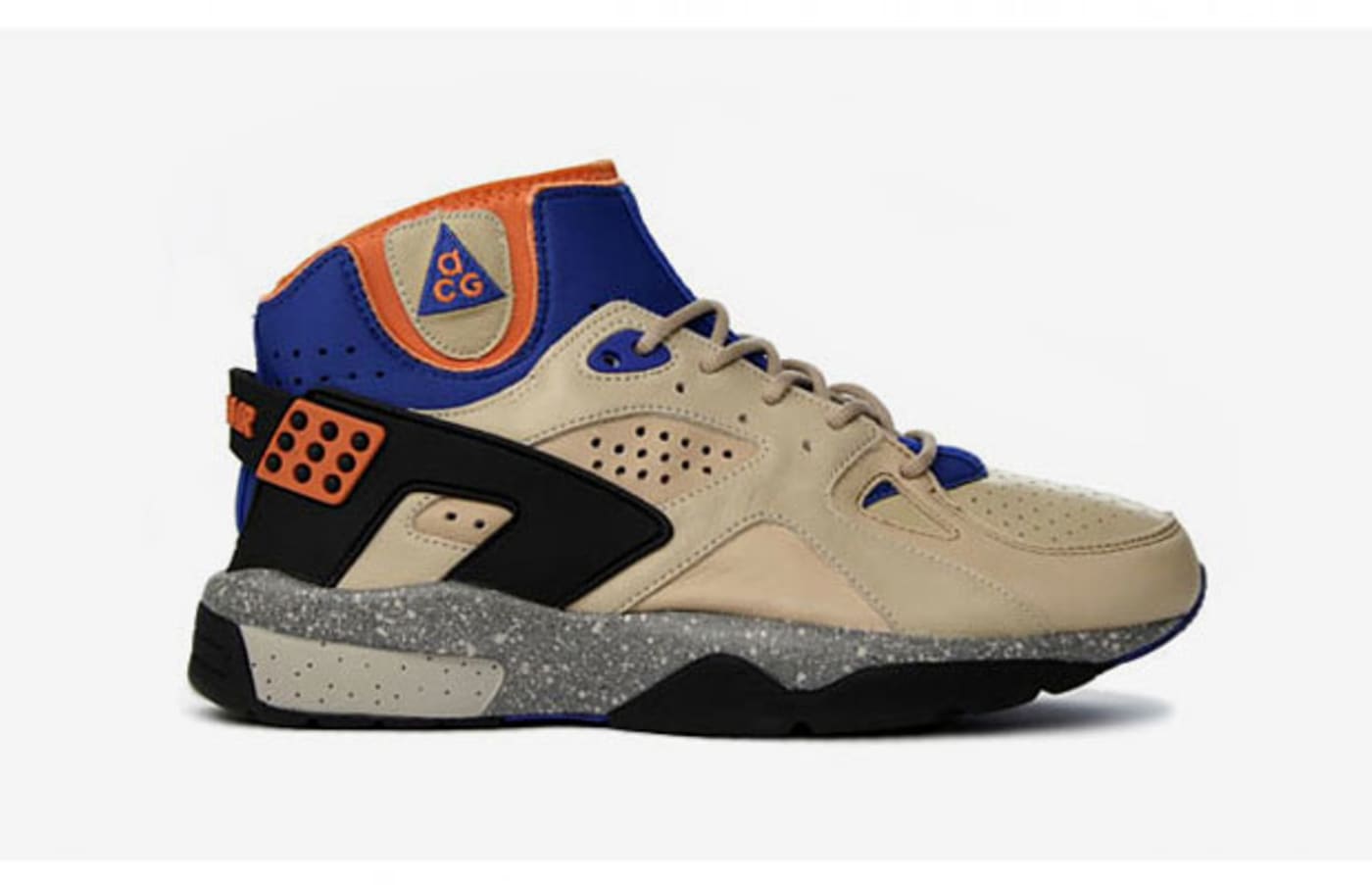
Year Introduced: 1991
The idea of “Just Do It” got new legs in 1991 with the release of the Mowabb. The ACG model, designed by Tinker himself, utilized Huarache technology and held that odd earthy mixed with purple color scheme so damn well. Added bonus: F’ing awesome advertisements urging consumers to head to the hills and toss two fingers to the horrors of the urban environment.
28. Zoom Kobe V

Year Introduced: 2009
The Zoom Kobe IV took a tentative step towards a high-tech, lightweight basketball lowtop, the Kobe V took the full-on leap. Made up of overlaid synthetics and sitting on a Zoom Air equipped sole with aggressive outriggers, the Eric Avar designed Kobe V proved that ankle support didn’t just come from collar height. Also, what Kobe Bryant wanted, Kobe eventually got.
27. Challenge Court
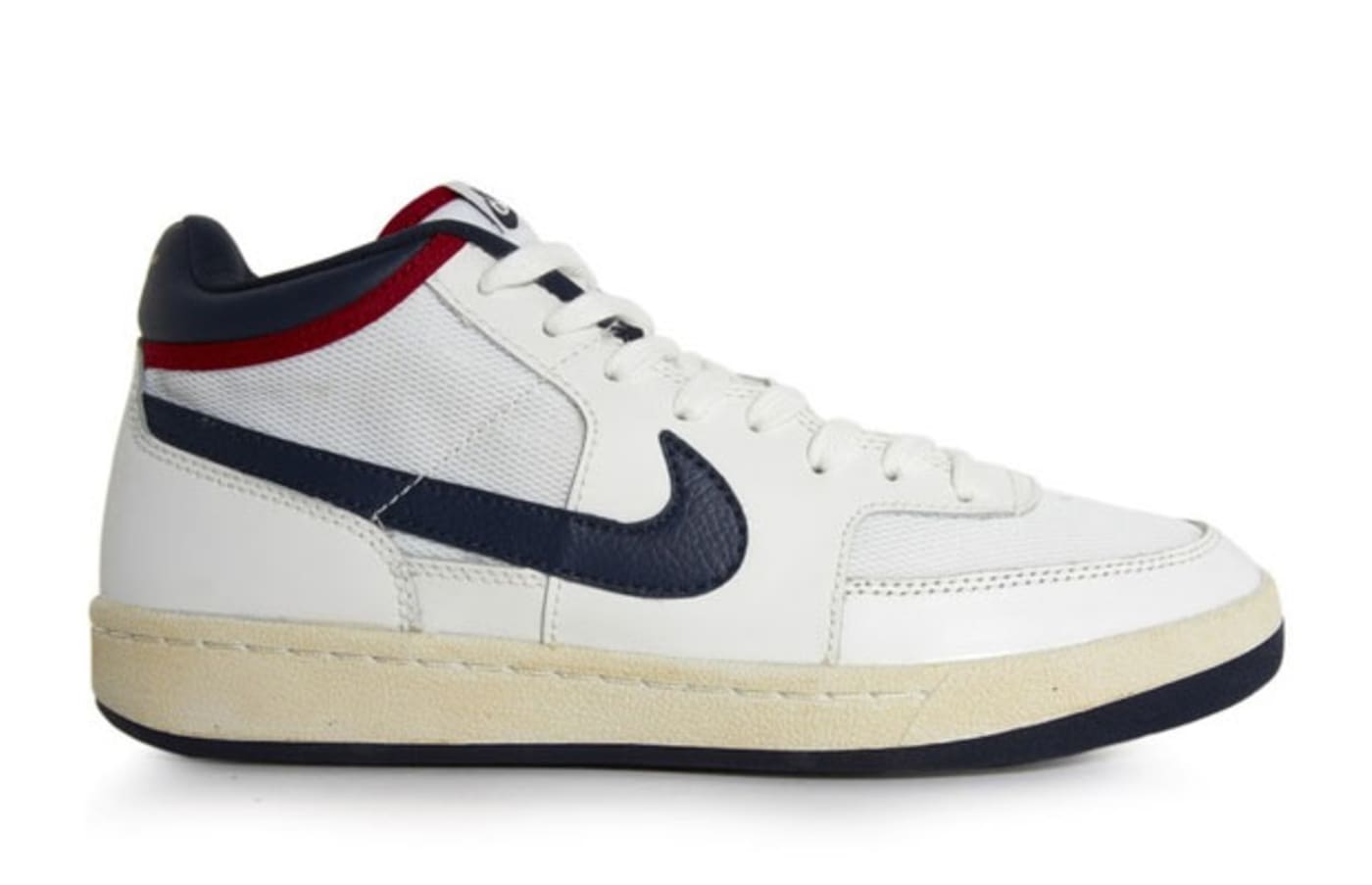
Year Introduced: 1983
Ostensibly a tennis sneaker, the 3/4 cut Nike Challenge Court saw some action on the hardwood as well. The leather and mesh 3/4 cut was a staple for many brands in the ’80s, but only the Challenge Court got the John McEnroe seal of approval, which, in the ’80s, was no small thing.
26. Blazer
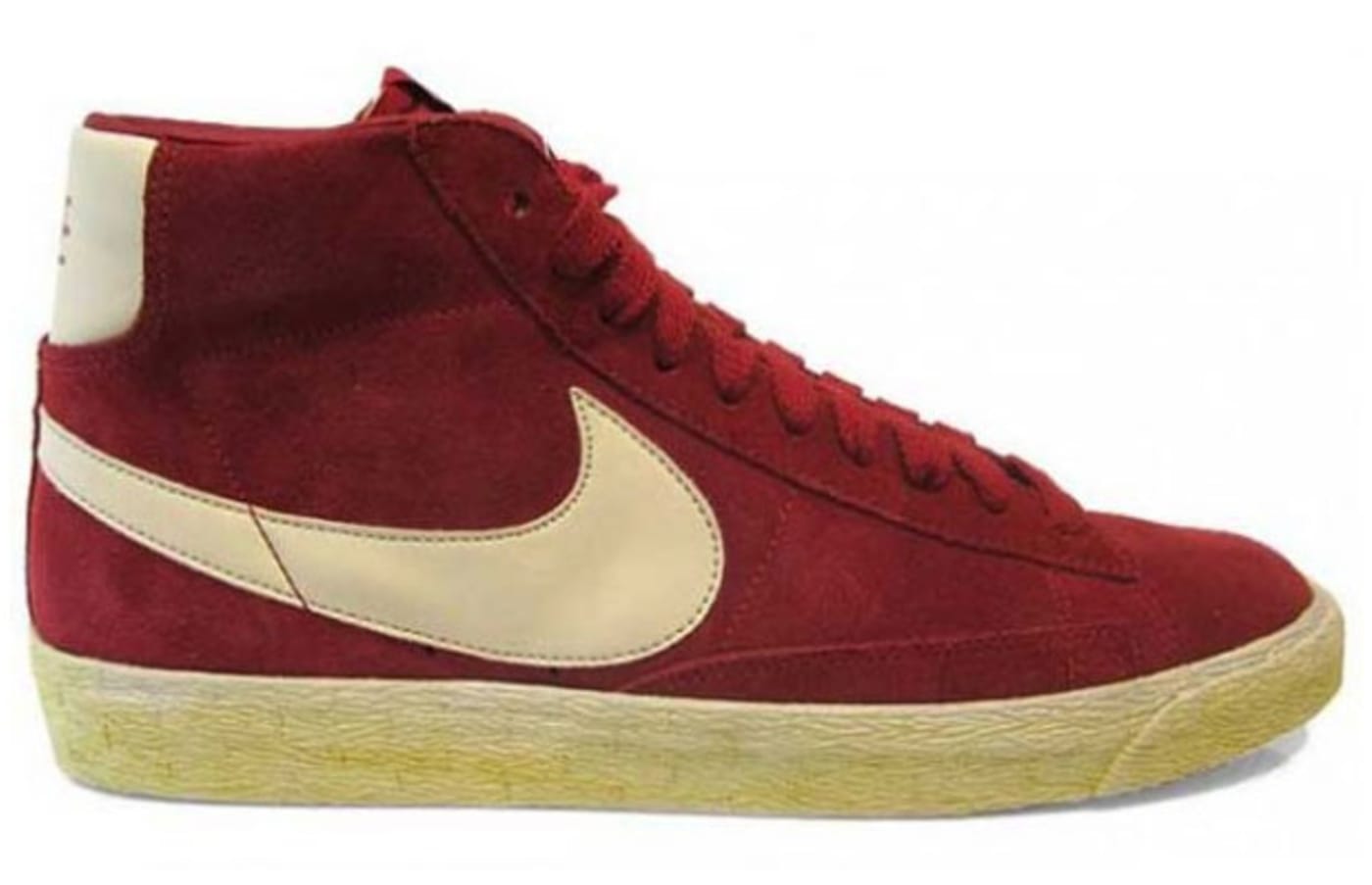
Year Introduced: 1973
Before Nike could think globally, they had to act locally. The Blazer, their first basketball shoe, was named for the basketball team in their back yard – the Portland Trail Blazers – and worn by several of their big names including Geoff Petrie. While not exactly a groundbreaking design, even for the early ’70s, the Blazer brought the Swoosh onto the hardwood – and continues to shine as part of Nike’s SB line. A true classic never dies.
25. Pegasus
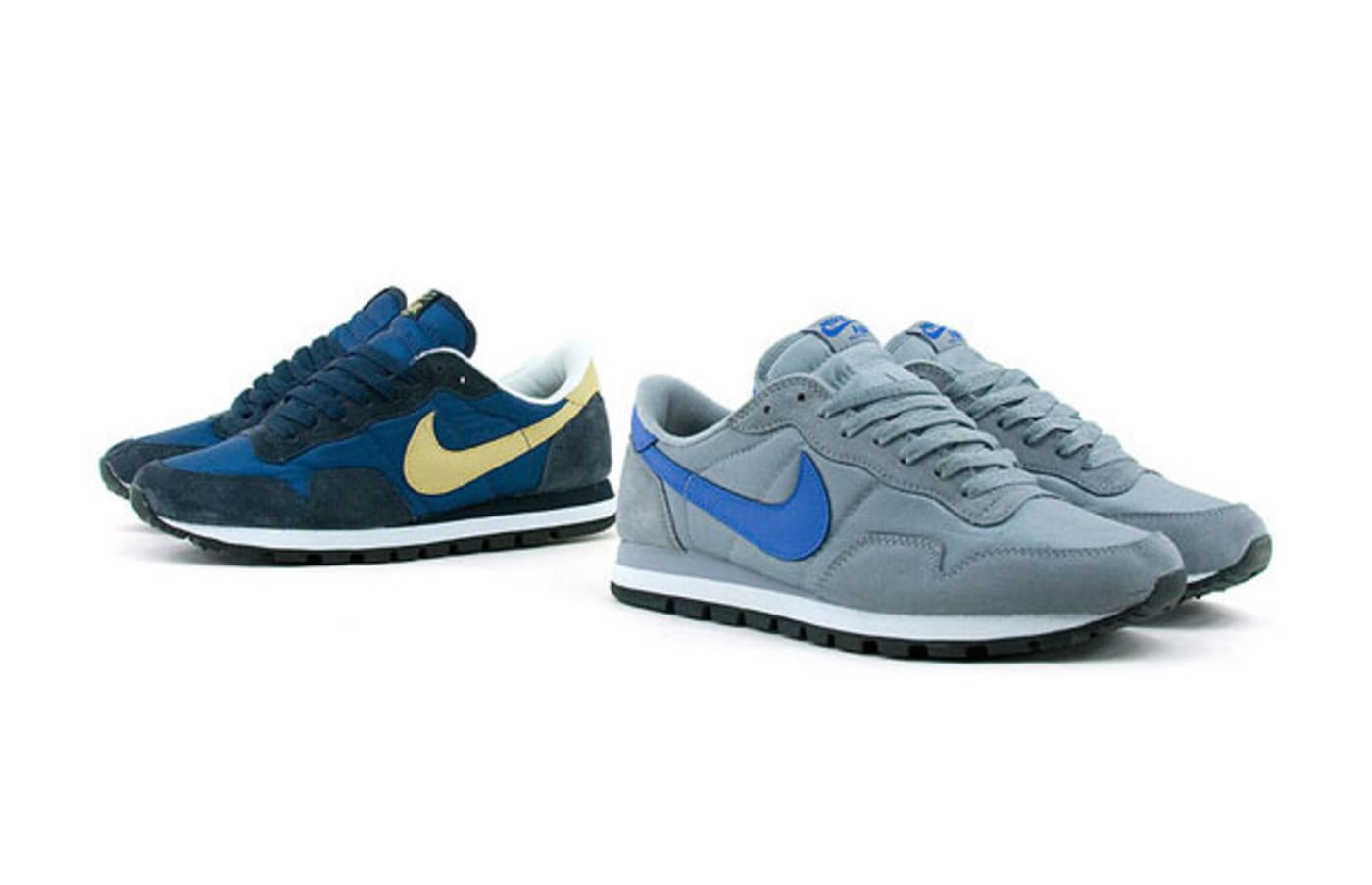
Year Introduced: 1983
With streamlined shape, staggered lacing, and modified waffle sole, the Pegasus took what the Tailwind started and, basically, perfected it. Now twenty-nine versions deep, the model has been a standard bearer for Nike’s running silo since 1983. High praise is due for continually setting standards.
24. LeBron X

Year Introduced: 2012
As befitting the Sportsman of the Year, defending MVP and NBA champion, the LeBron X is on some other-other sh*t. Fitted (in its ultimate form) with Nike’s basketball-specific Nike+ system, the LeBron X is not only the most high-tech hoop shoe, it’s the most well-informed. Fitted with a Hyperfuse upper and the first-ever 360 Max Zoom Air setup, the LeBron X is built for the best basketball player in the world right now. Sorry, Kobe.
23. Air Max 97
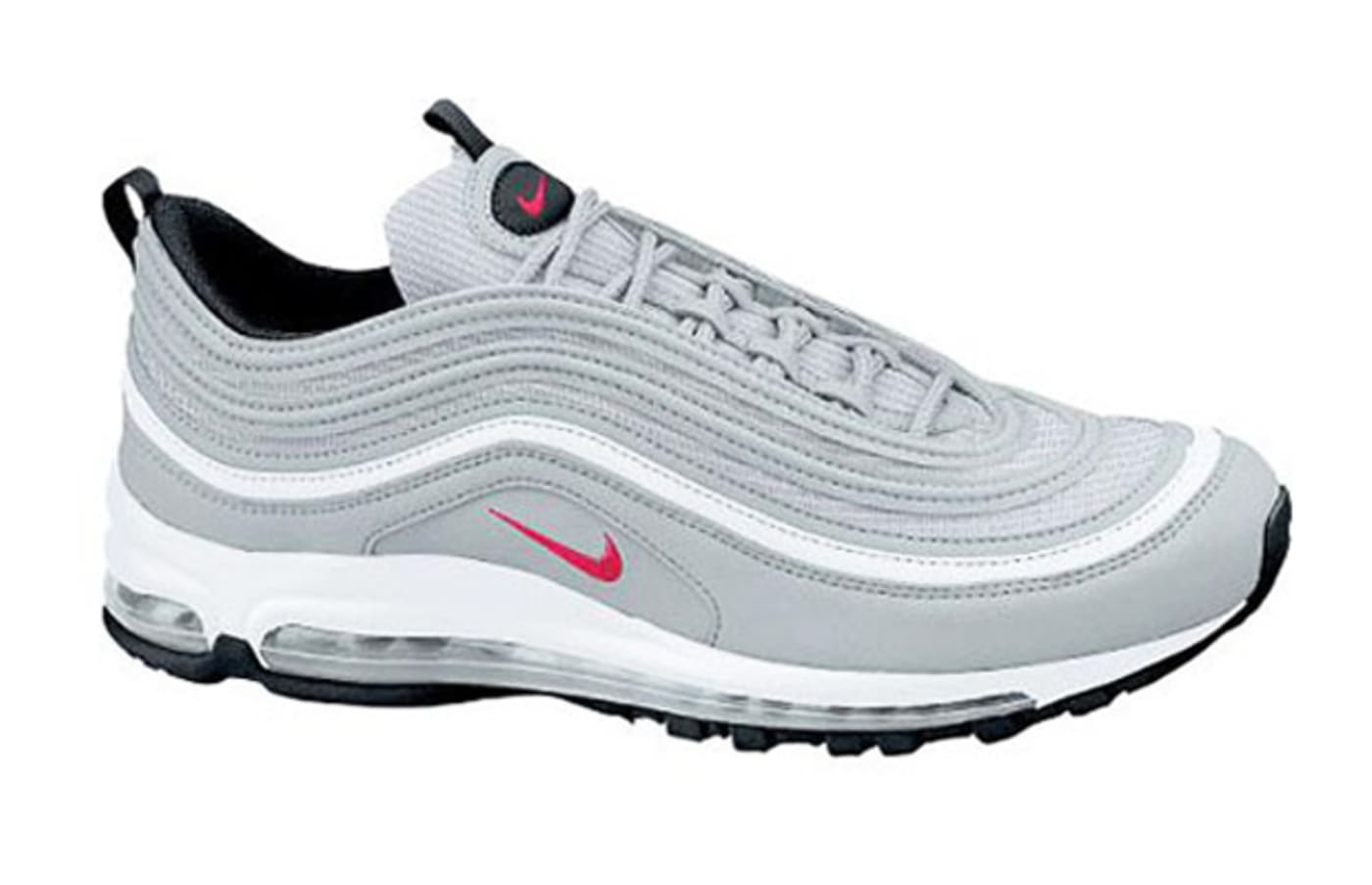
Year Introduced: 1997
The Air Max 97 seemingly skipped over the Air Max 96 and looked back to the Air Max 95 for design inspiration. It had the same sleek, front-to-back orientation, made even more streamlined by the all-new Airbag design. Done up in all silver with tons of reflective 3M, the Air Max 97 looked like it was back from the future.
22. Terminator
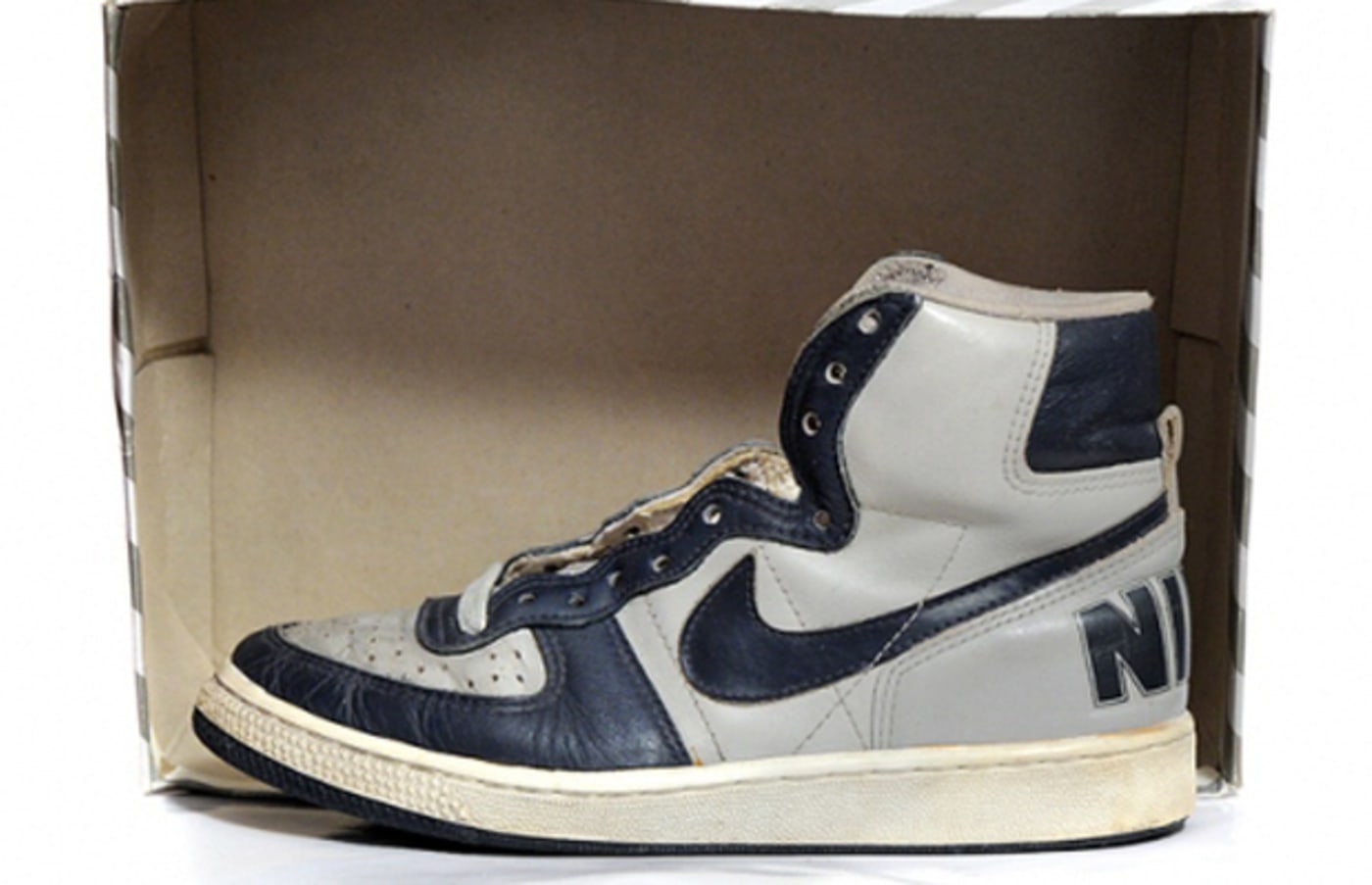
Year Introduced: 1986
What Georgetown wanted, Georgetown got. Not content to properly join the “Be True To Your School” Dunk program, the Hoyas received a shoe to call their very own. The Terminator was essentially just a grey and blue mashup of the Big Nike and the Legend, but as worn by the Hoyas it became infinitely more than that. The versions that read “HOYAS” across the back were the most sought-after, and center Ralph Dalton’s one-off knee-high pair were the most outrageous.
21. Air Max2 CB
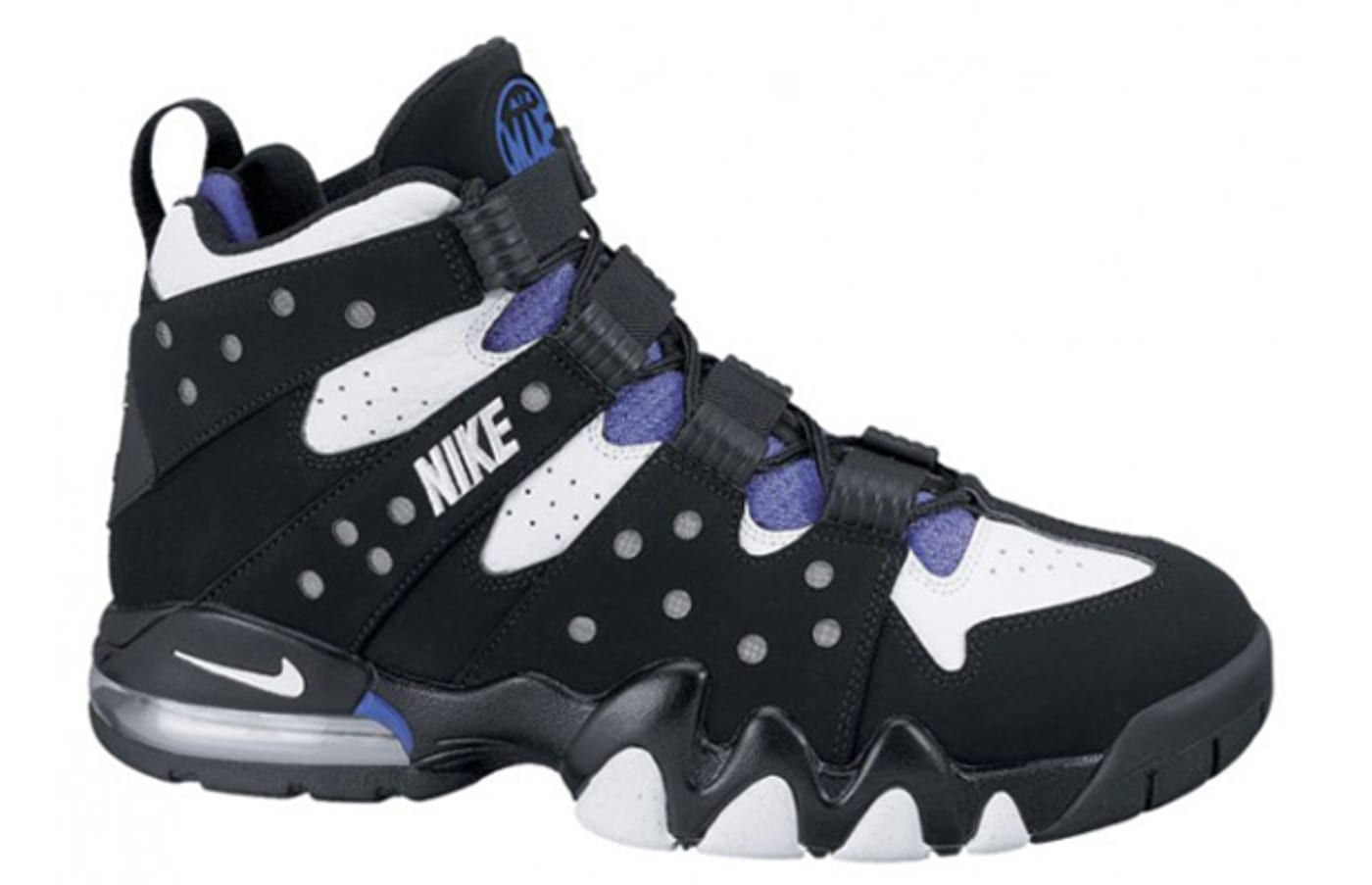
Year Introduced: 1994
Of course a Charles Barkley signature shoe would be designed based on a straitjacket. The Round Mound of Rebound was blessed with Air Max 2 in 1994, and he made the most of it, making another All-NBA team and another All-Star Game as a member of the Phoenix Suns. The CB utilized the same speedlacing system as Chris Webber’s Air Max CB in a more aggressive package, and remains one of Sir Charles’s best-ever shoes.
20. Foamposite One

Year Introduced: 1997
A molded foam shoe? The Nike Air Foamposite One remained a mystery until it hit shelves (or, for the observant, Mike Bibby’s feet), at which point its $180 price point and space-age appearance created more questions than it did answers. What WAS that thing? Nike has never been afraid of new technology – or the cost it incurred – and the Foamposite One has since more than proved its worth through various descendants (the Foamposite Pro, Flightposite, etc.) and a whole rainbow’s worth of colorways. And a full 15 years after its initial launch, it still looks like the future.
19. Air Jordan VII
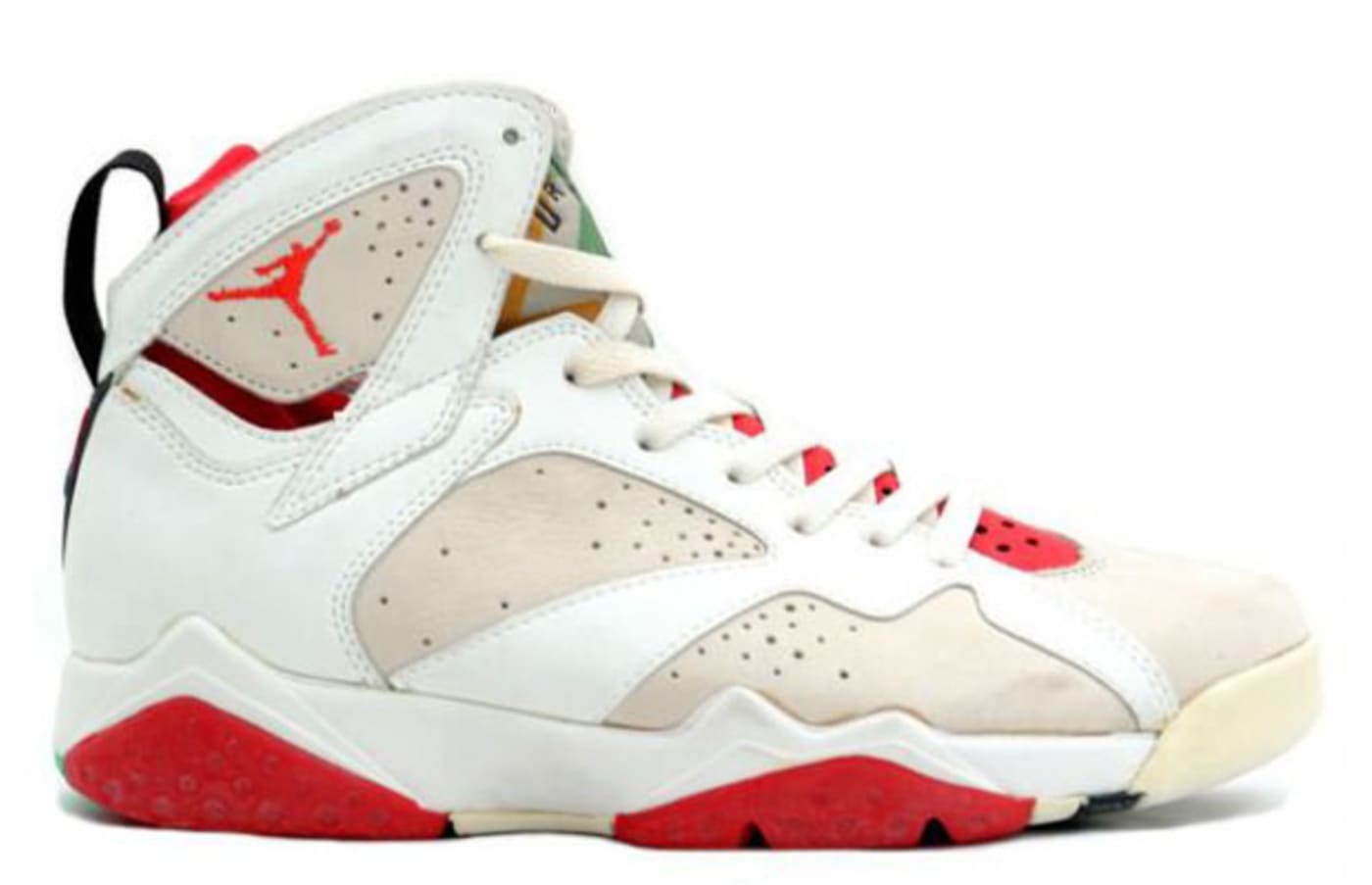
Year Introduced: 1992
With the Huarache concept fresh in his mind, Tinker Hatfield went minimalist on the Air Jordan VII. Gone was the Visible Air (for the first time since the II) and the clear rubber outsole sections – and any mention of “Nike Air” on the outside of the shoe. African-inspired patterns covered the tongues, and a full neoprene bootie hugged the foot tight.
18. Air Tech Challenge II
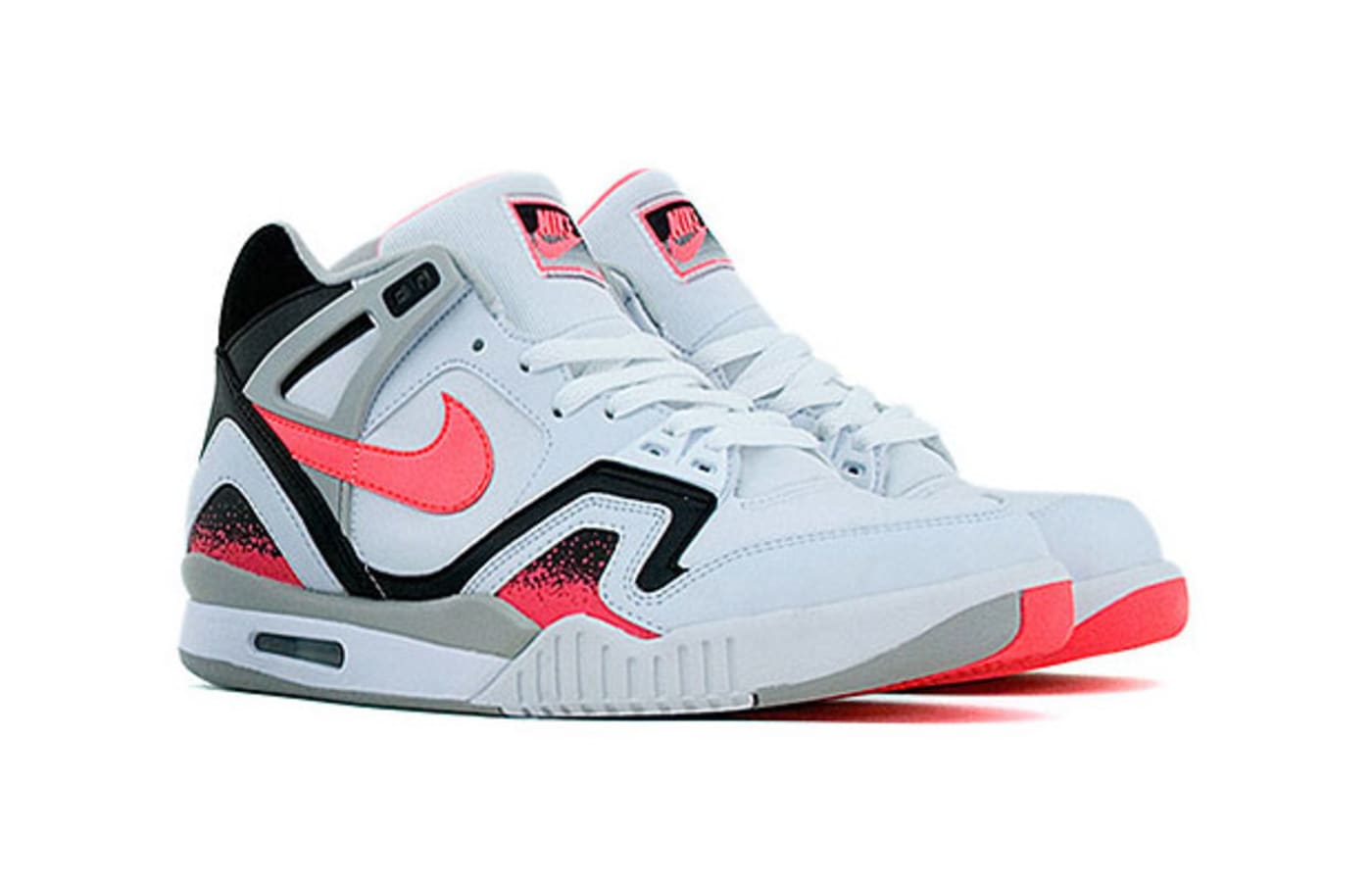
Year Introduced: 1989
Andre Agassi exploded onto the tennis scene in the late ’80s like an LSD-filled piñata. He brought neon colors, acid-wash denim and an epic heavy-metal mullet to a sport normally dominated by various shades of white (and John McEnroe). The Air Tech Challenge II, designed by (who else) Tinker Hatfield, splashed those colors proudly on the heel and toe, and – ironically enough – put tennis shoes on the level of basketball shoes.
17. Flyknit Trainer
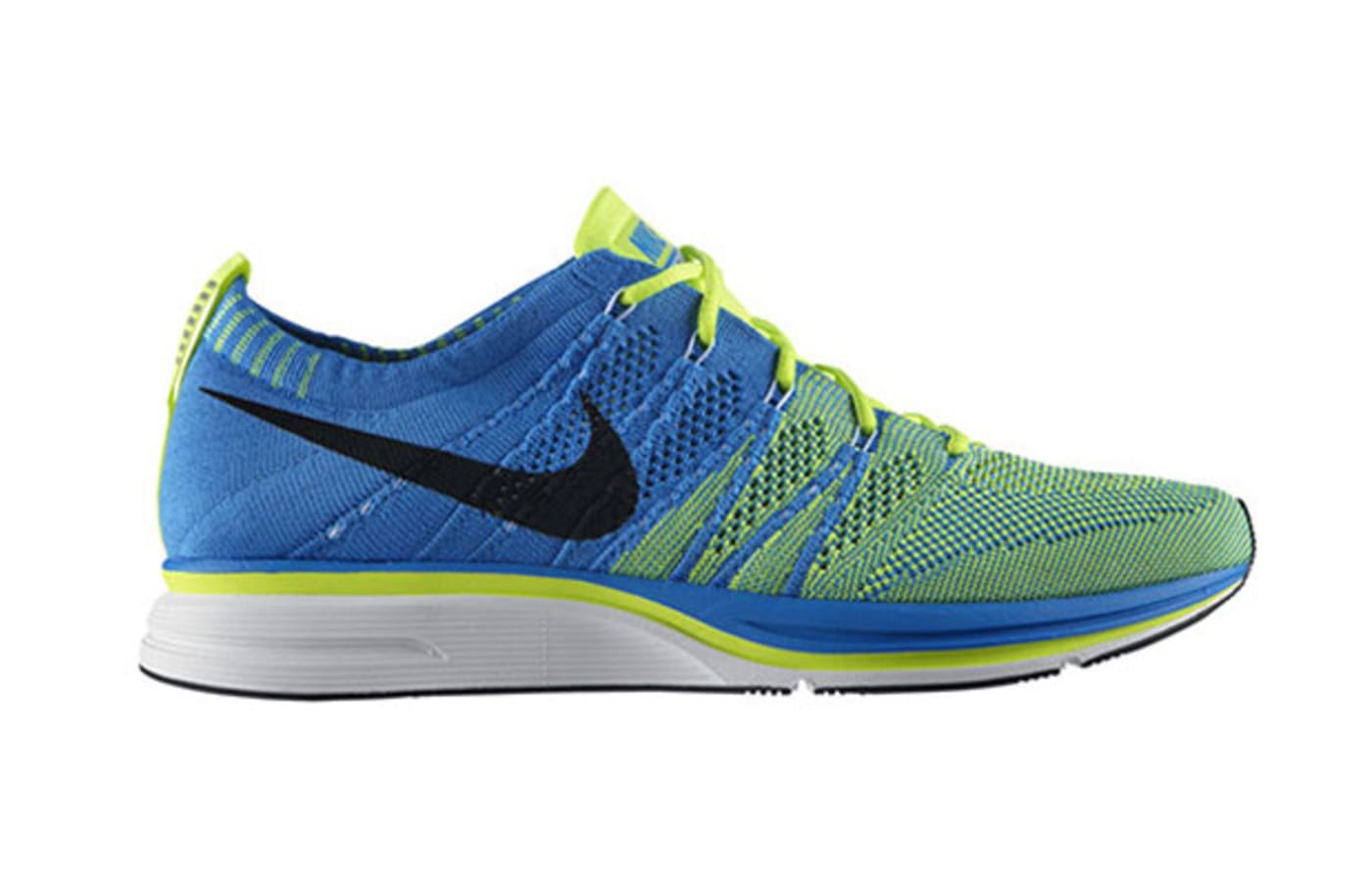
Year Introduced: 2012
A sleek racing flat designed for the 2012 Olympics, the Nike Flyknit racer represented an entirely new method of manufacture. By knitting the upper (no, Nike won’t hire your grandmother) Nike eliminated both waste and weight, finding a new way to put material only where necessary, and doing away with both stitching and pattern-cutting. The neon green uppers were all over the Olympics, both on tracks and on the medal stands. Next stop, the streets.
16. Hyperdunk
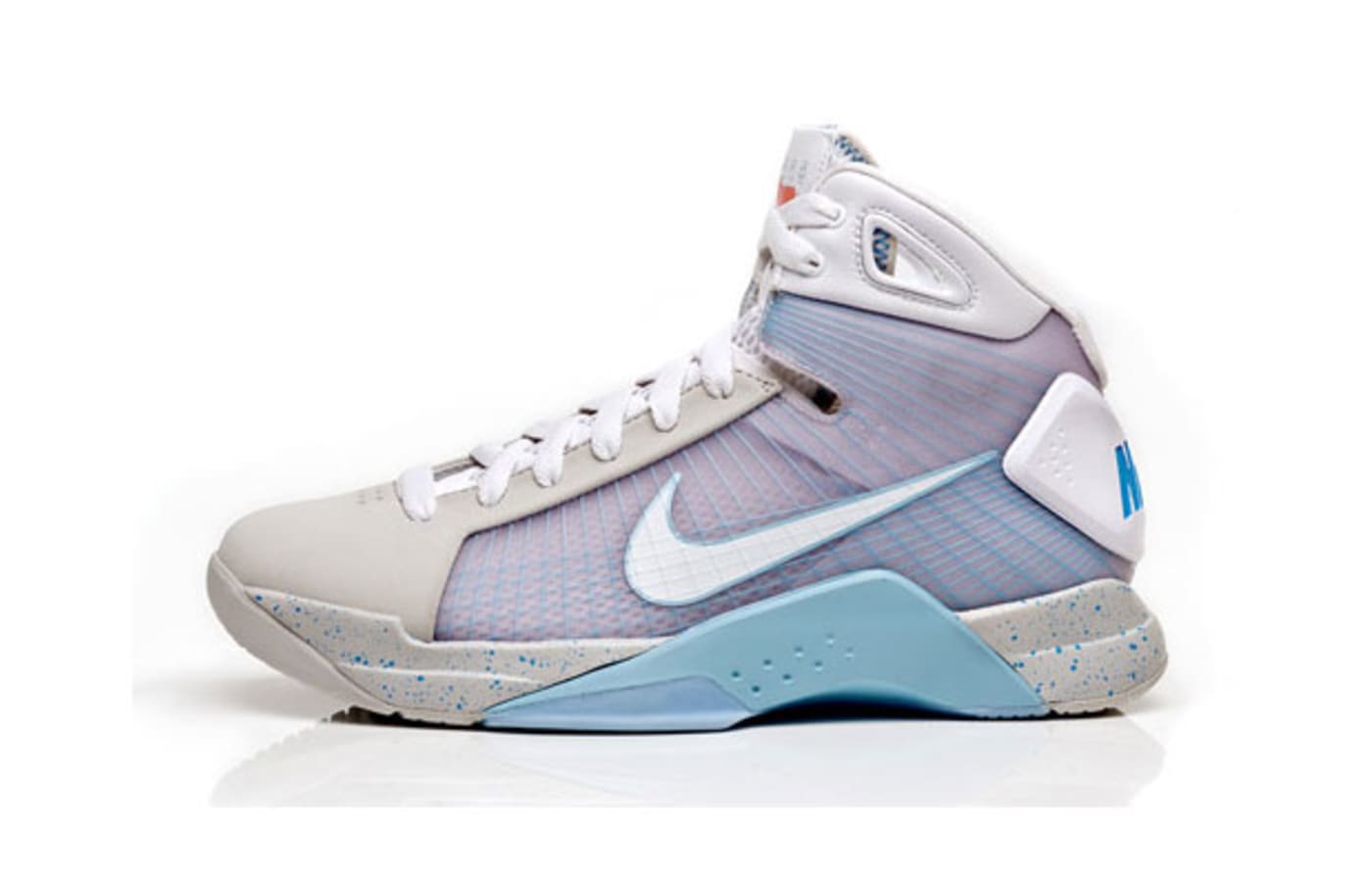
Year Introduced: 2008
The biggest Nike Basketball innovation since the Air Force 1? That might be a stretch – especially to fans of the Air Jordan line – but the Hyperdunk, which introduced the basketball world to both Lunar Foam and Flywire, was a momentous product either way. The super-high cut was offset by its feathery weight (and made less restrictive by a huge drop down the Achilles), and the fact that it was worn by players at every position even at the highest level of basketball (i.e. the Beijing Games) displayed its amazing versatility.
15. Air Jordan
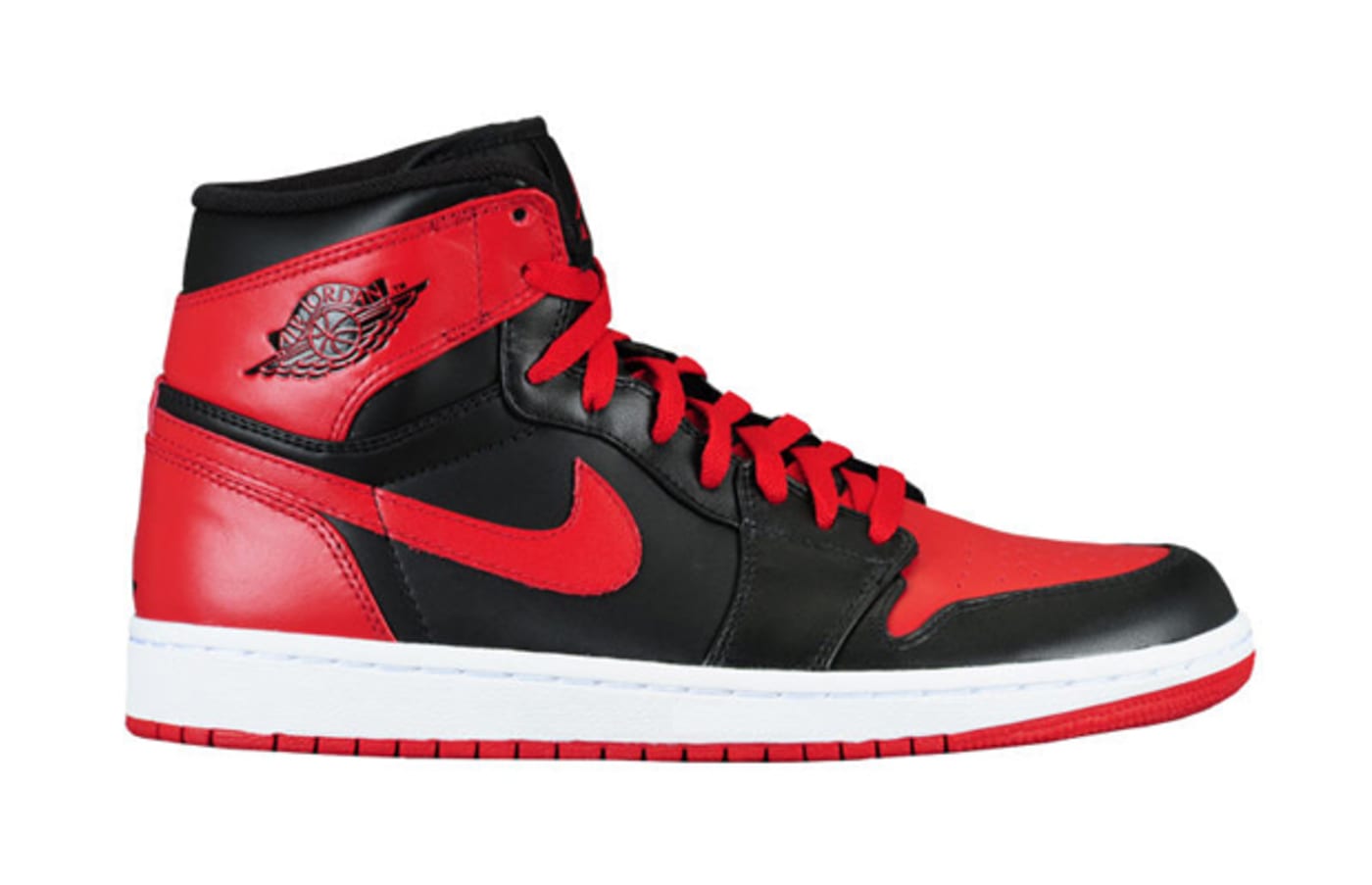
Year Introduced: 1985
The Nike Air Jordan was only revolutionary in its use of color. The Airbag was tiny, the design somewhat pedestrian. But Peter Moore’s ball and wings logo and the decidedly non-basketball black and red colorway made all the difference. Super agent David Falk wanted Michael Jordan to receive the same signature treatment as tennis players – and he got what he wanted. But it’s hard to imagine even Falk predicted the overwhelming success that would soon follow.
14. Air Safari
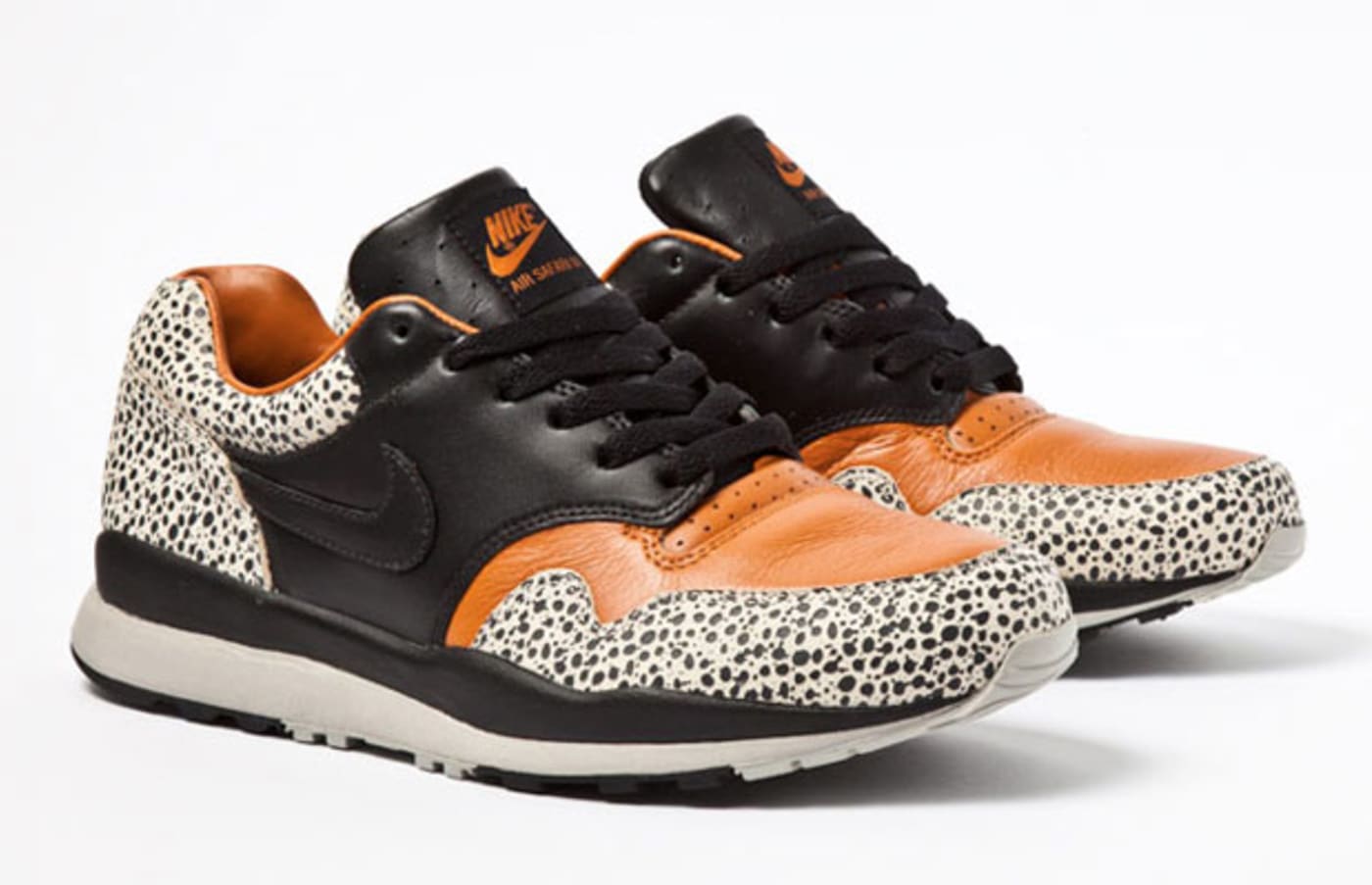
Year Introduced: 1987
Nike was founded on the basis of athletic excellence – that its shoes were made to help athletes excel – but 1987’s Air Safari seemed to represent a step away from that. In reality it was a Nike running answer to the Air Jordan, with soft deer leather complemented by a new print inspired by an exotic ostrich-leather couch. The Safari was designed by a young architect named Tinker Hatfield, who would soon bring a similar aesthetic to the Air Jordan line. Convergence.
13. Air Max 90
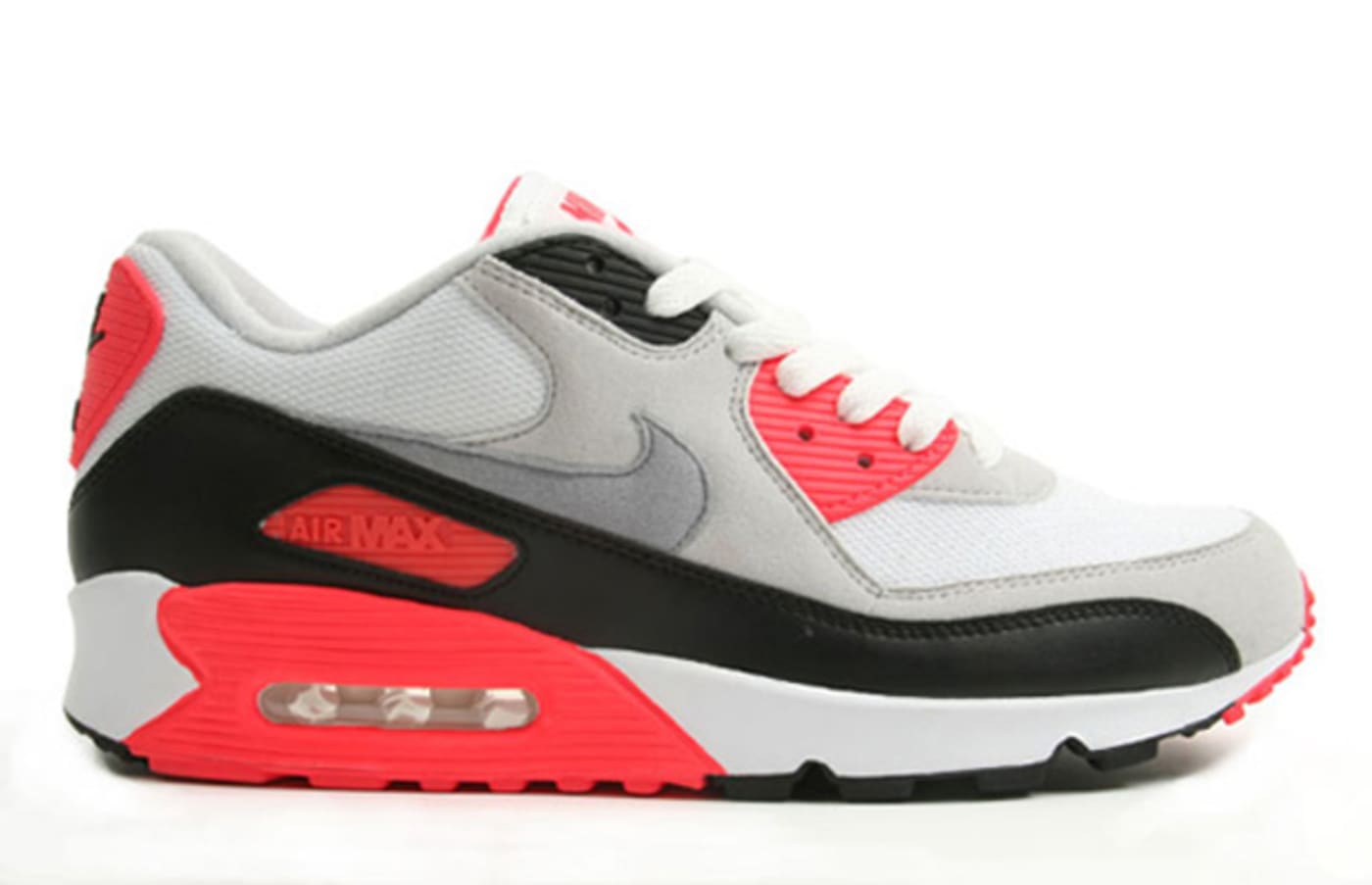
Year Introduced: 1990
Former architect, now sneaker design legend Tinker Hatfield rarely misses the mark. The Air Max 90 isn’t his best. Nor is it the pinnacle of Air Max design. However, the color-that brilliant Infared-continues to capture the imagination of every sneakerhead and the mudguard wrapping the toe proposed a new dawn of running durability. Fun additional fact: Before designing the Air Max 90, Hatfield took a sabbatical and traveled around the world. Needless to say, he returned home rejuvenated and inspired.
12. Air Presto
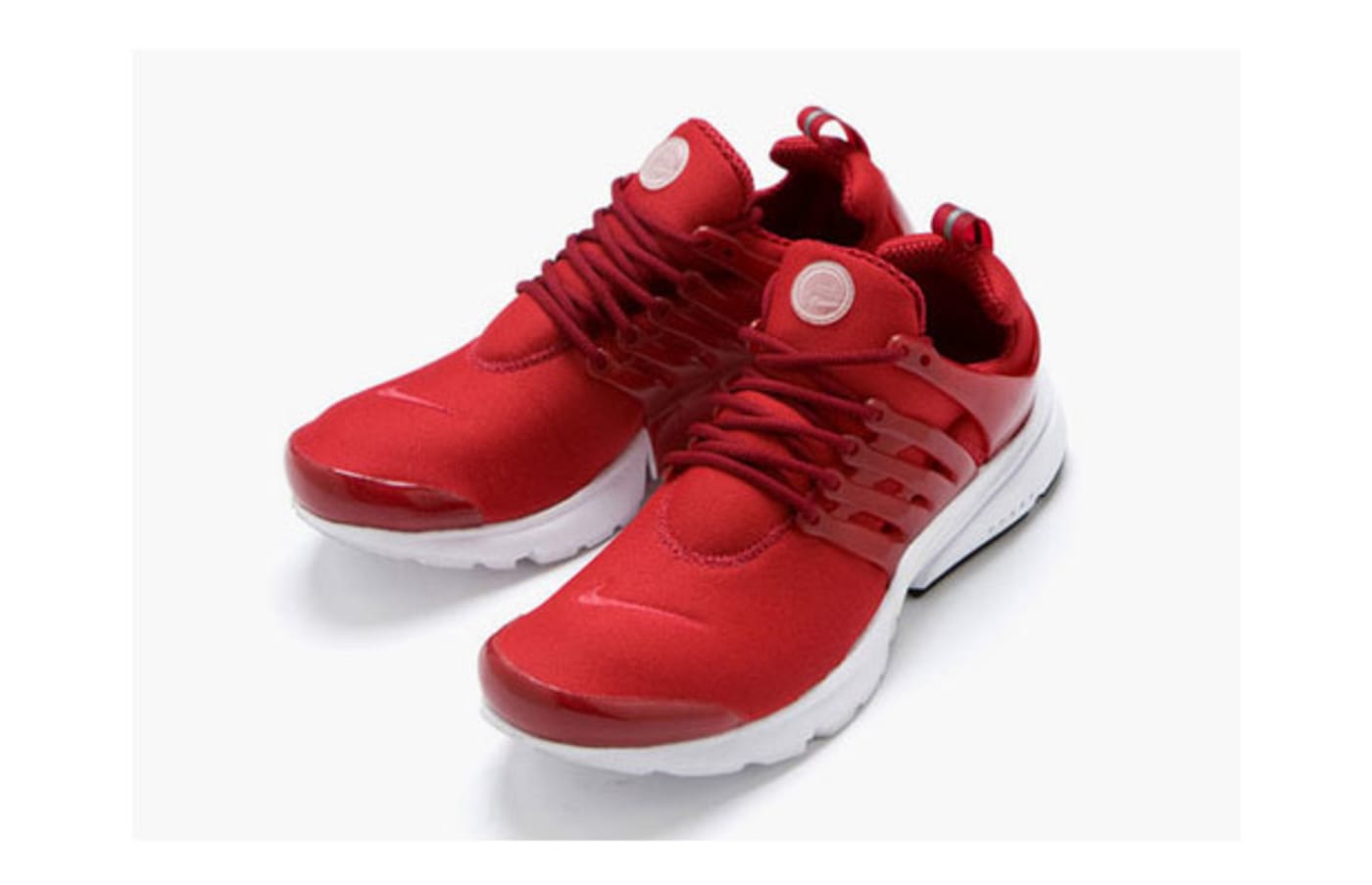
Year Introduced: 2000
Why can’t sneakers be more like t-shirts? This was the question the Air Presto attempted to answer. Offered in sizes from S to XXL as opposed to the normal numeric designations, the Presto line immediately became a lounging (and airline travel) staple. The most x-rayed shoe in history? Probably/
11. Cortez
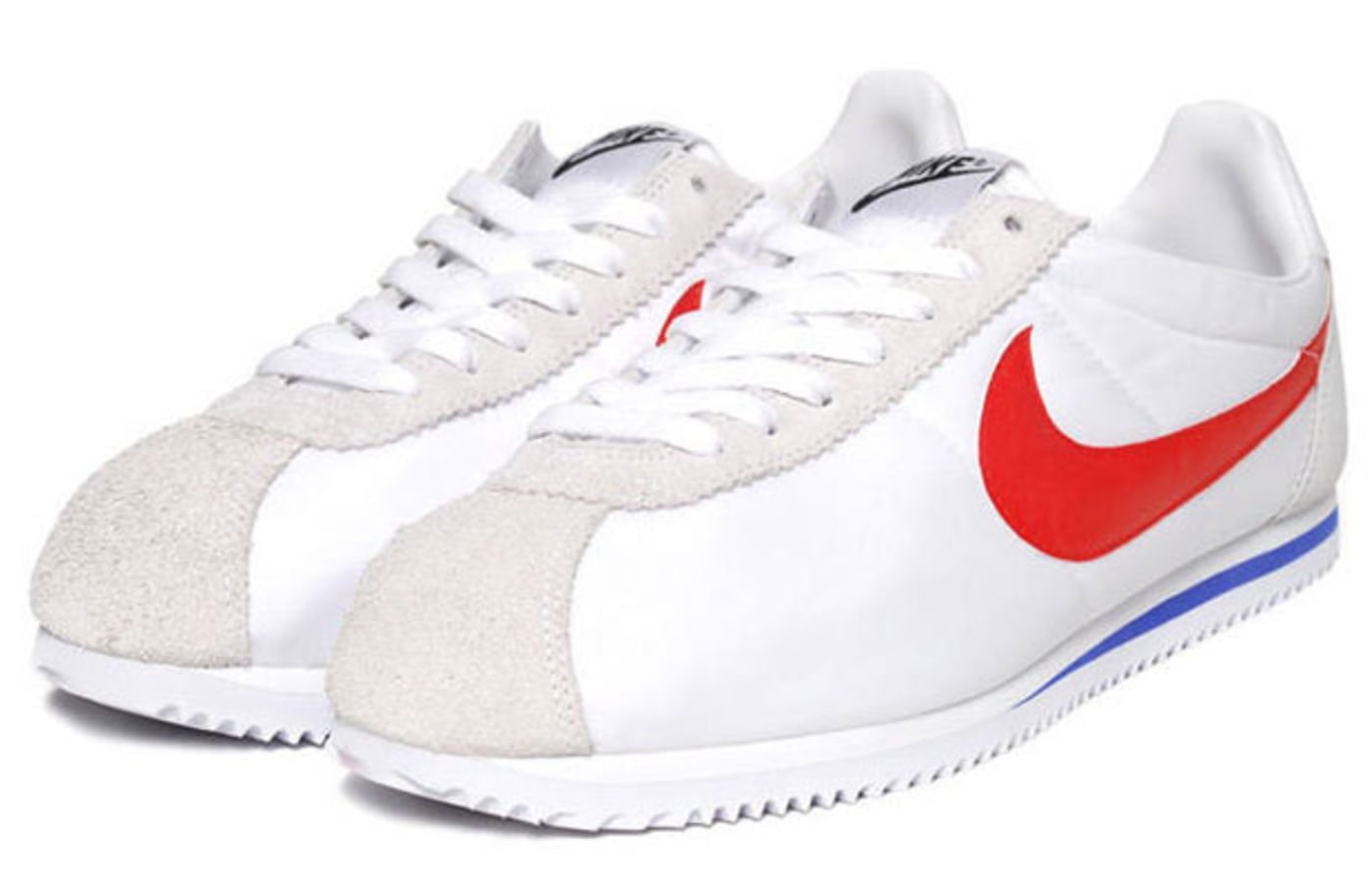
Year Introduced: 1972
Without the Cortez, none of the rest of this even happens. A Bill Bowerman reworking of the Onitsuka Tiger Corsair, the heel-wedge equipped Cortez became the first Nike-branded running shoe. Nike was awarded the rights to the shoe in an early lawsuit, and the rest is history.
10. Air Jordan IV
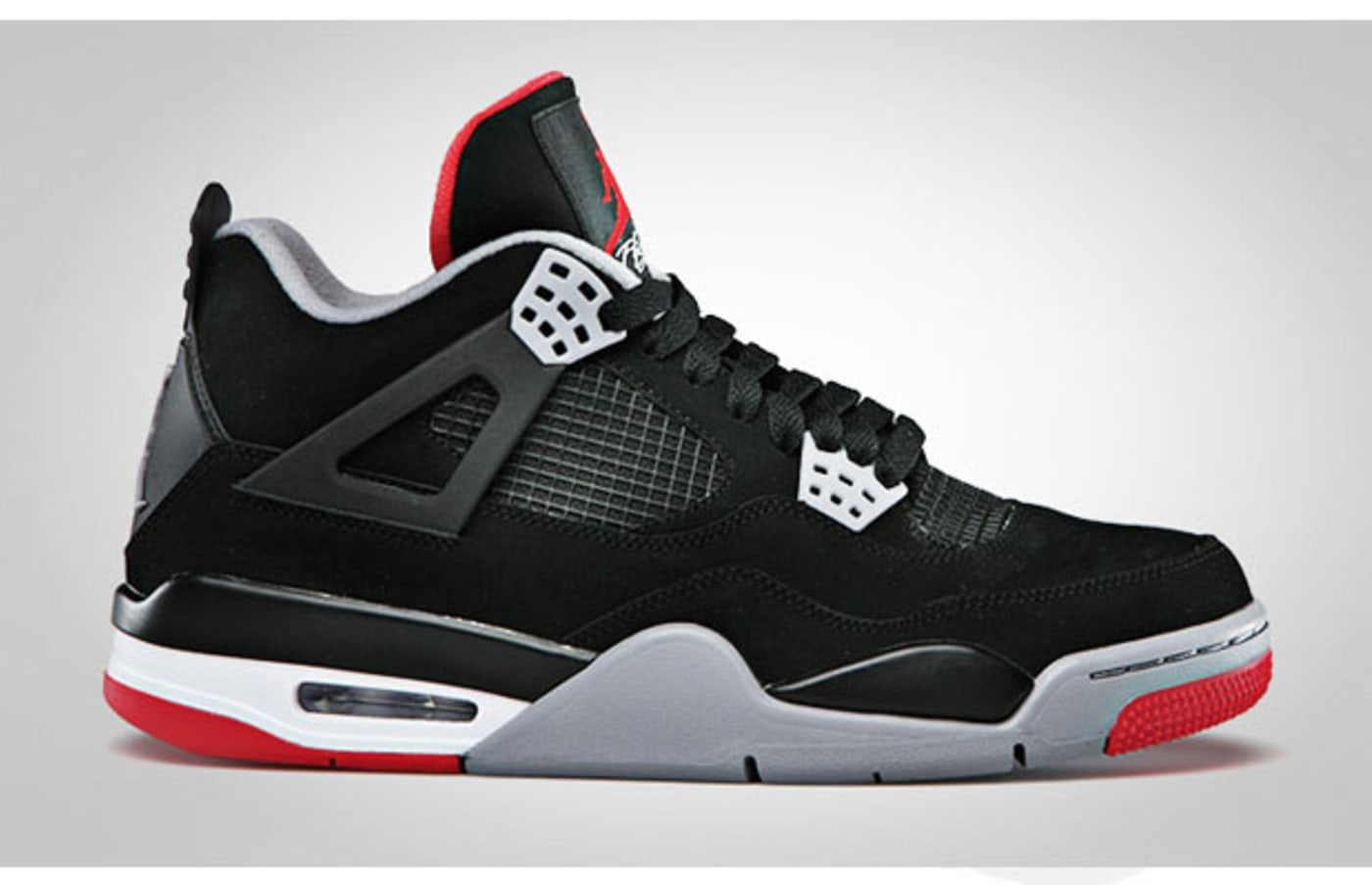
Year Introduced: 1989
How do you follow up an all-time classic? Tinker Hatfield’s second Air Jordan picked up where the first left off, with a similar silhouette and lacing pattern. With nubuck and mesh in place of the IIIs leather it was lighter and more ventilated, and the plastic “wings” on the sides alluded to flight – which was embroidered right on the tongue.
9. Dunk
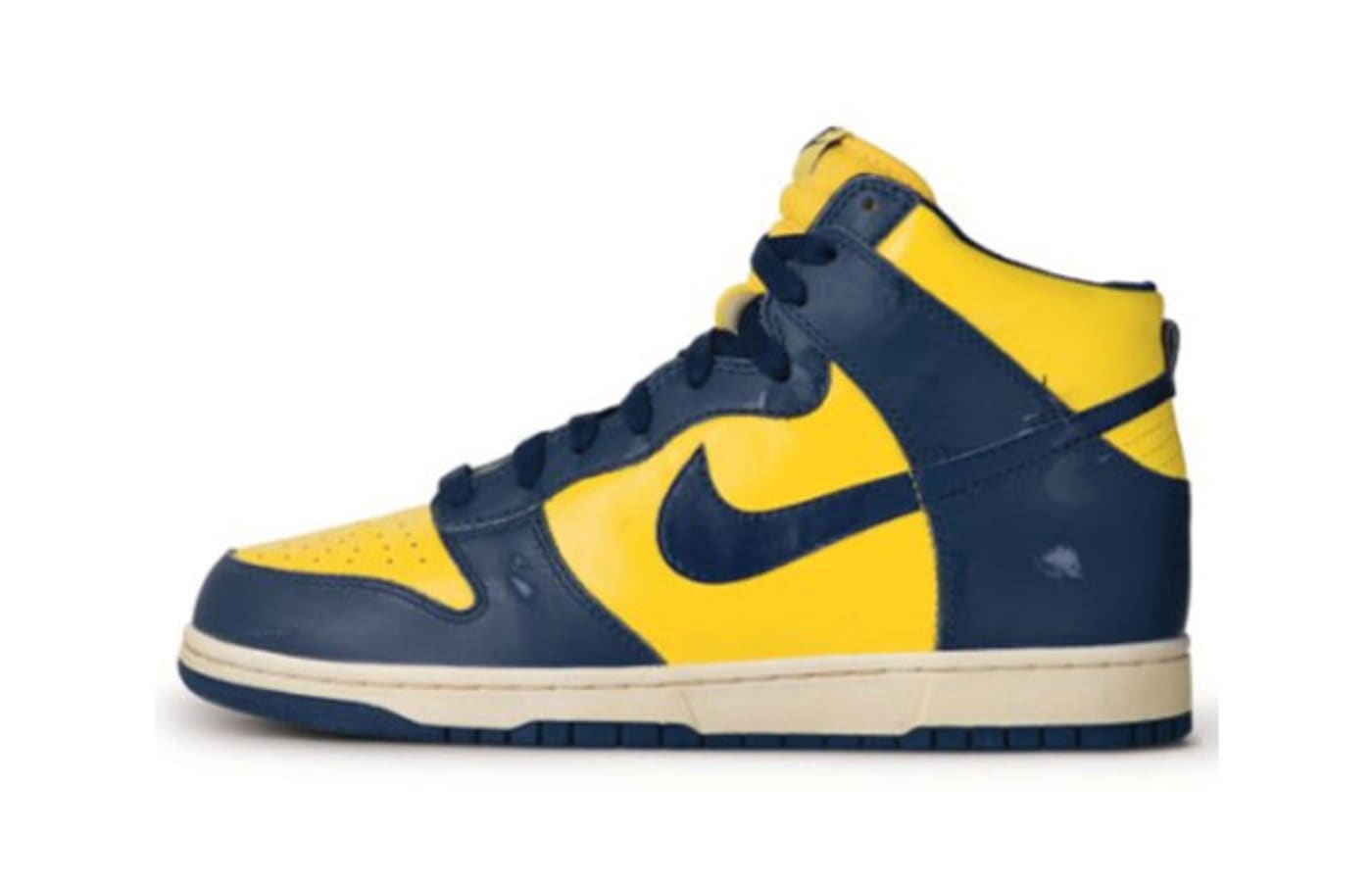
Year Introduced: 1986
Be True To Your School. Nike had been lacing elite college programs for years before 1986 (thank you, Sonny Vaccaro), but the Dunk program represented an attempt to institute some team individuality. Schools like St. Johns, Iowa, Kentucky, Syracuse and Villanova got their very own team colorways of the same shoe – the Nike Dunk, which played off the extraordinarily popular Air Jordan. Decades later, the Dunk was revived as a skate shoe, becoming one of the first sneakers to achieve iconic status in two completely disparate disciplines.
8. Air Jordan V
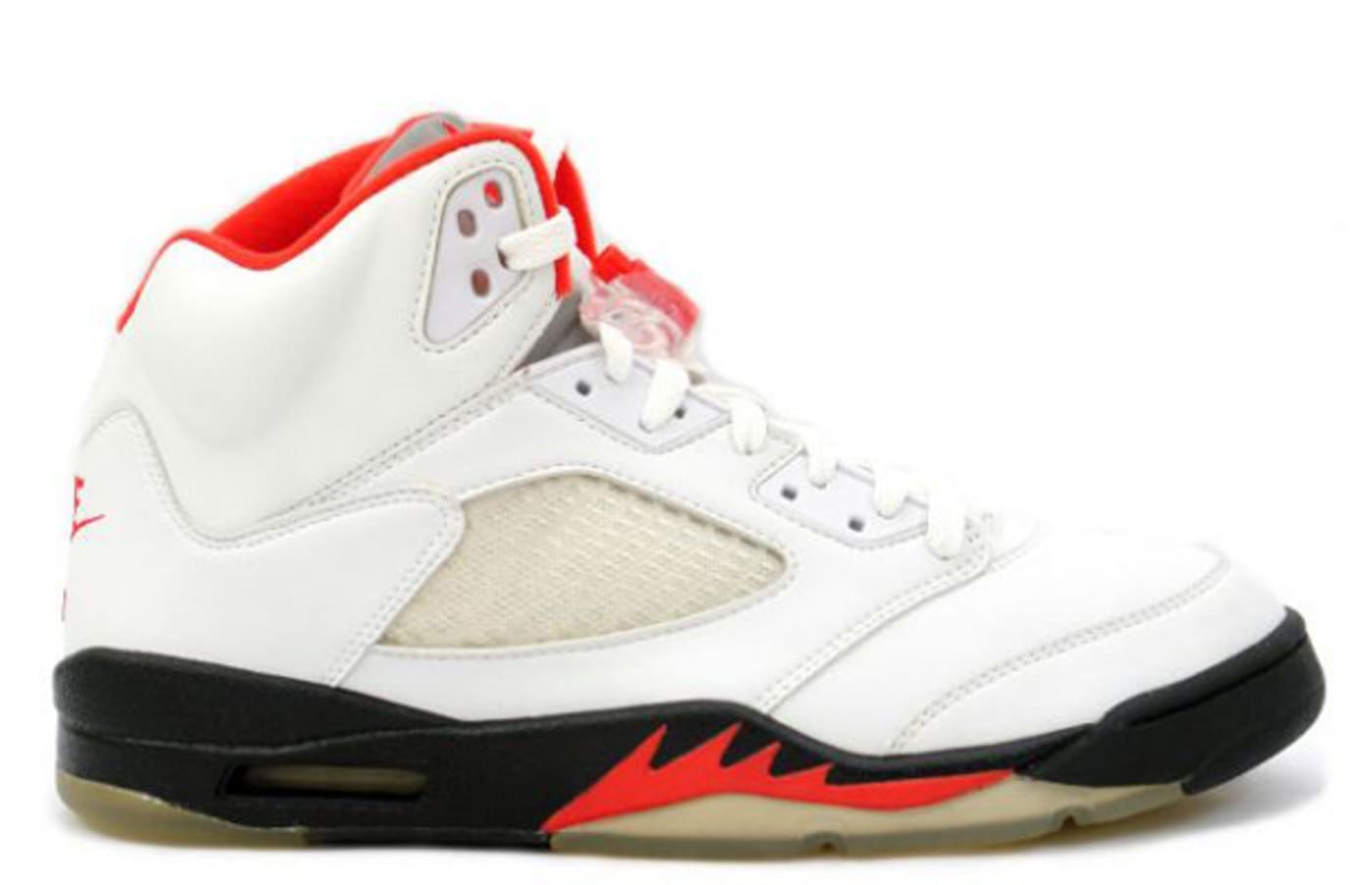
Year Introduced: 1990
The Air Jordan V not only embraced flash, it embodied it, what with its 3M reflective tongue and clear rubber outsoles. Inspired by the P-51 Mustang fighter plane, the Air Jordan V was built to attack. And its asymmetrical ankle collar – higher inside than out – found its way onto sneakers in mutiple disciplines.
7. Air Huarache
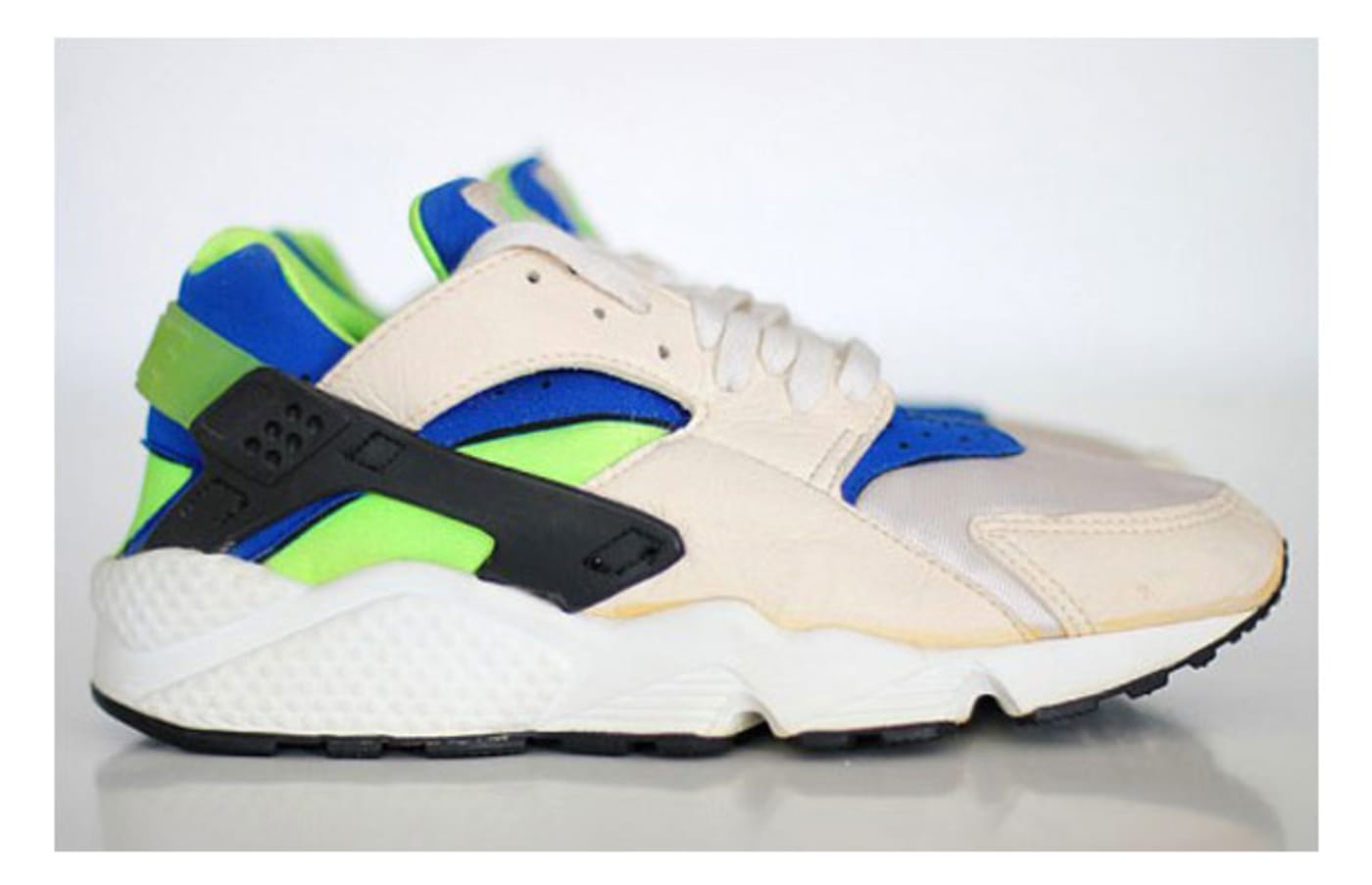
Year Introduced: 1992
Inspired by Mexican sandals – and Nike predecessors such as the Bermuda and the Air Flow – Tinker Hatfield turned to neoprene to create a lightweight, foot-hugging runner that offered plenty of lacing options and a highly distinctive look. Trainers and basketball shoes would follow, but it was the runner that led the way.
6. Air Jordan XI
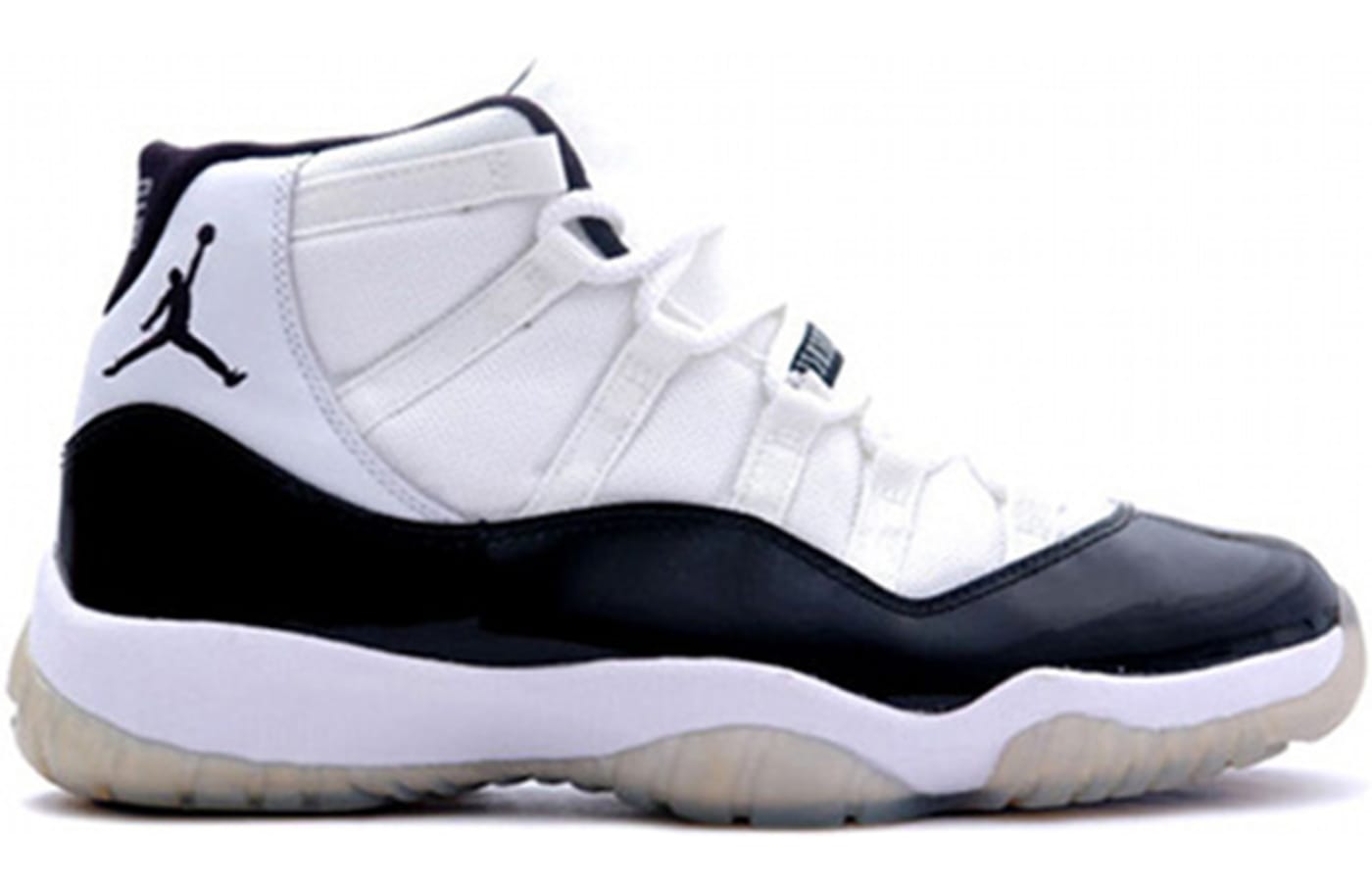
Year Introduced: 1995
When Michael Jordan retired, no one wanted to believe it was final – least of all Tinker Hatfield, who dutifully continued designing the Air Jordan line despite the directives of Nike higher-ups. And it’s a good thing that he did, or else the Air Jordan XI may have never happened. Hatfield took inspiration from a lawnmower and added a patent leather rand for both protection and flash. A clear outsole revealed a full-length carbon springplate – a Nike first – and ballistic mesh complemented the patent leather perfectly.
5. Air Trainer 1
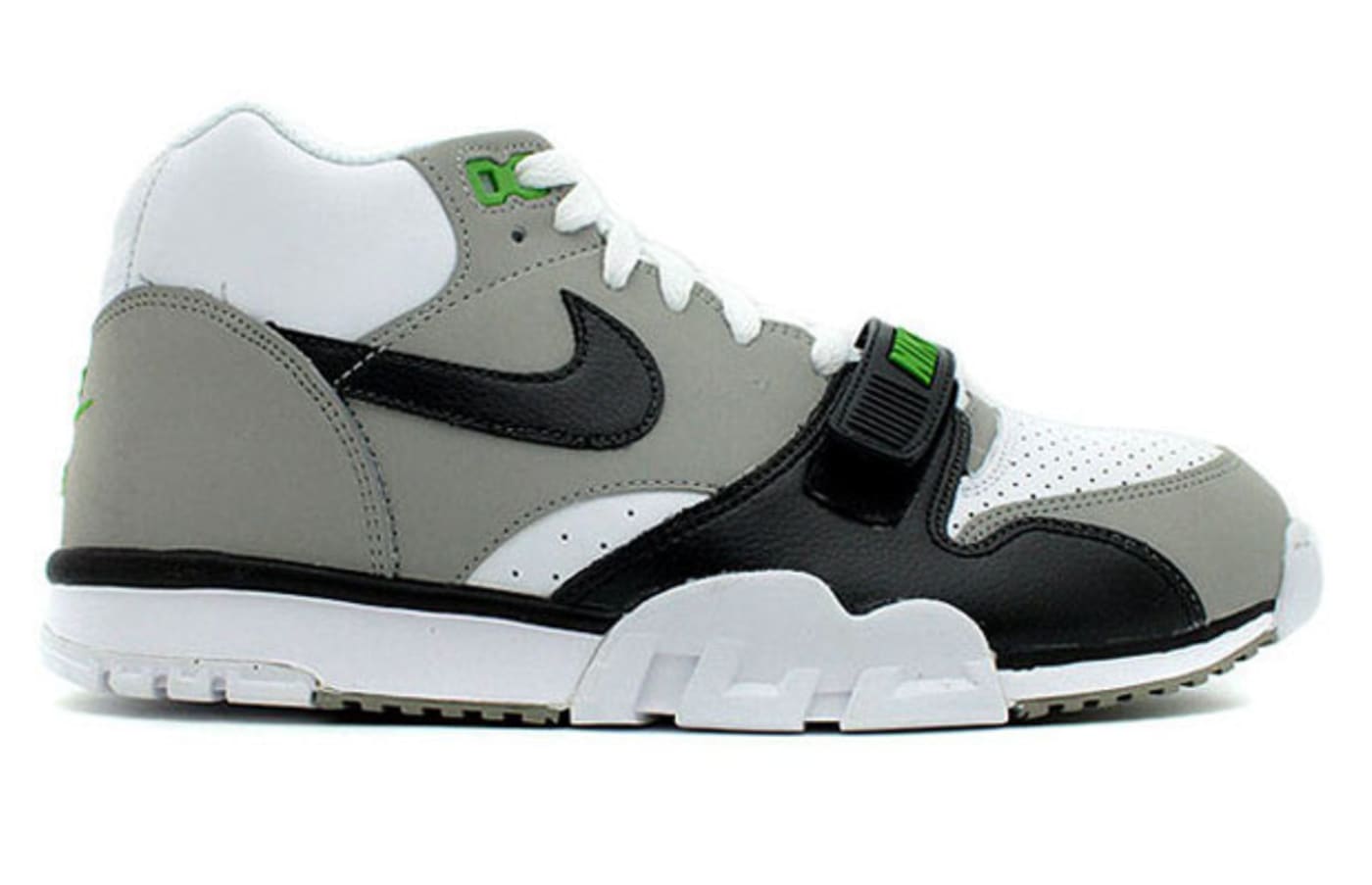
Year Introduced: 1987
The Nike Air Trainer 1 wasn’t the exactly the first multi-sport sneaker – pretty much any sneaker designed before 1970 filled that role – but it was one of the first designed expressly to be a multi-sport sneaker. Tinker Hatfield developed a shoe that would be equally at home on the courts or in the gym, and John McEnroe proved its worth by essentially adopting it as his signature shoe. The “chlorophyll” colorway remains a grail to many despite several re-releases.
4. Air Max 95
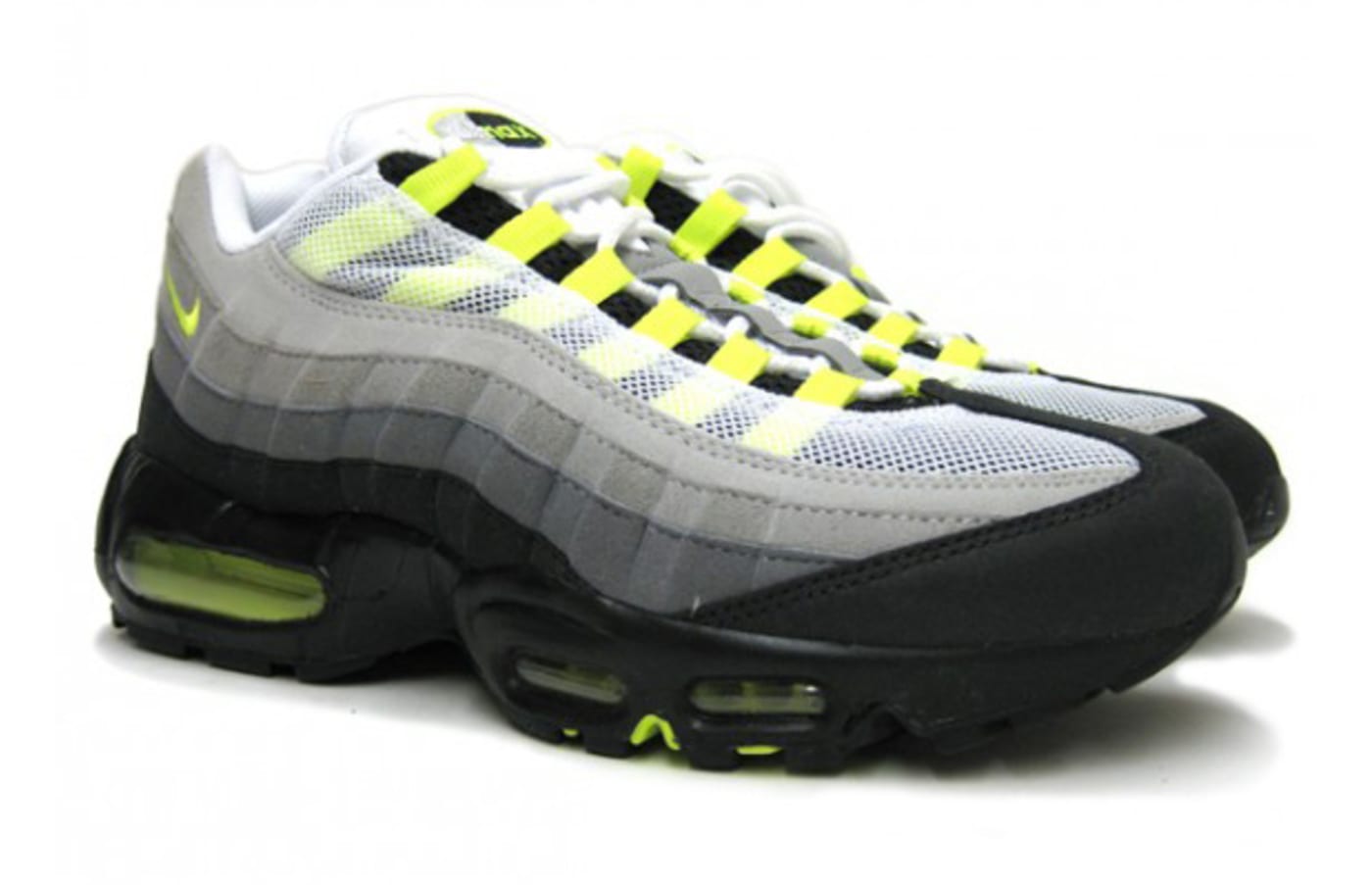
Year Introduced: 1995
Sergio Lozano turned to the human body for inspiration when it came to designing the Air Max 95, and his creation has since taken its rightful place in the pantheon of human creations, period. The organic-looking design is of course best represented in the initial grey/neon gradient colorway, but with literally hundreds (if not thousands) to choose from, it’s tough to find one that doesn’t look amazing.
3. Air Jordan III
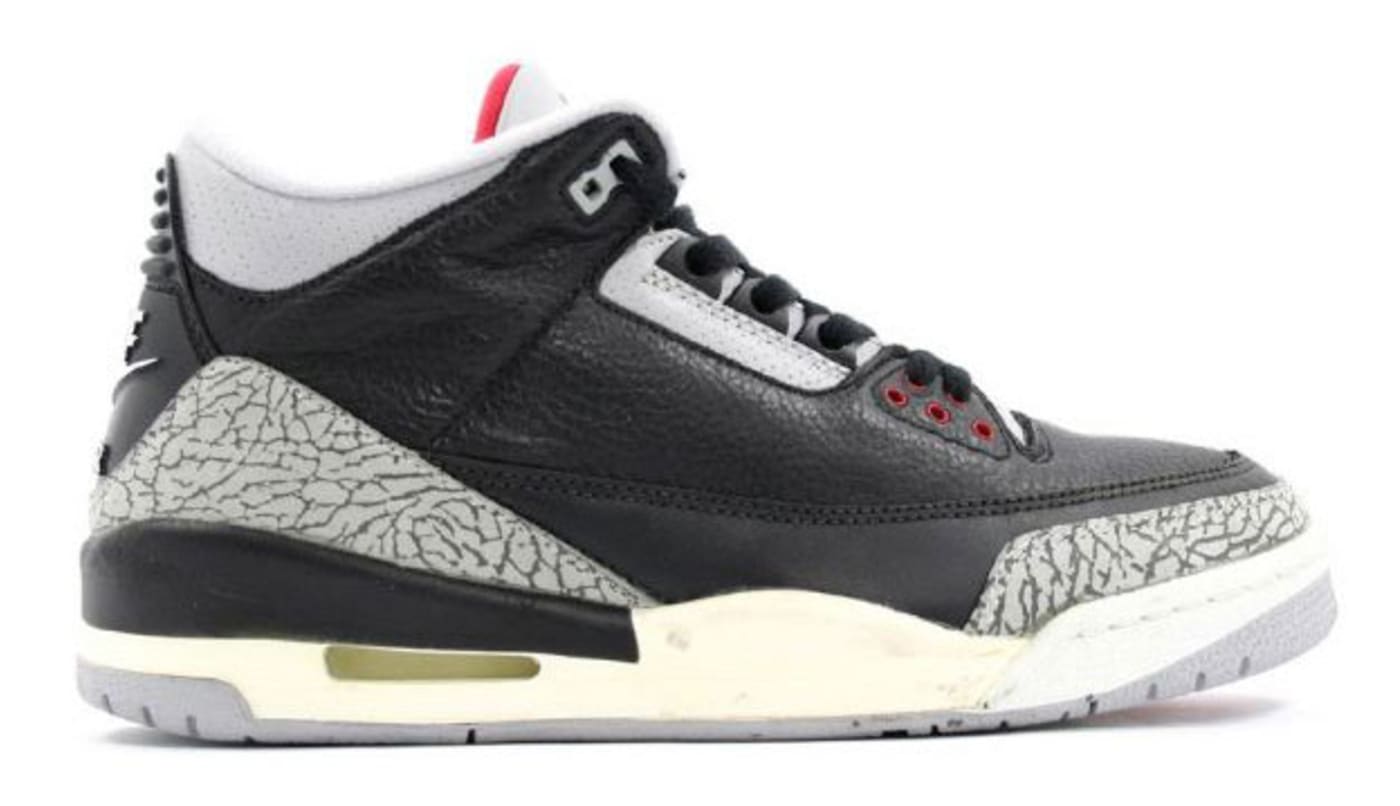
Year Introduced: 1988
Tinker Hatfield’s first Air Jordan may well stand as his best. The III introduced Visible Air, elephant print and the Jumpman to the Air Jordan line, all of which are still signifiers to this day. As the story goes, Jordan was somewhat dissatisfied with Nike at the time in part due to the departure of some of his most-trusted execs, and it was Hatfield and the III that kept him in the fold. If that is indeed the case, no single sneaker has ever had as large an impact on the sporting landscape.
2. Air Force 1
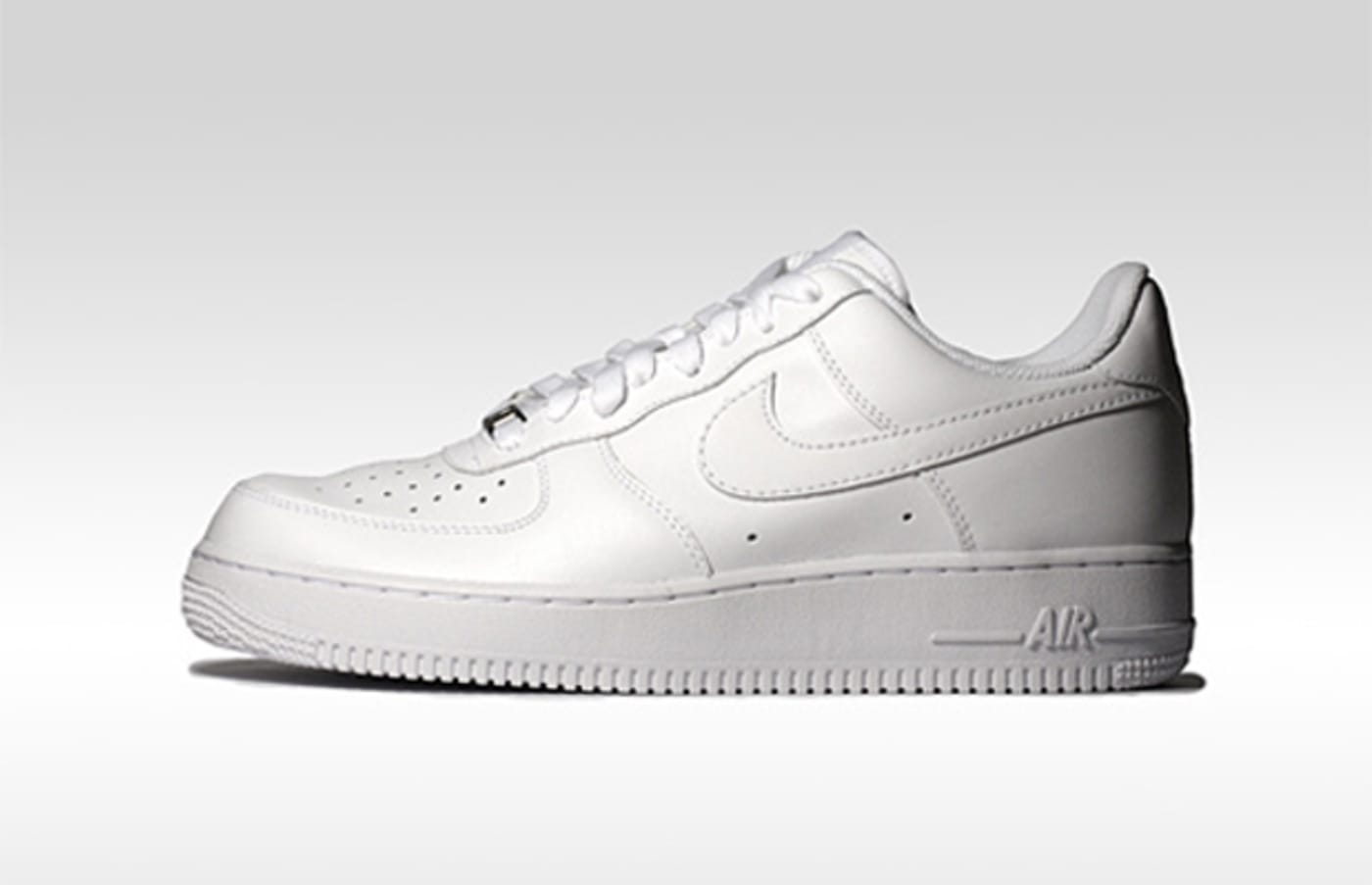
Year Introduced: 1982
The first Nike basketball sneaker to feature the then new Air cushioning system, 1982’s Bruce Kilgore designed Air Force 1 was a shining beacon of functionality. During the design process, Nike designers played a game of basketball with scissors on the sideline, and every few minutes they had to cut a piece off of the shoe to see what was essential and what wasn’t. If the shoe became unplayable, the player dropped out. Practical experiments like this helped in the development of one of the most beloved sneakers of all time, often imitated but never duplicated.
1. Air Max 1
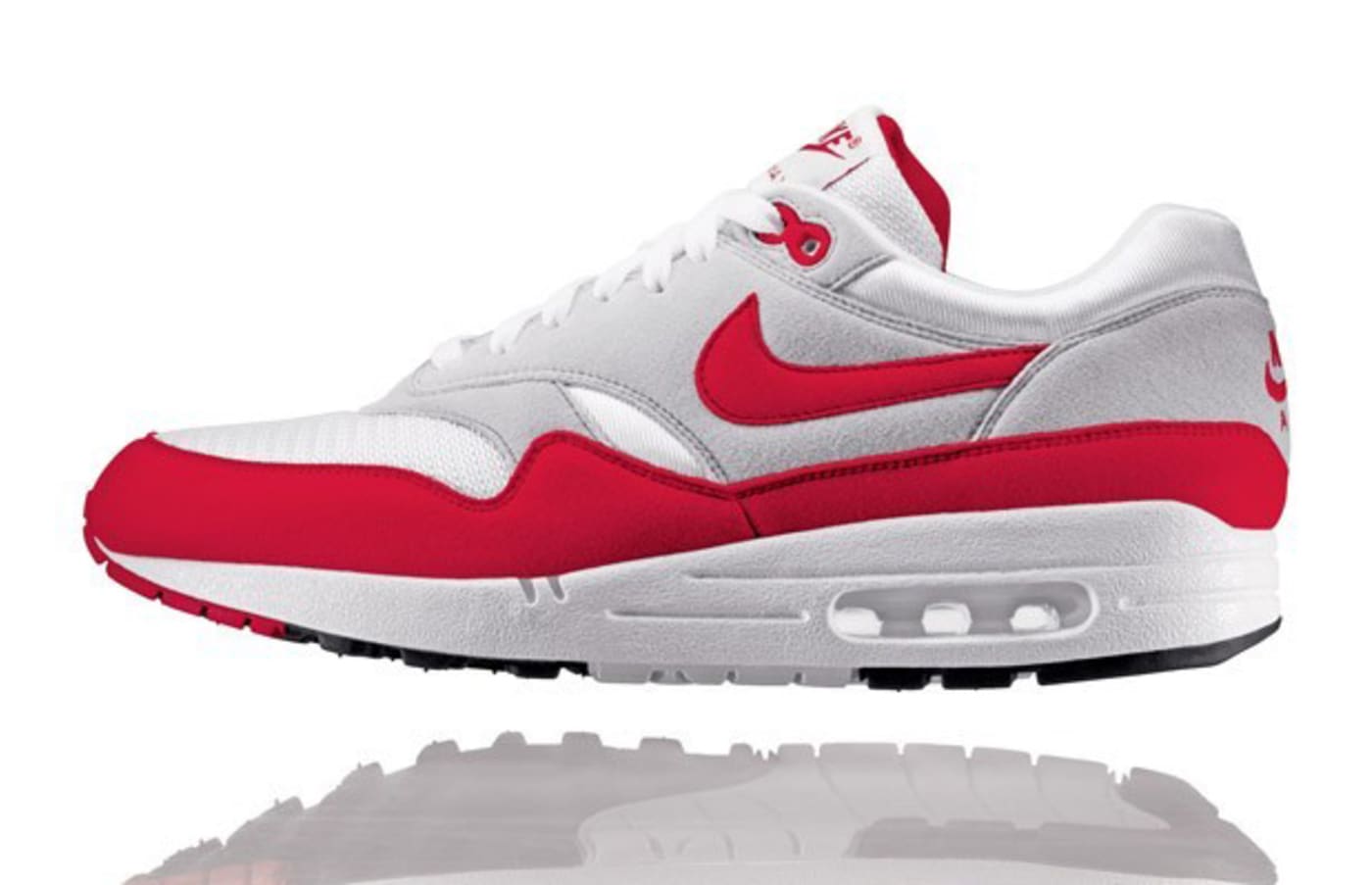
Year Introduced: 1987
The Nike Air Max stands as Nike’s ultimate achievement, one of the most successful cases of form dictating function in sneaker history. As the Air bag grew bigger, designer Tinker Hatfield was faced with a problem – how to fit the larger Air into the traditional foam midsole? A trip to Paris, and a look at the Centre Georges Pompidou, gave him an idea. Why not cut the foam away to expose the Air? The Centre Pompidou exposed all of what was normally hidden, so would the Air Max runner. Nike’s signature technology became visible, and nothing in the sneaker world would ever be the same again.

